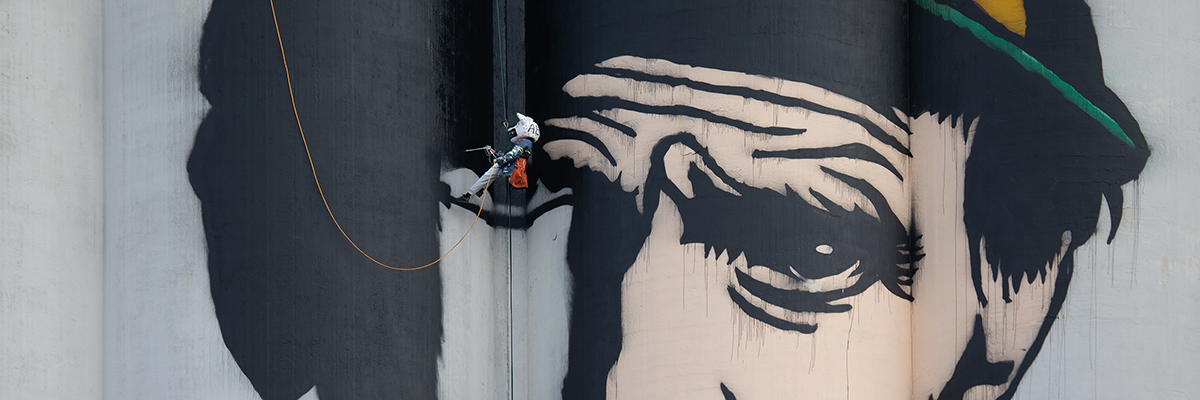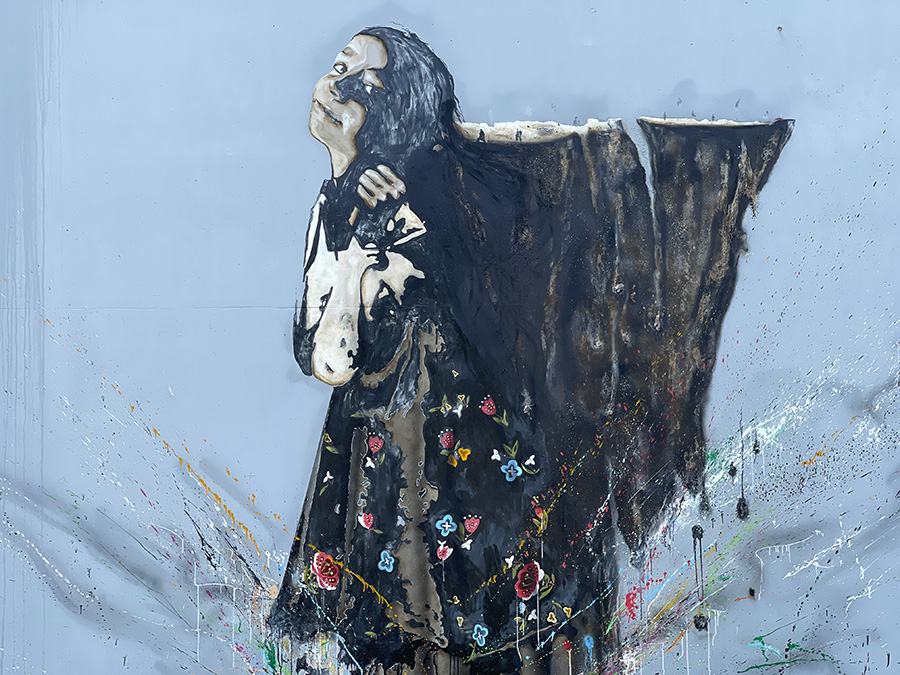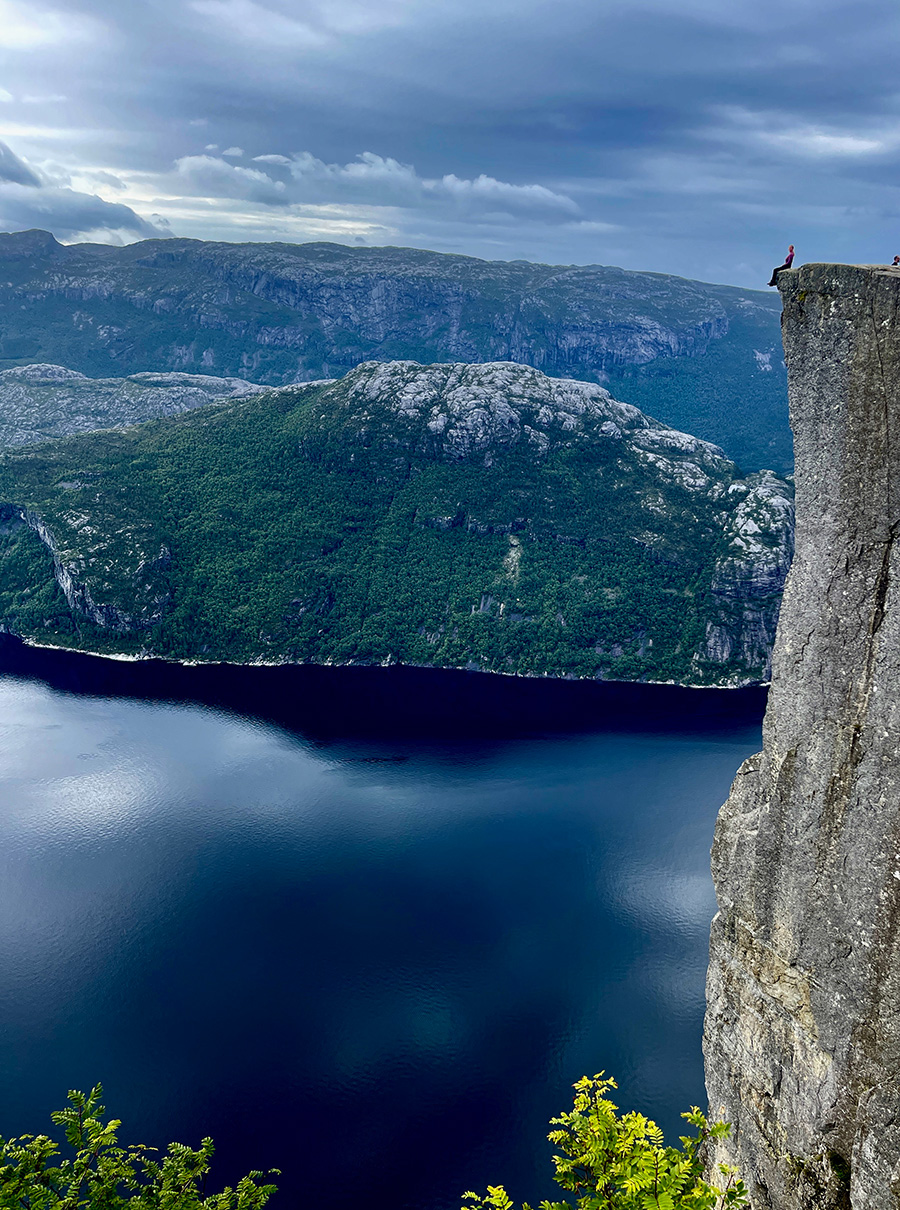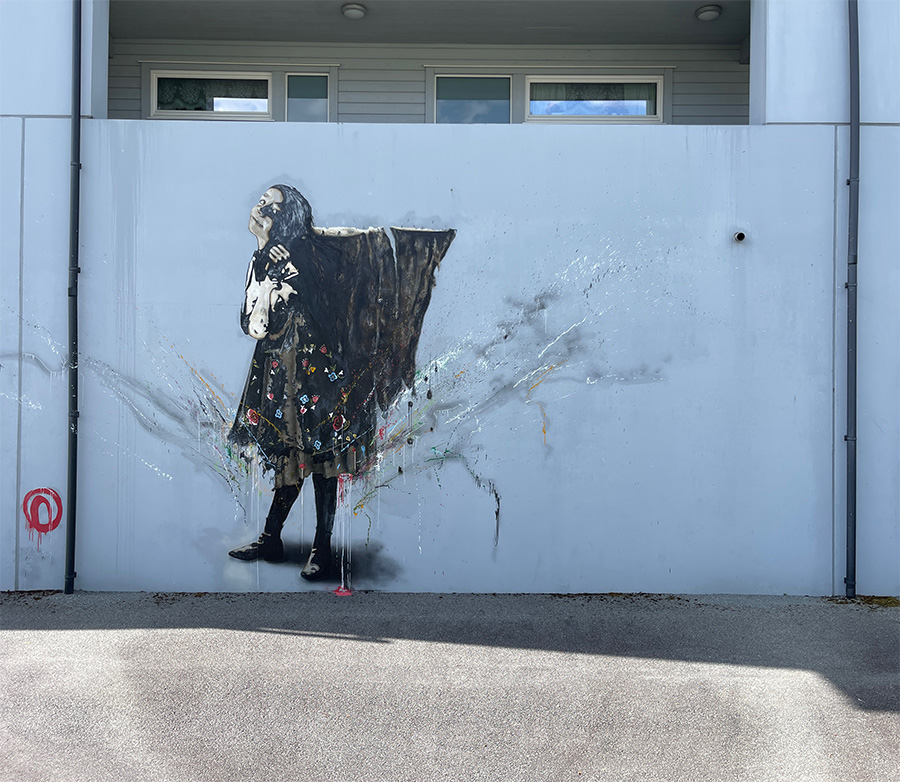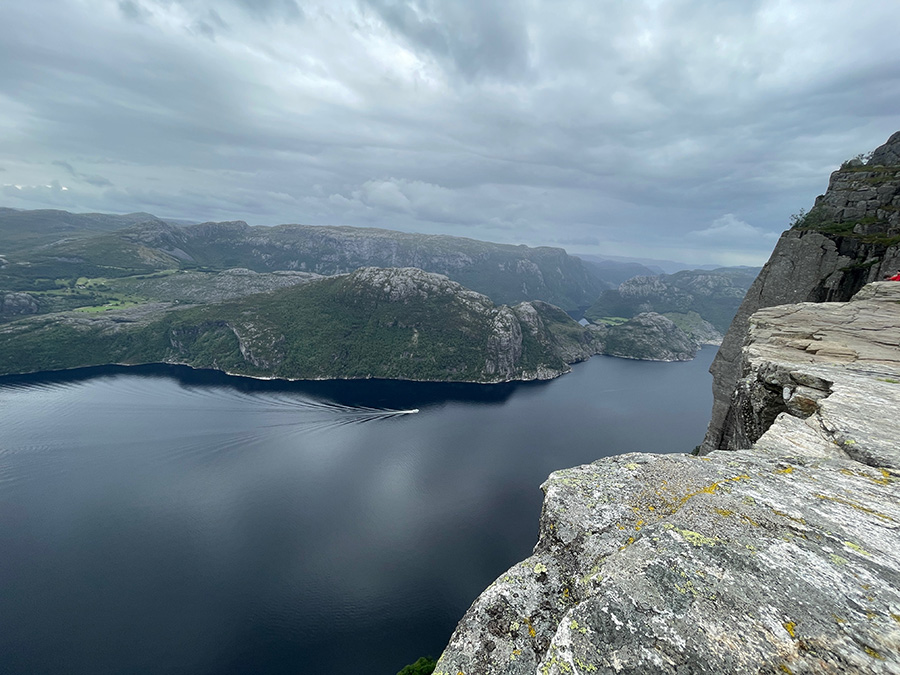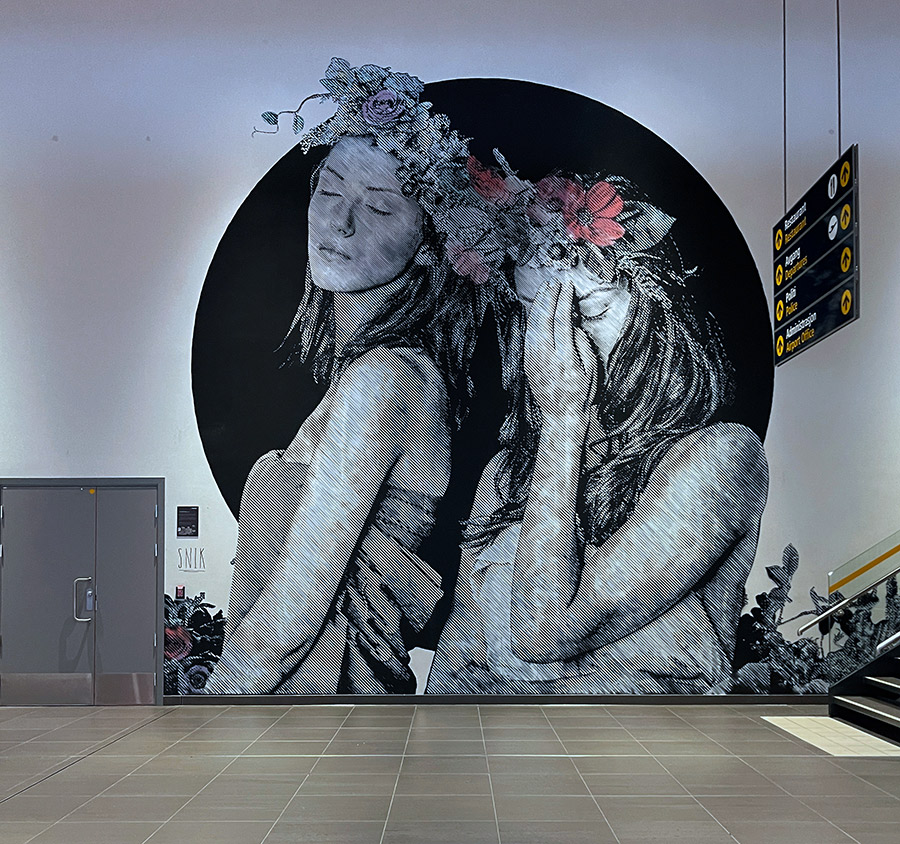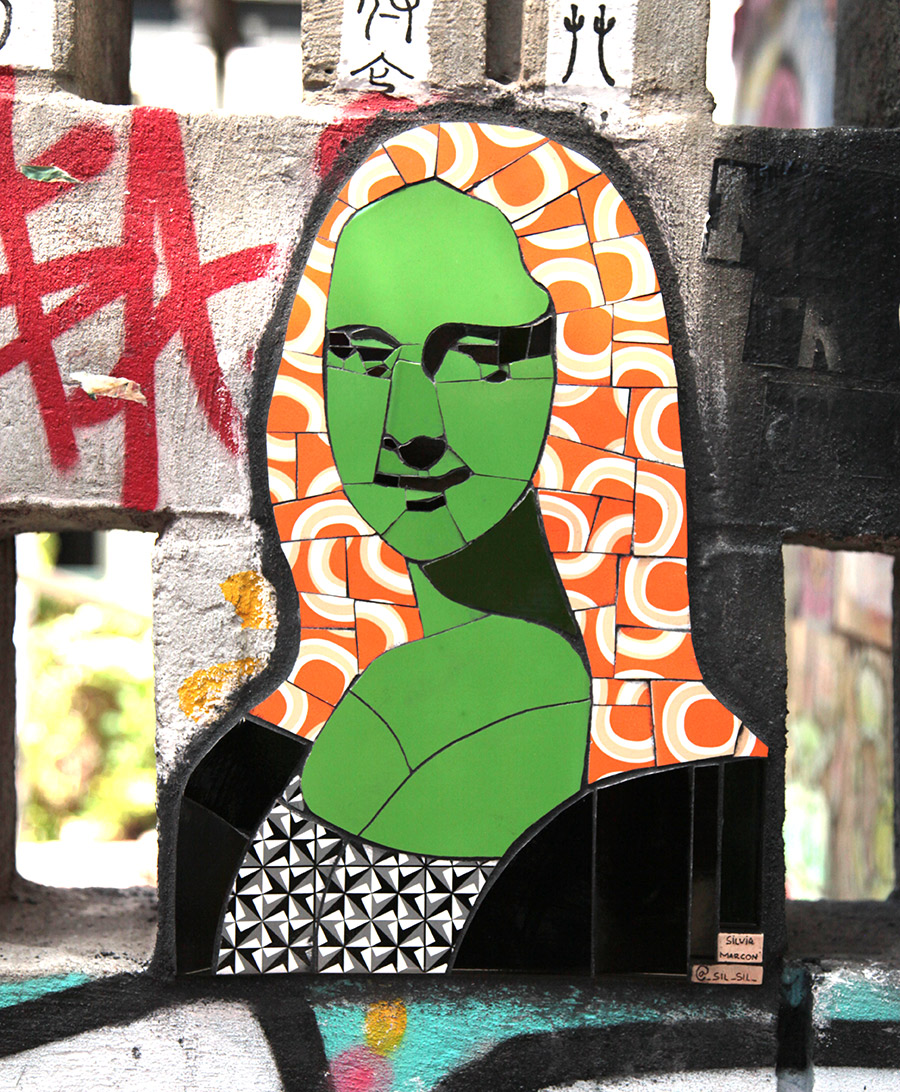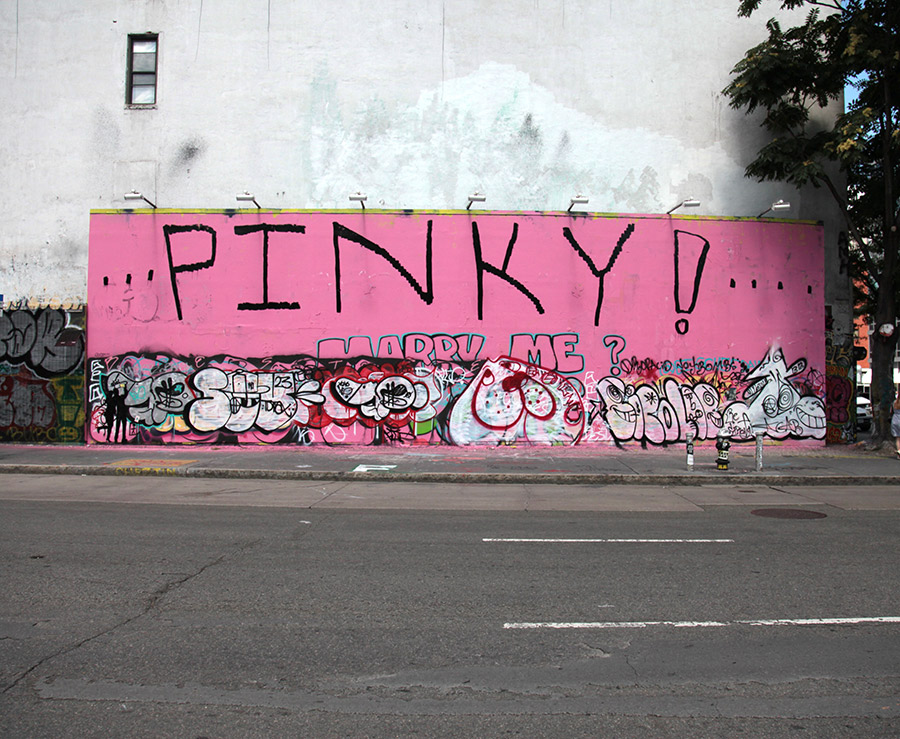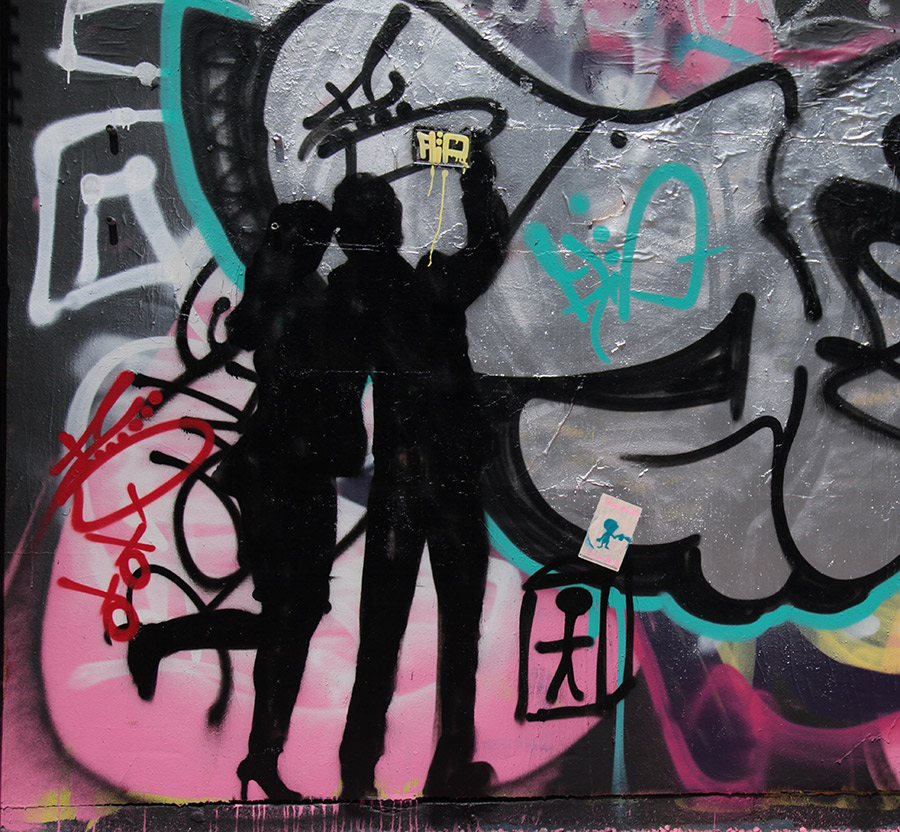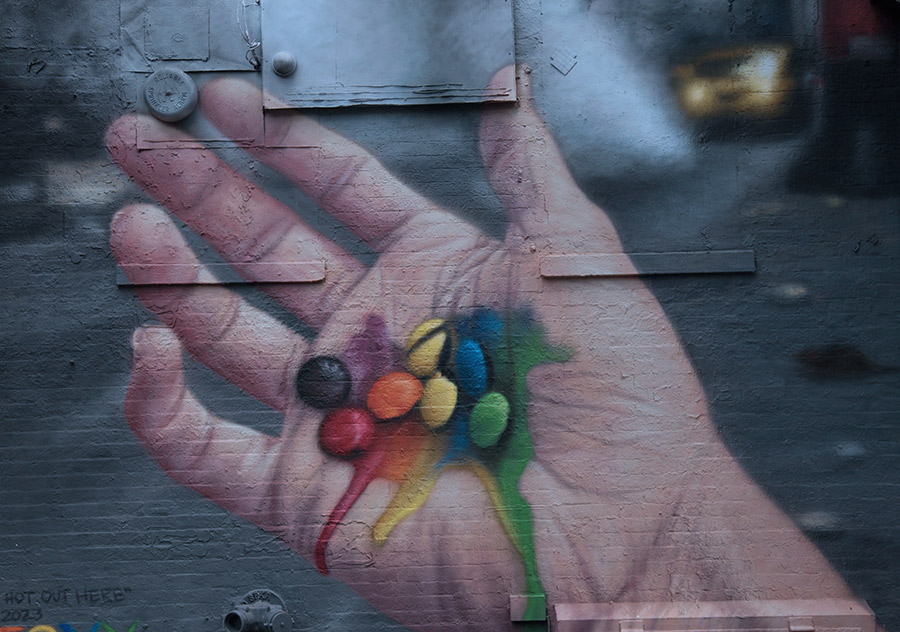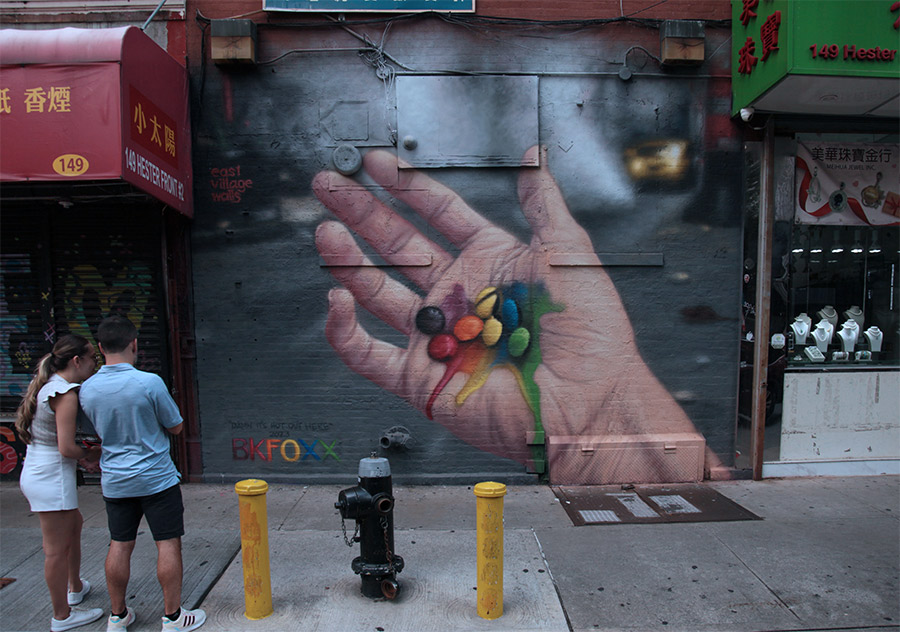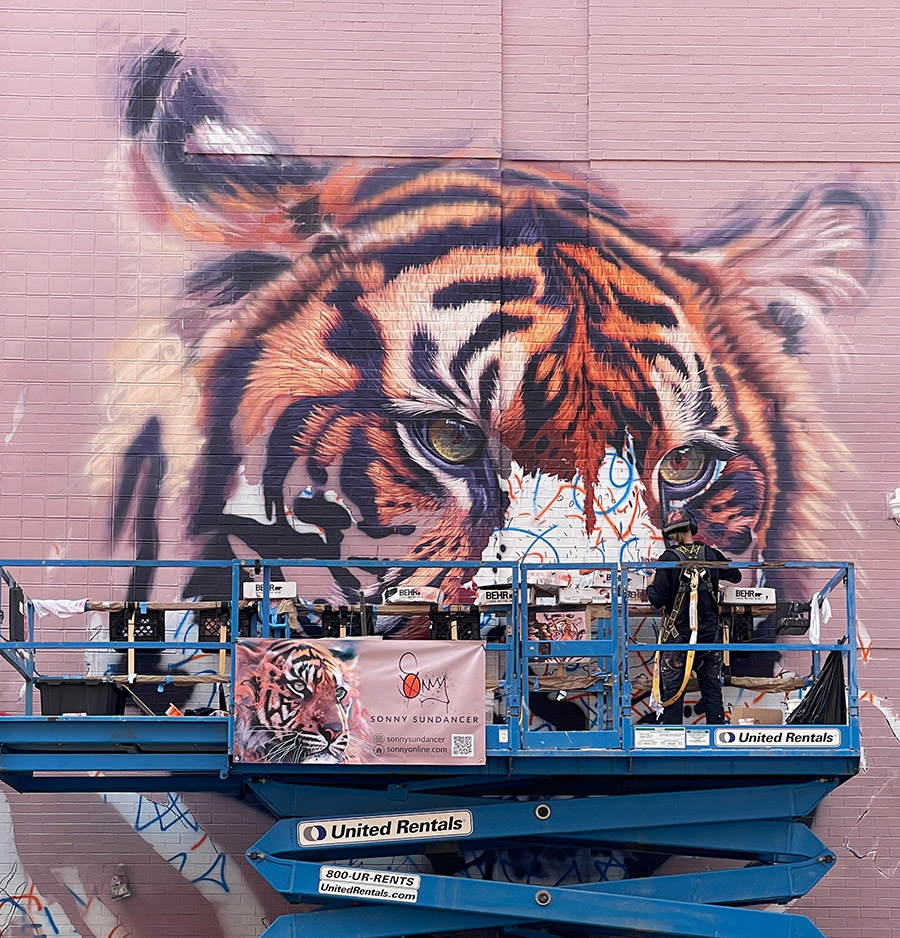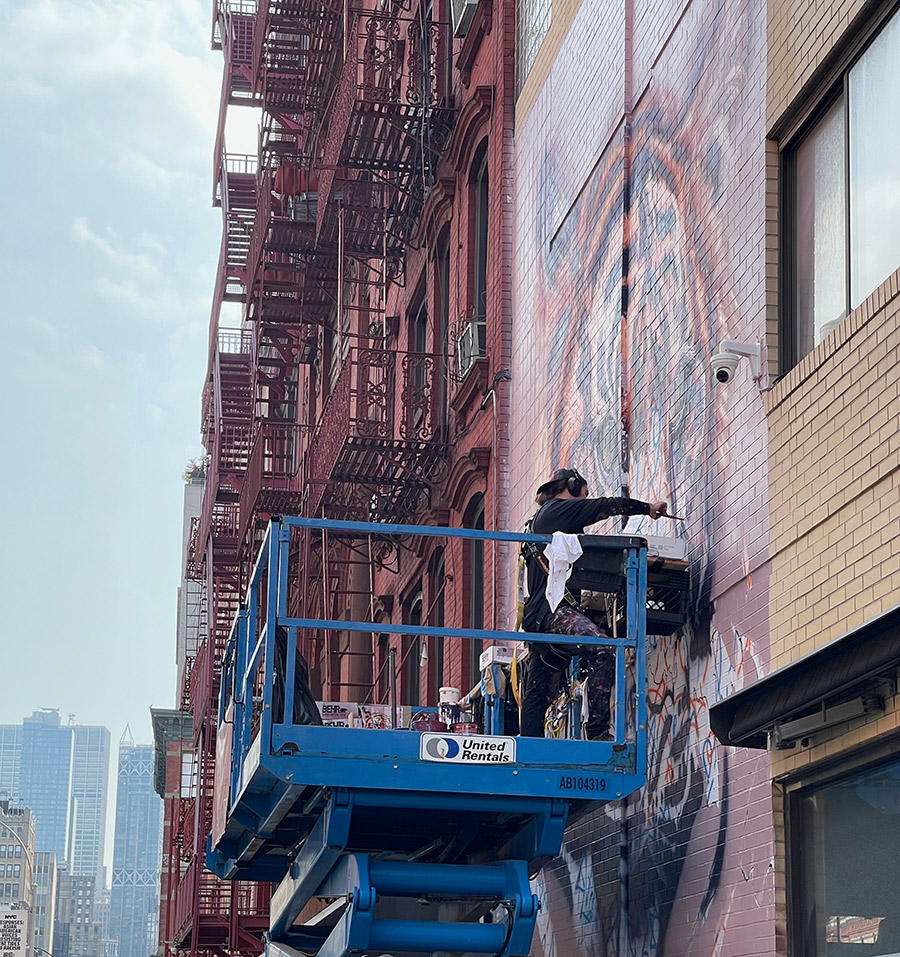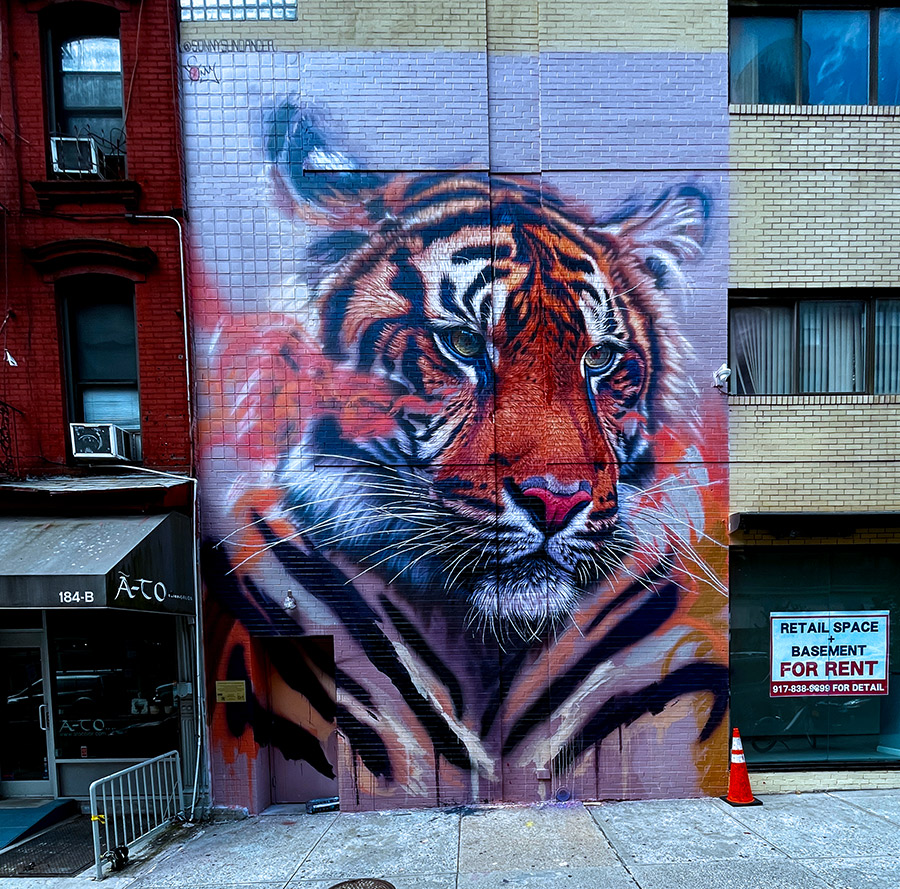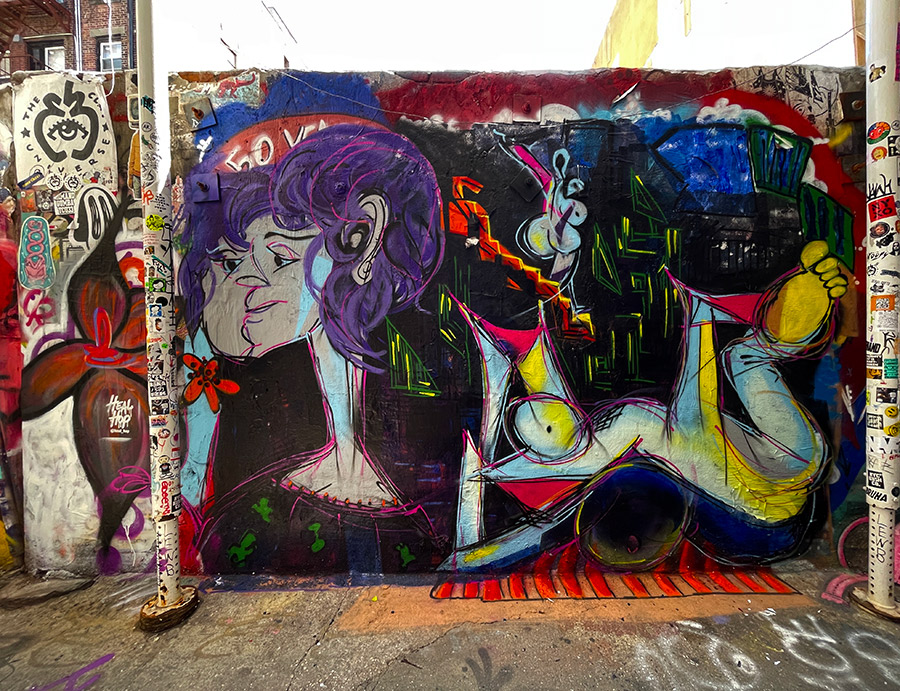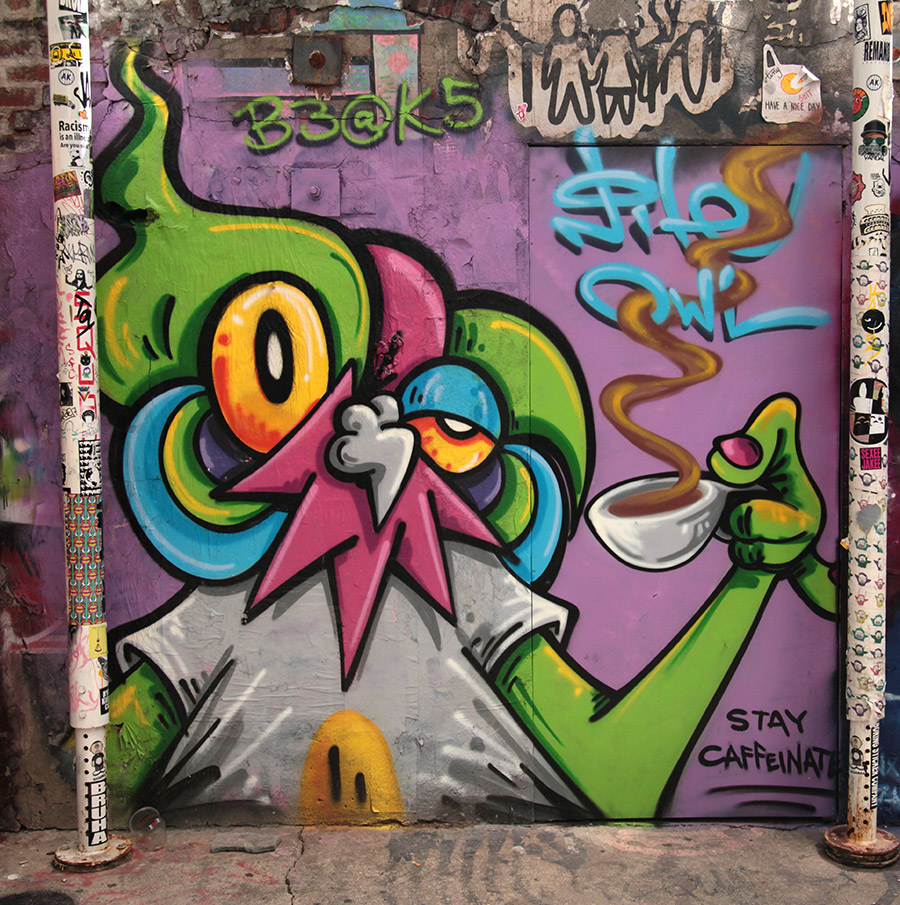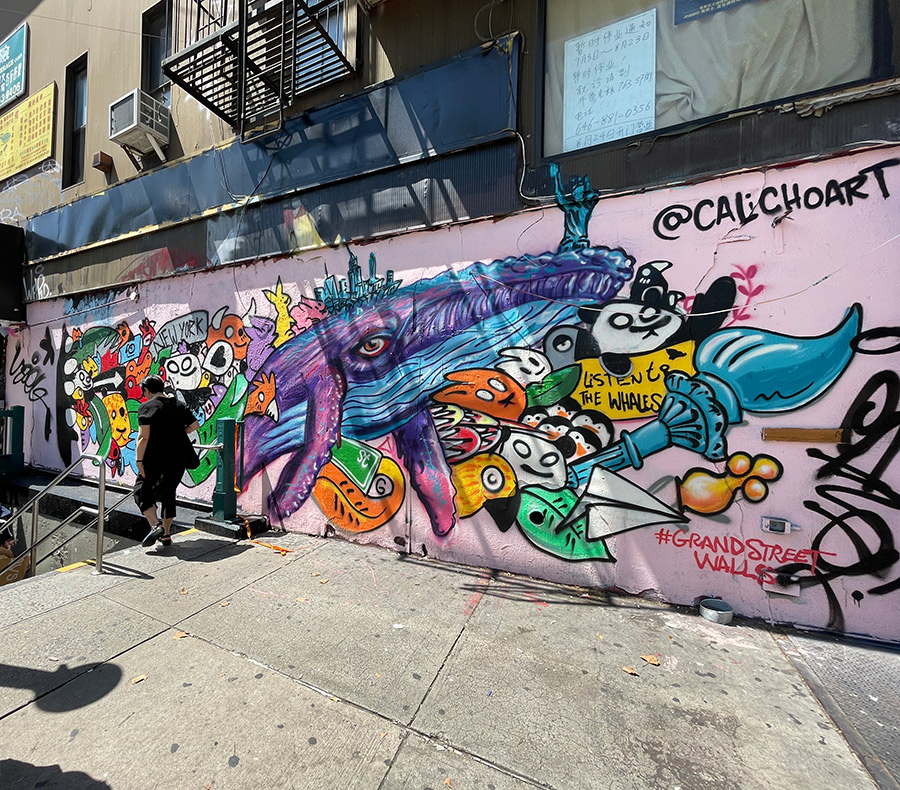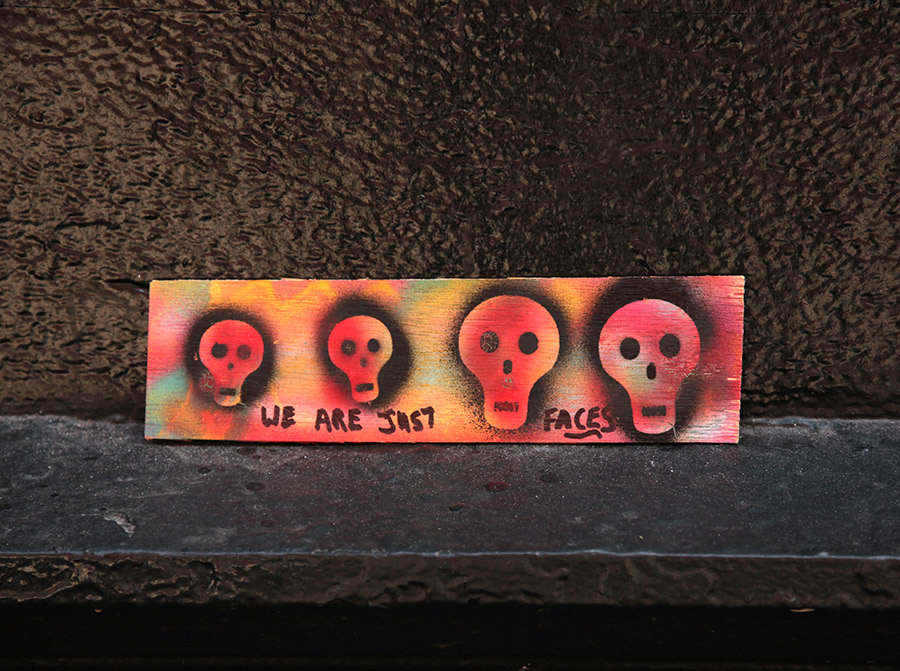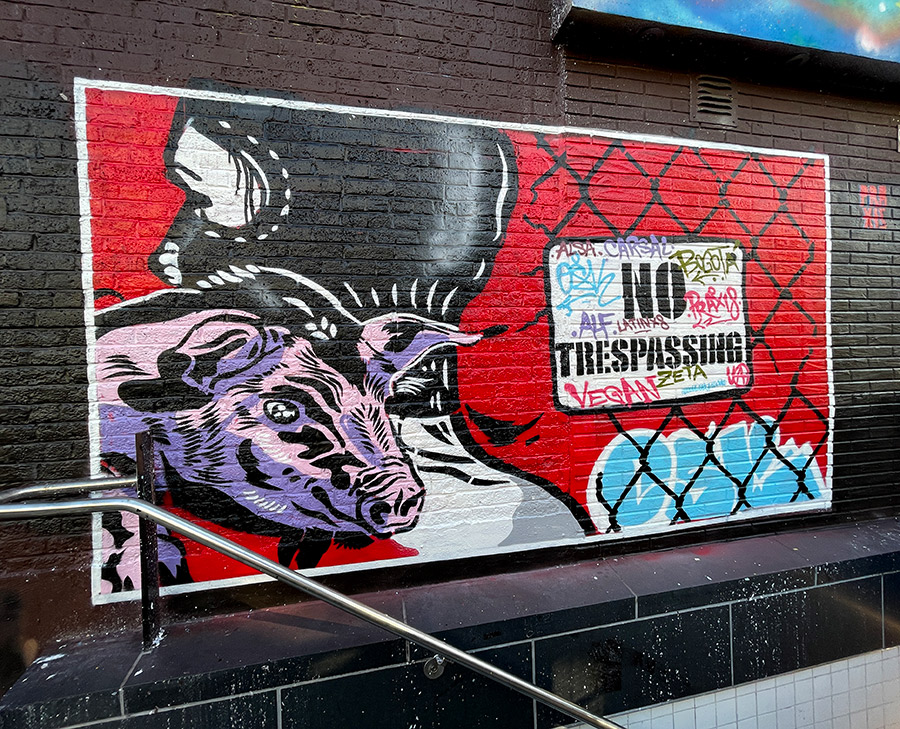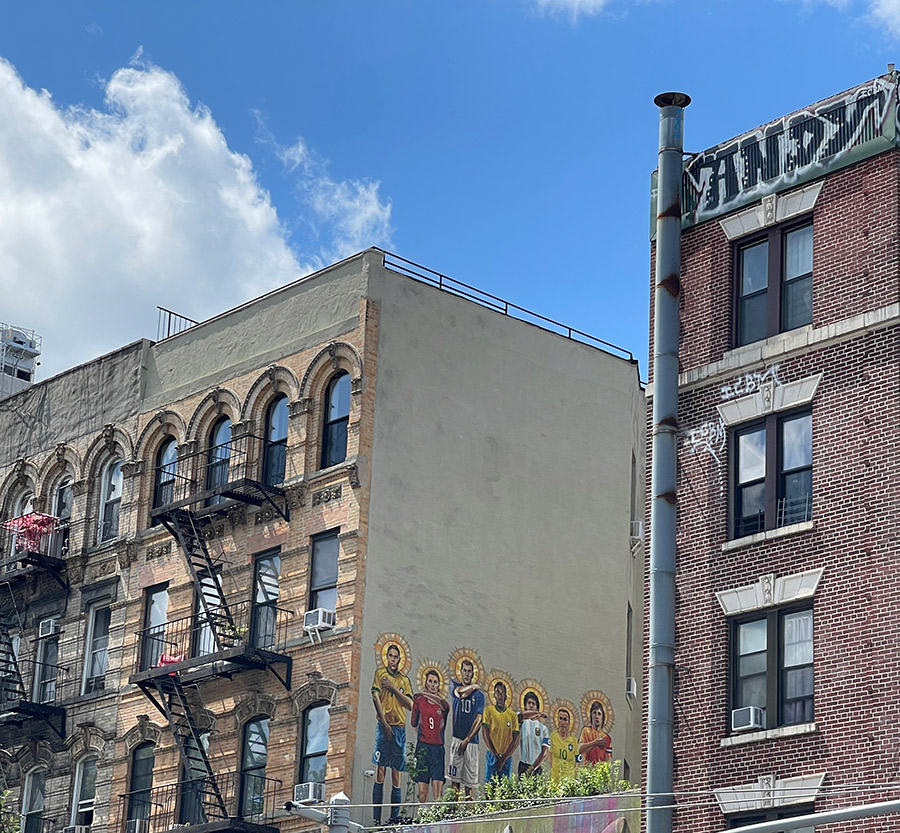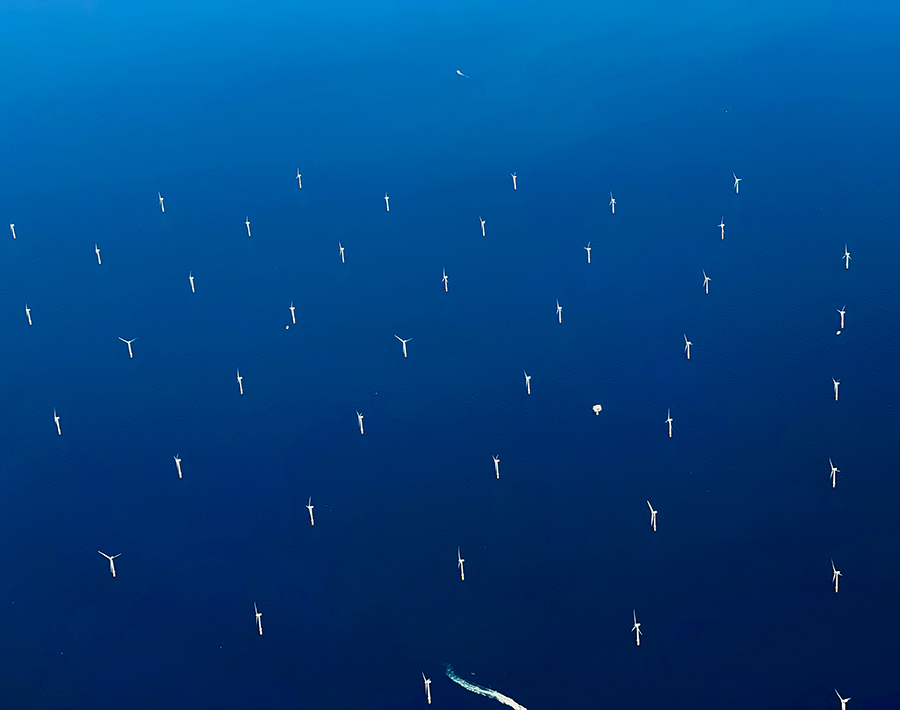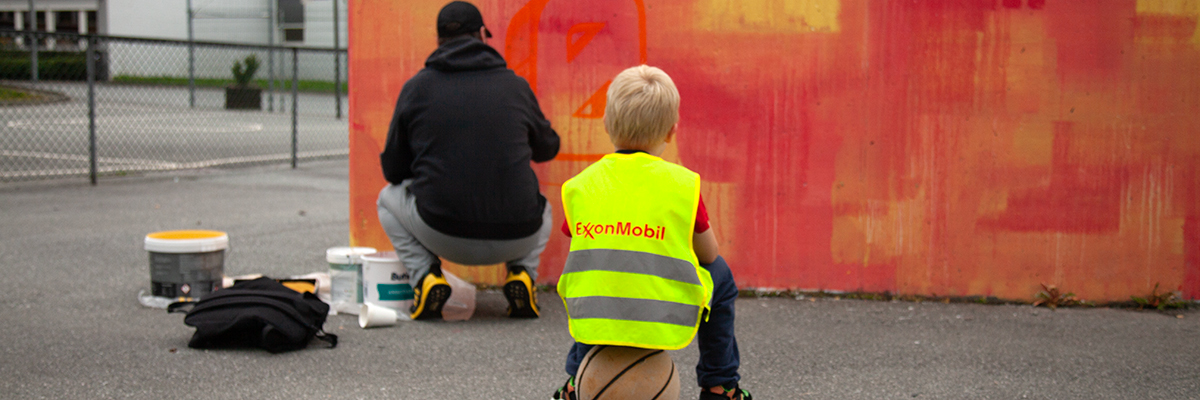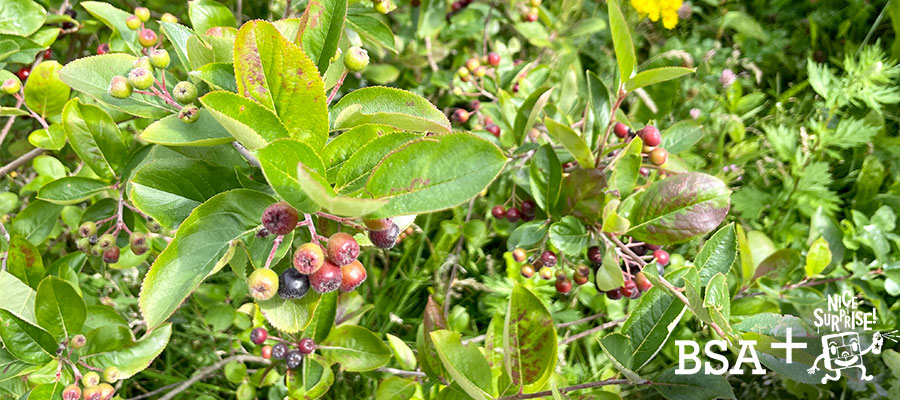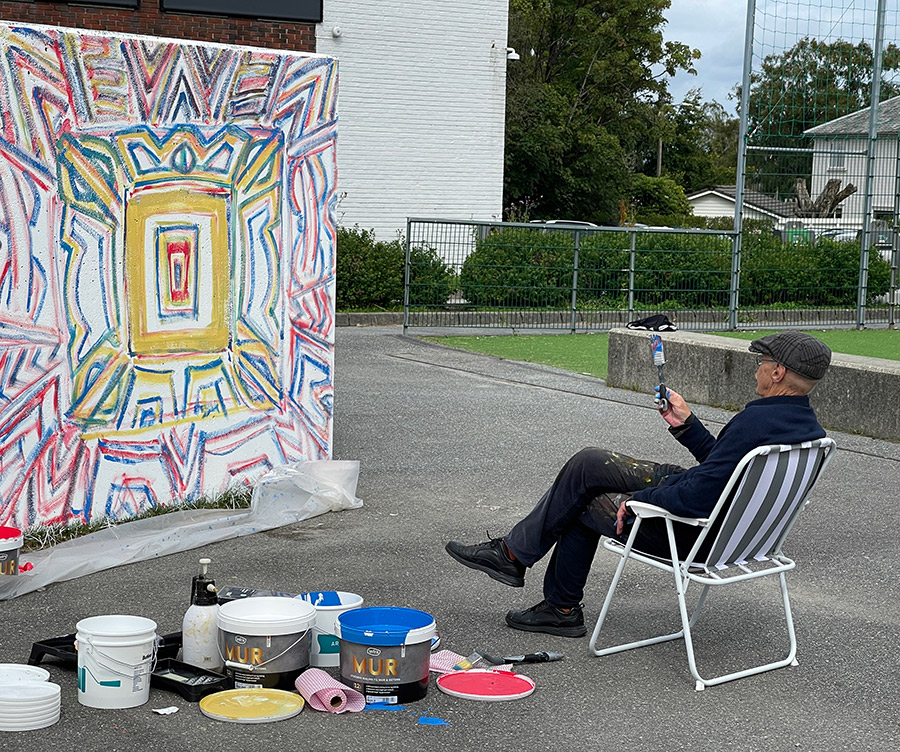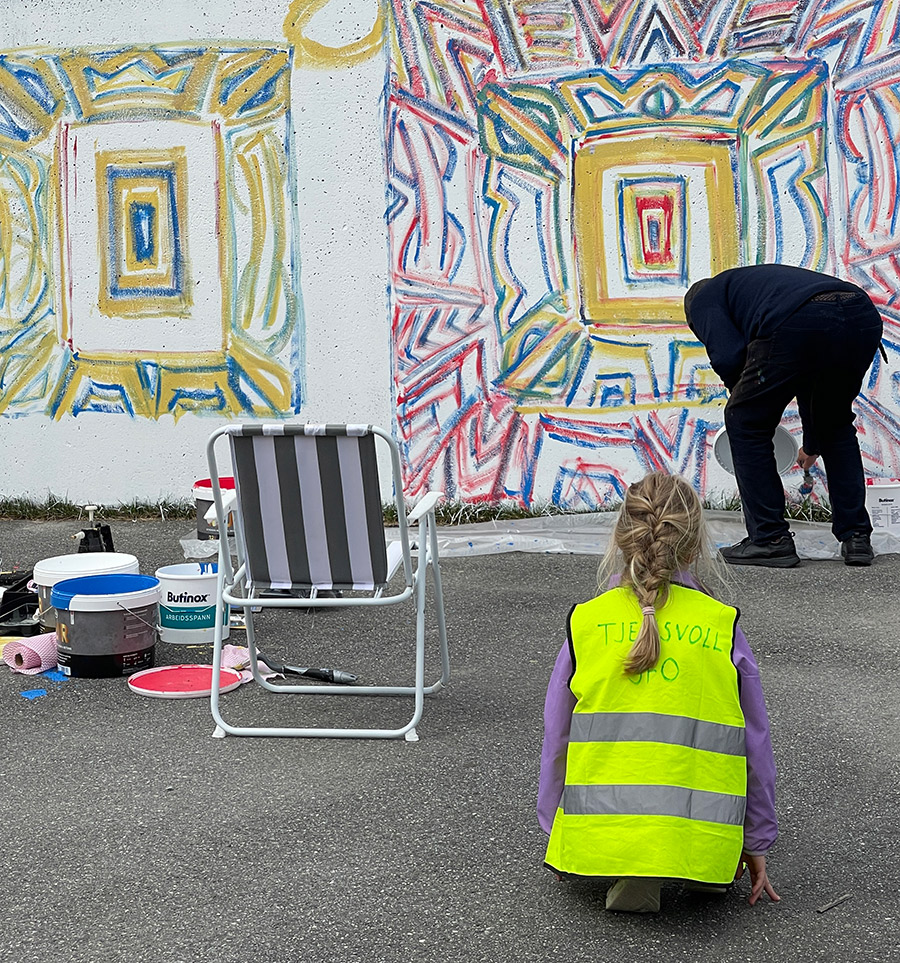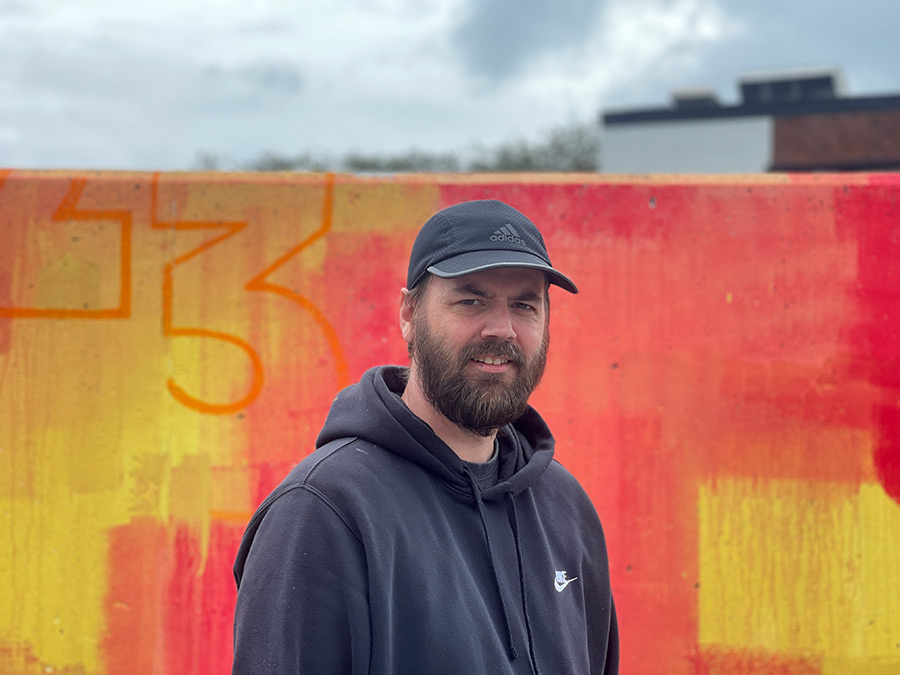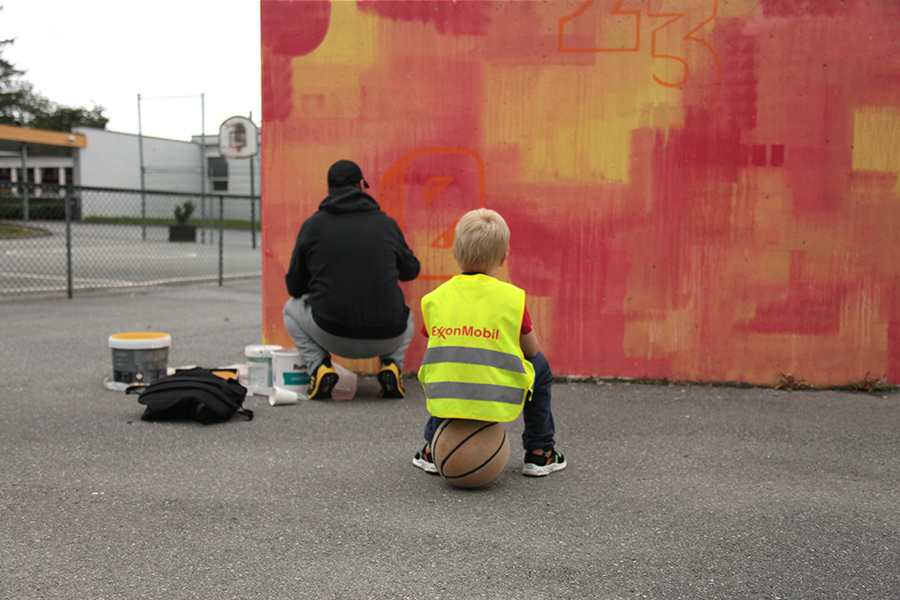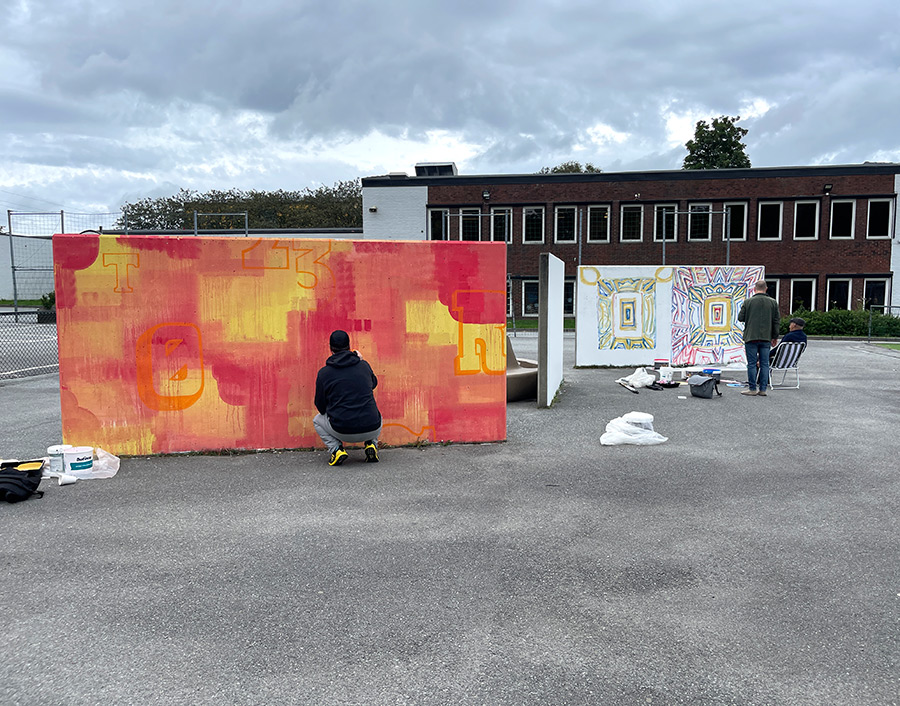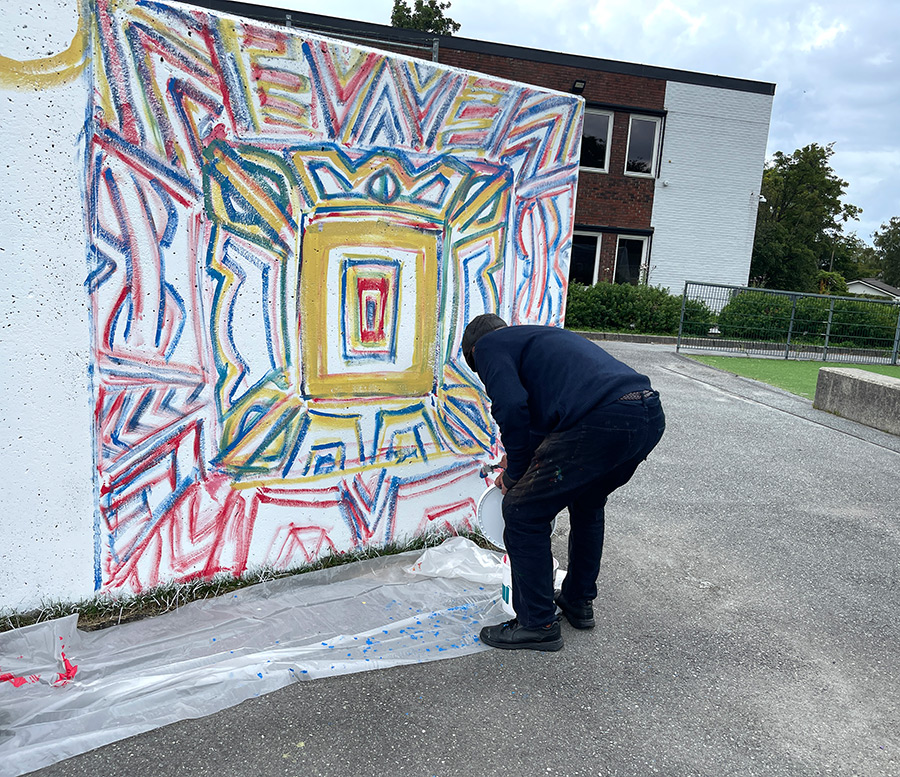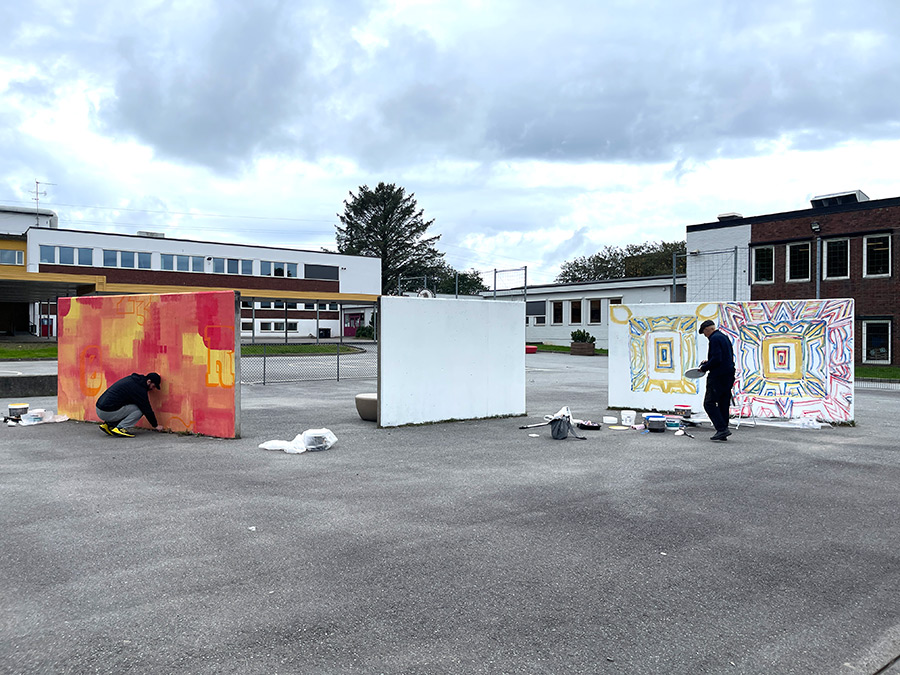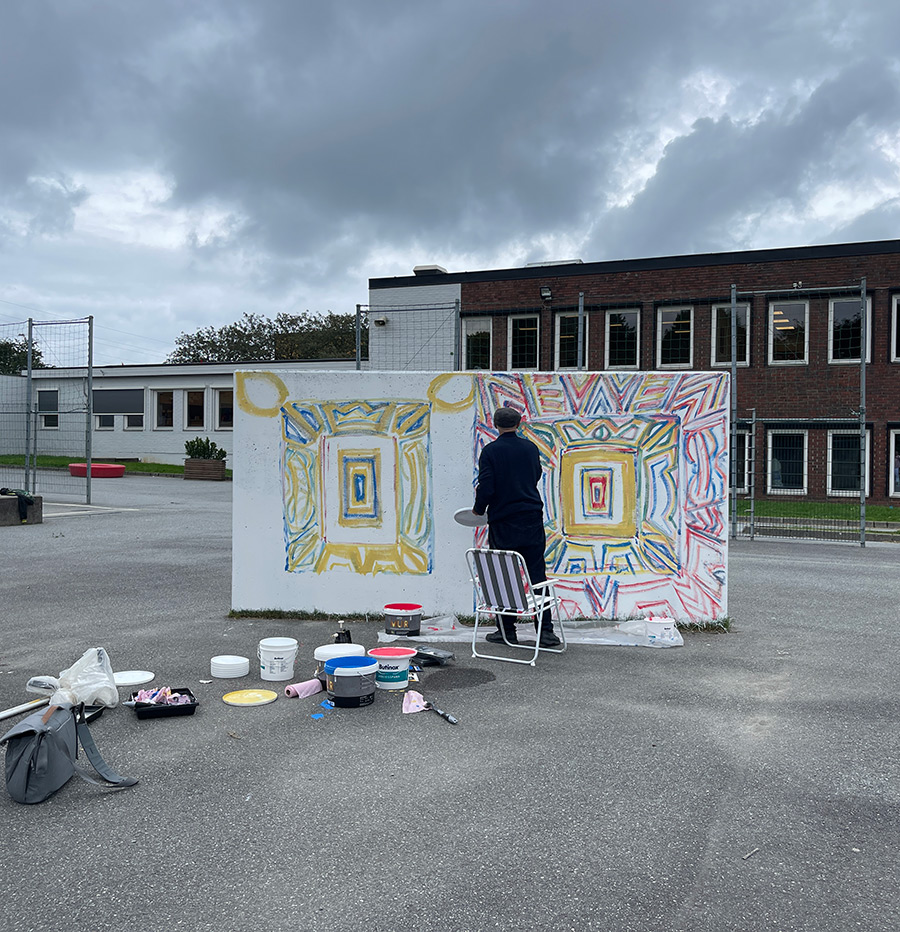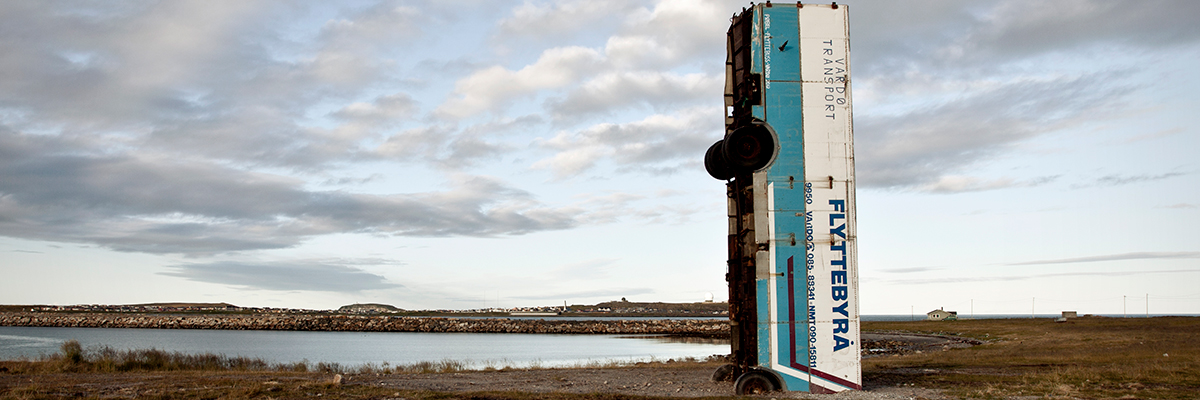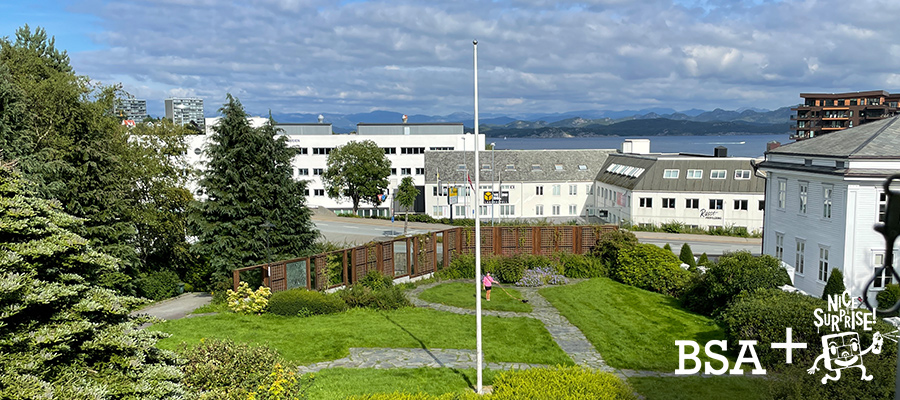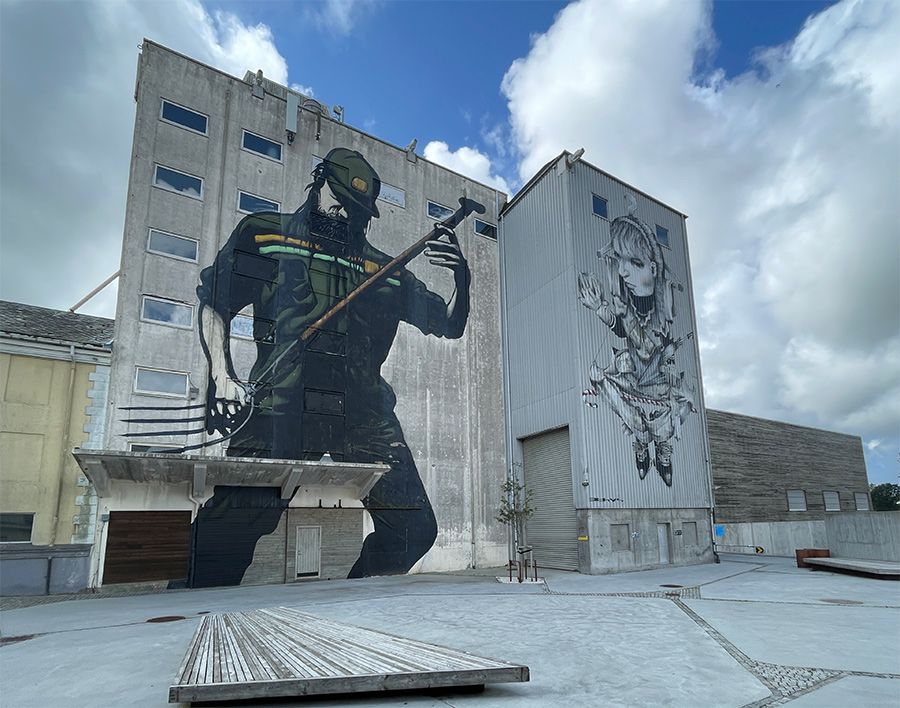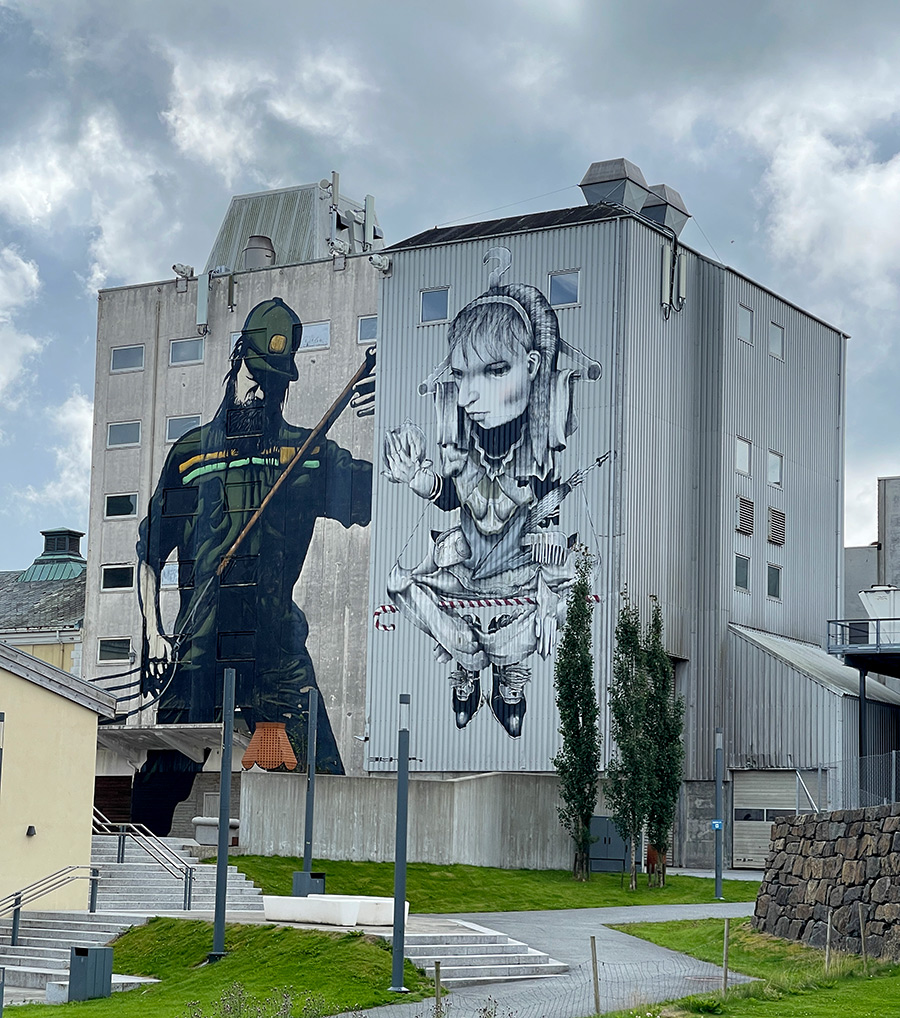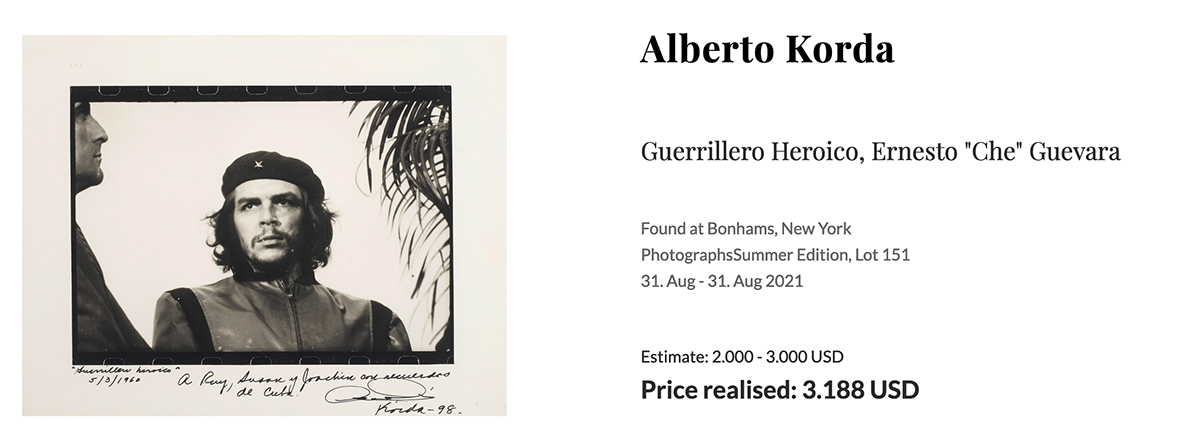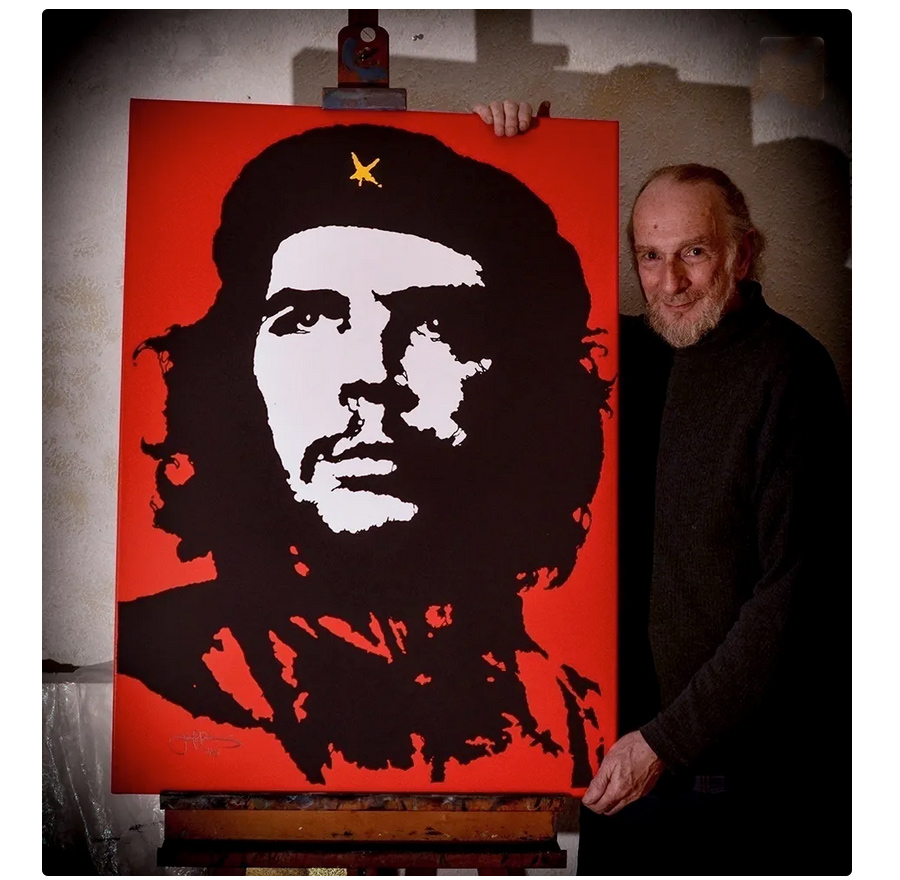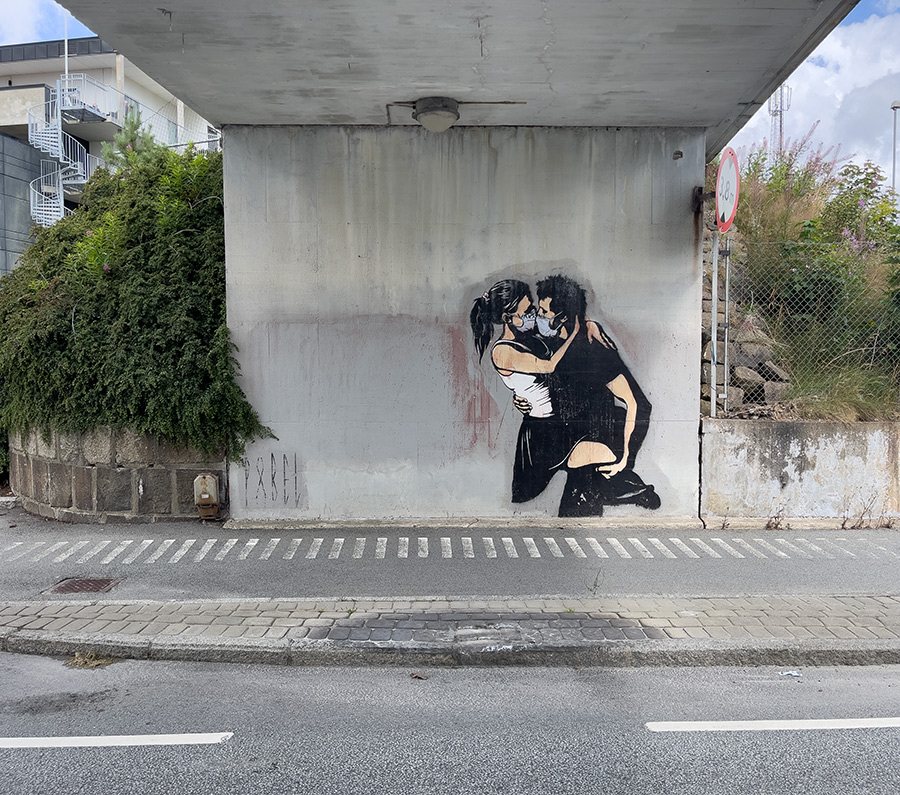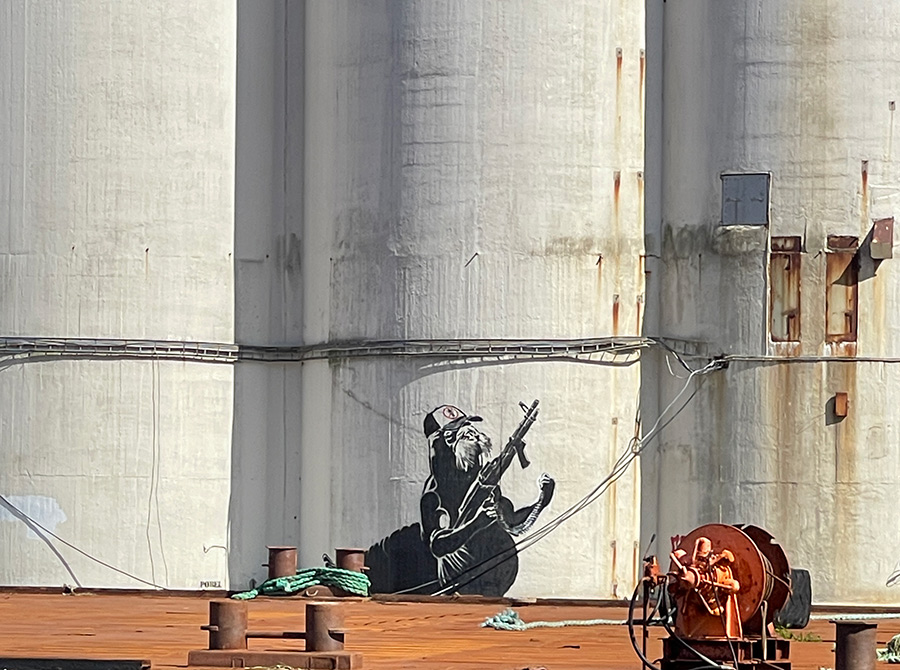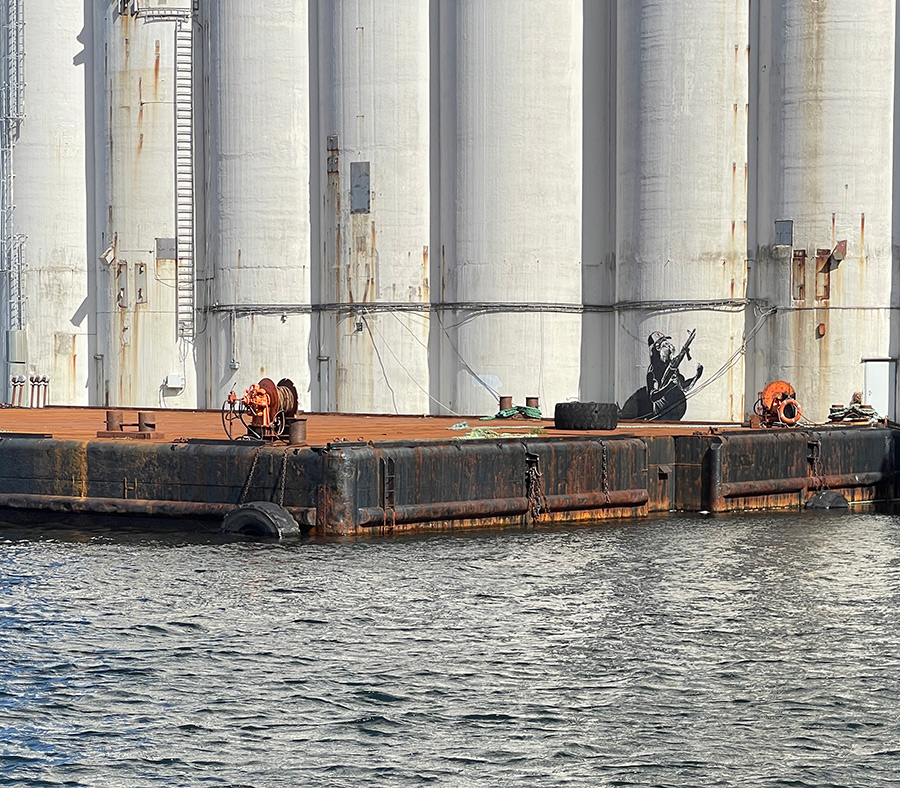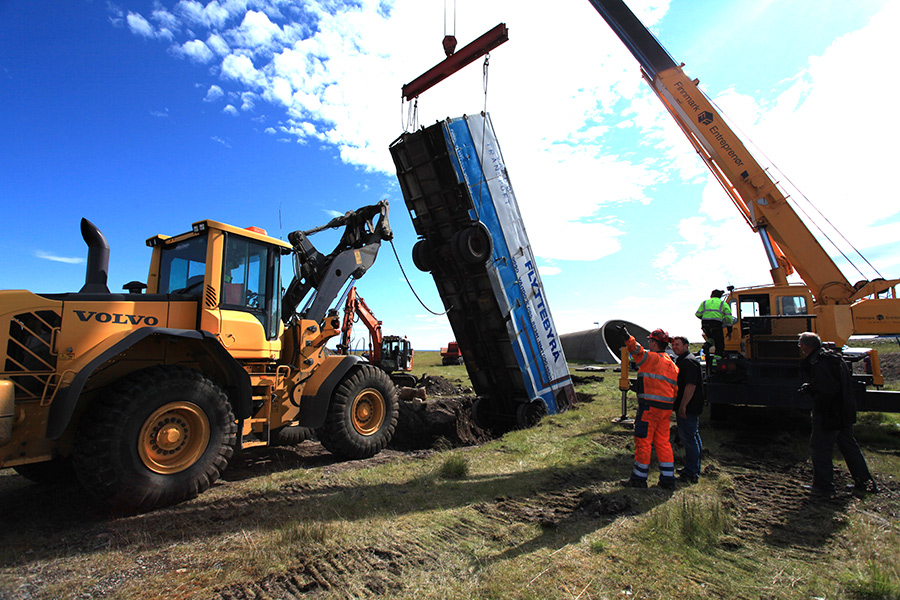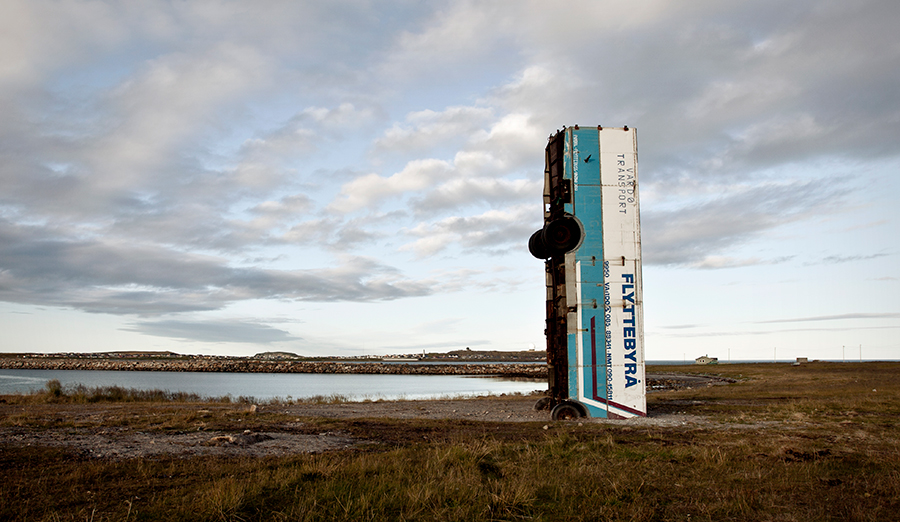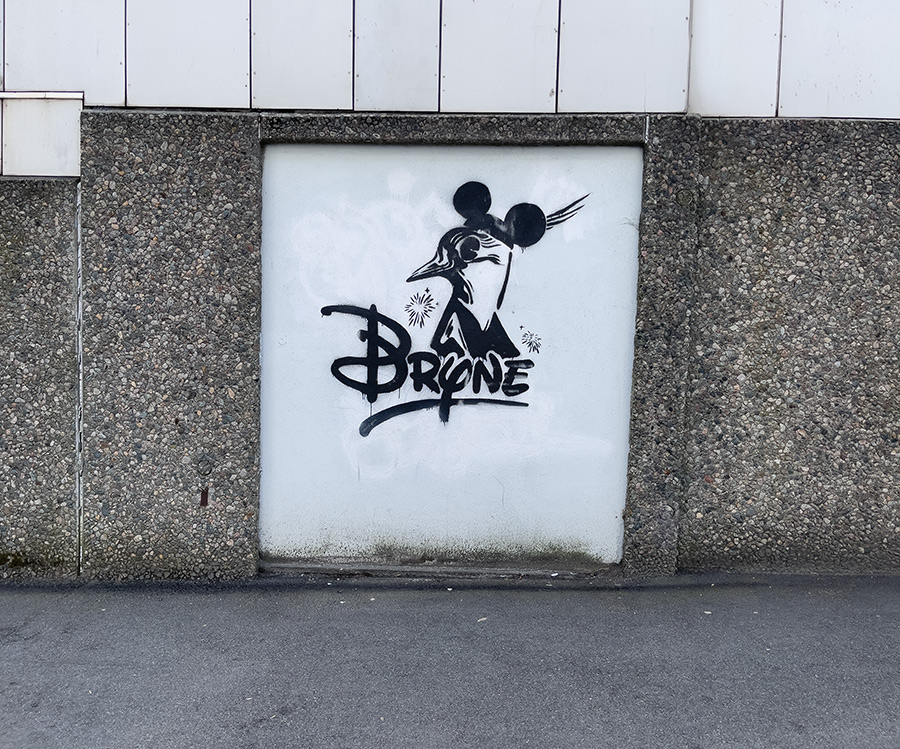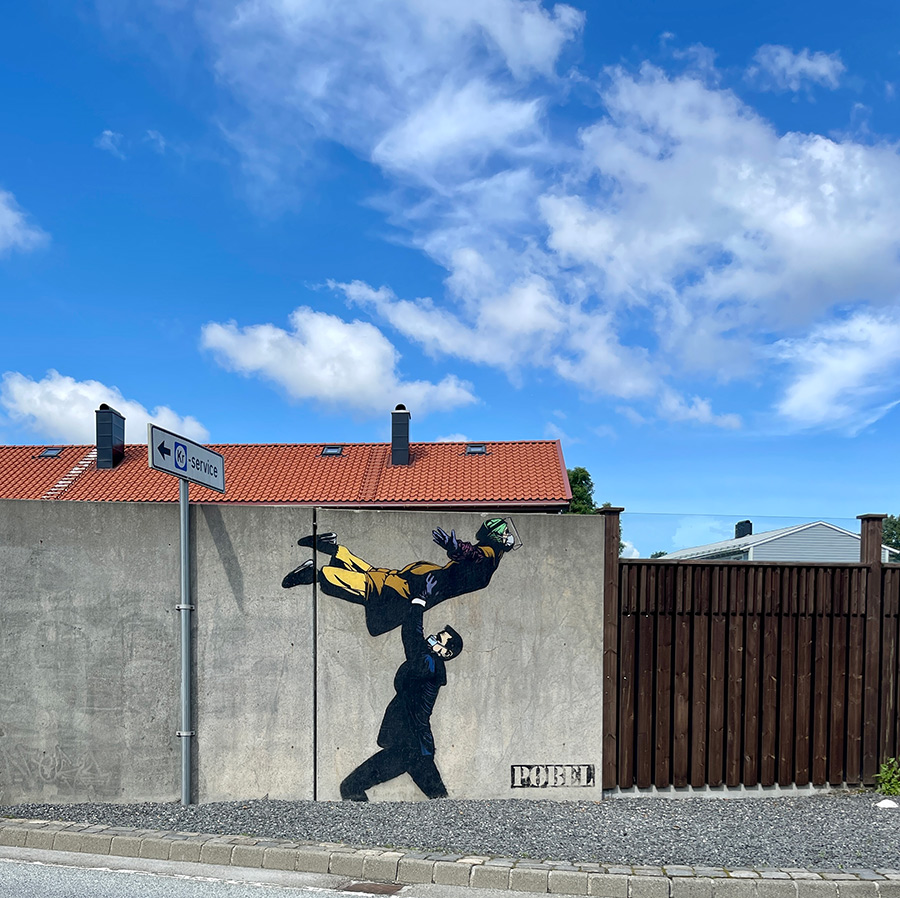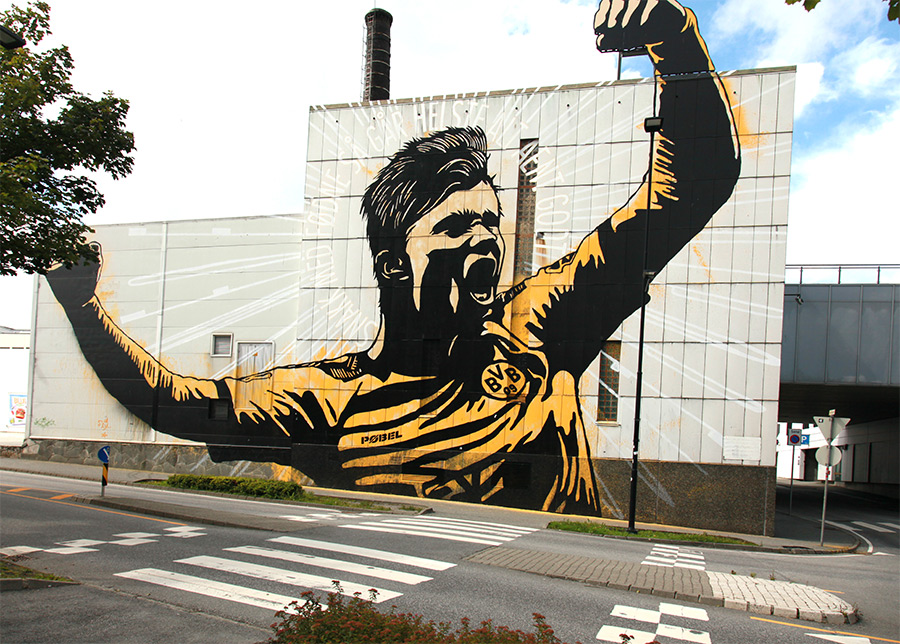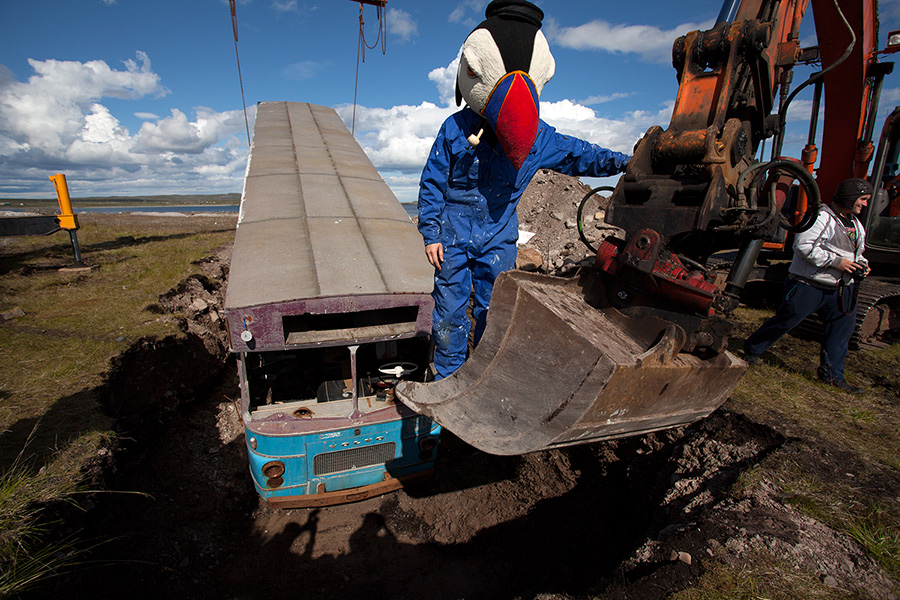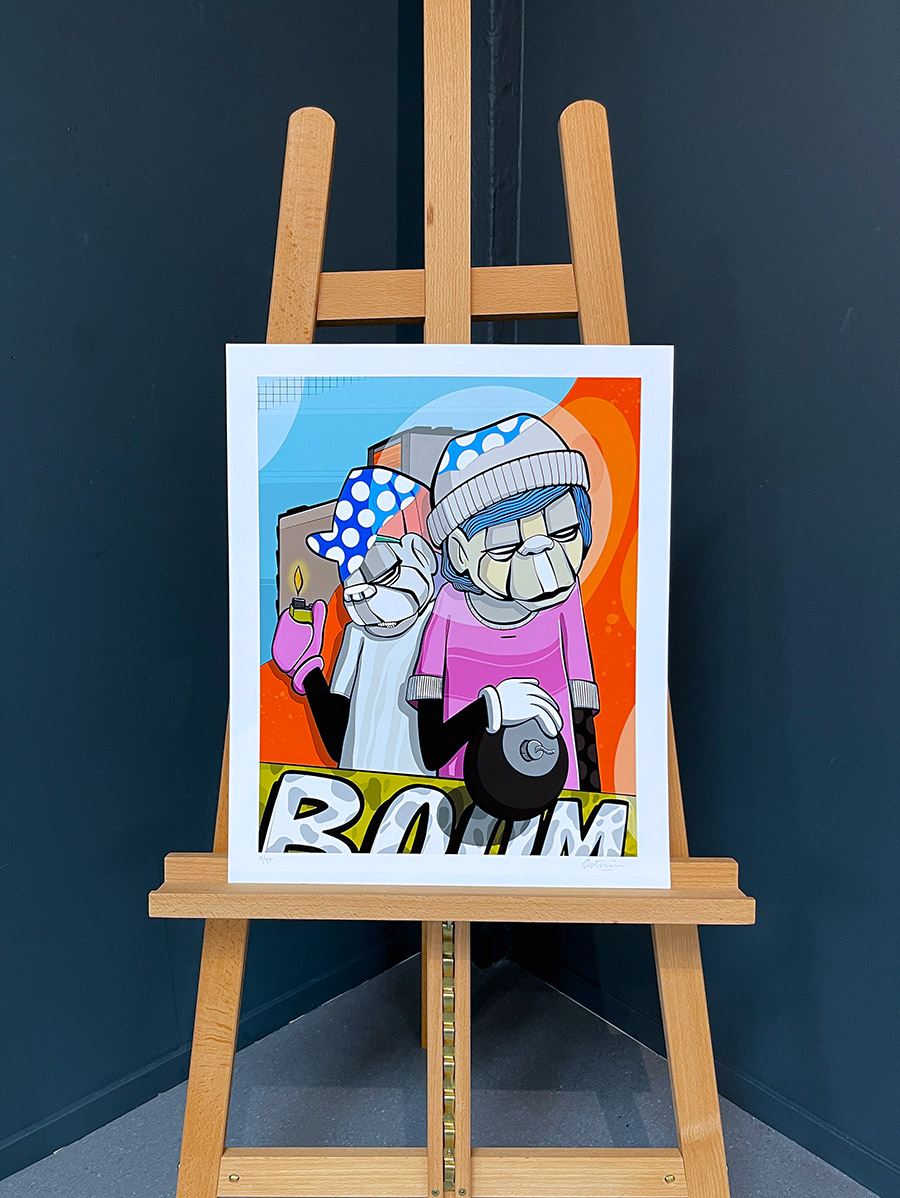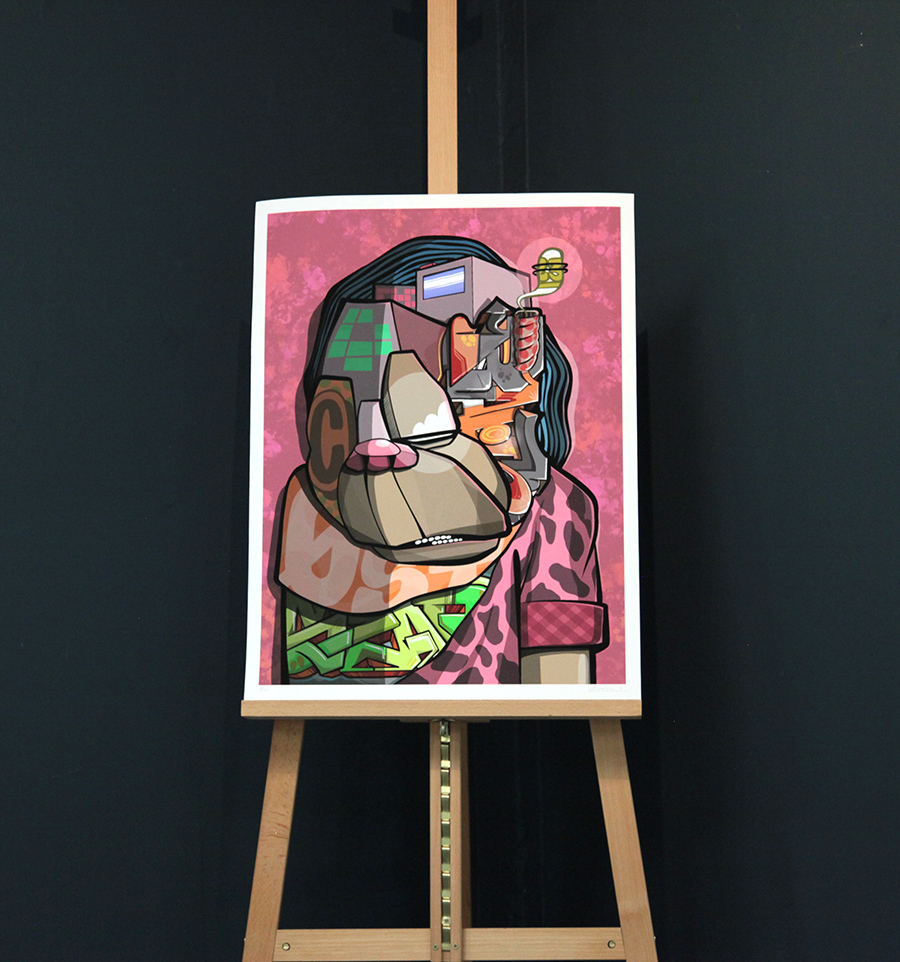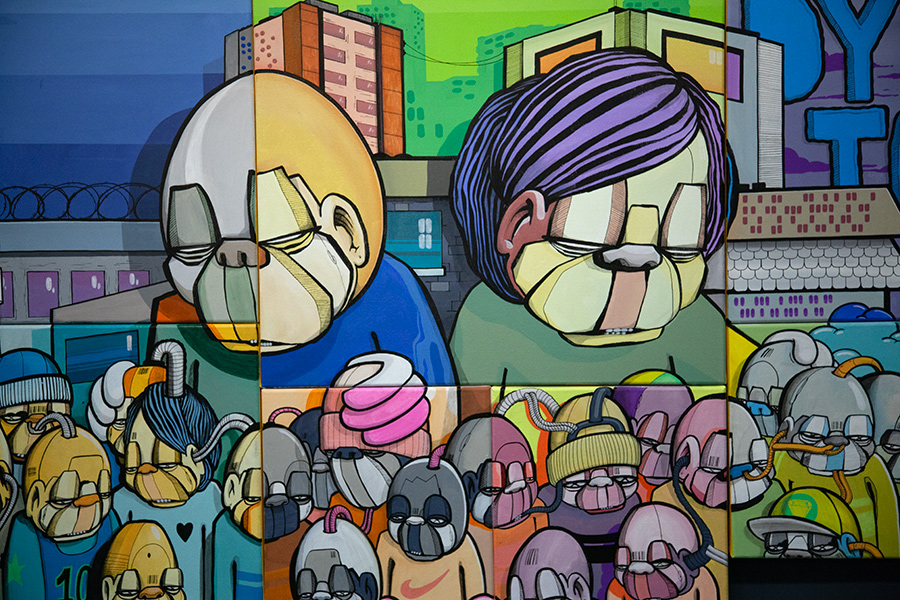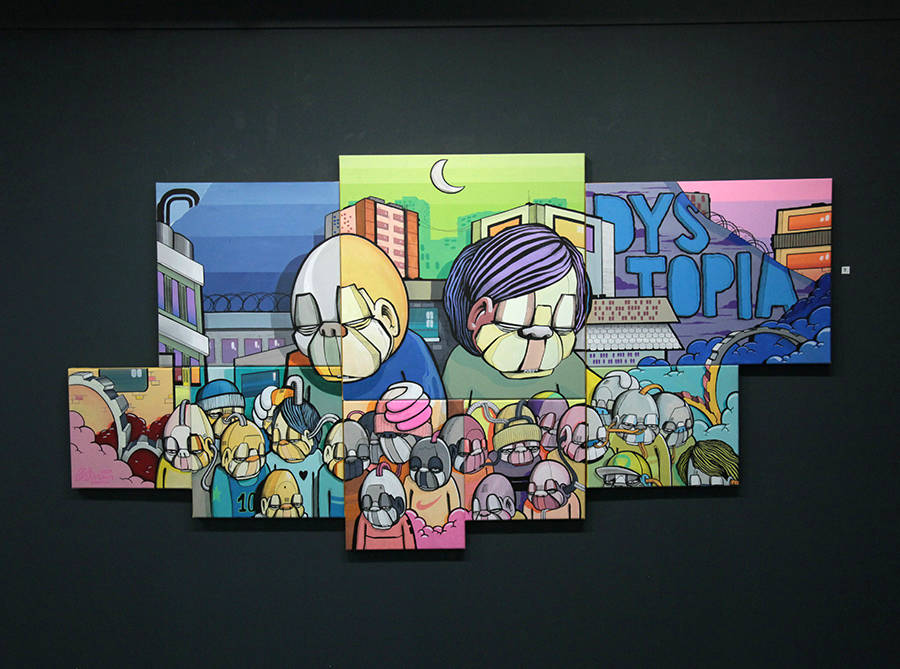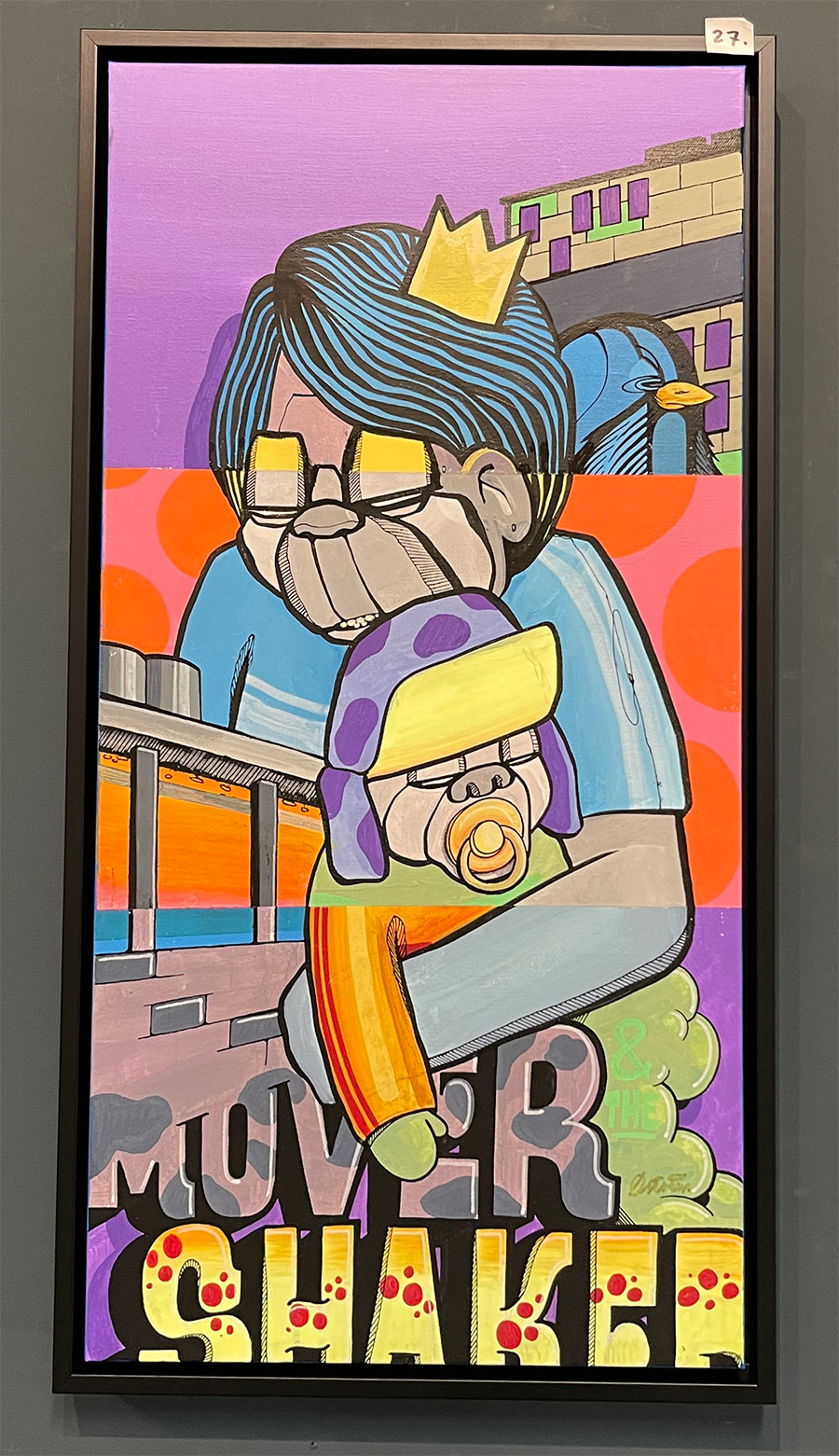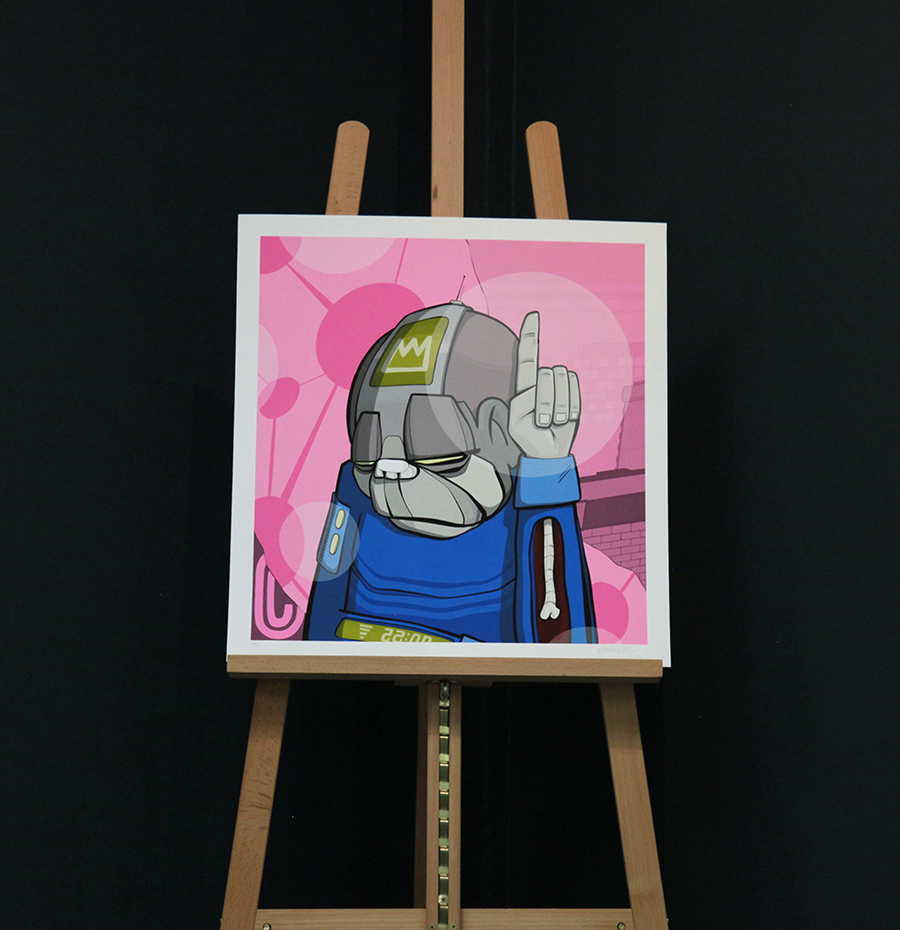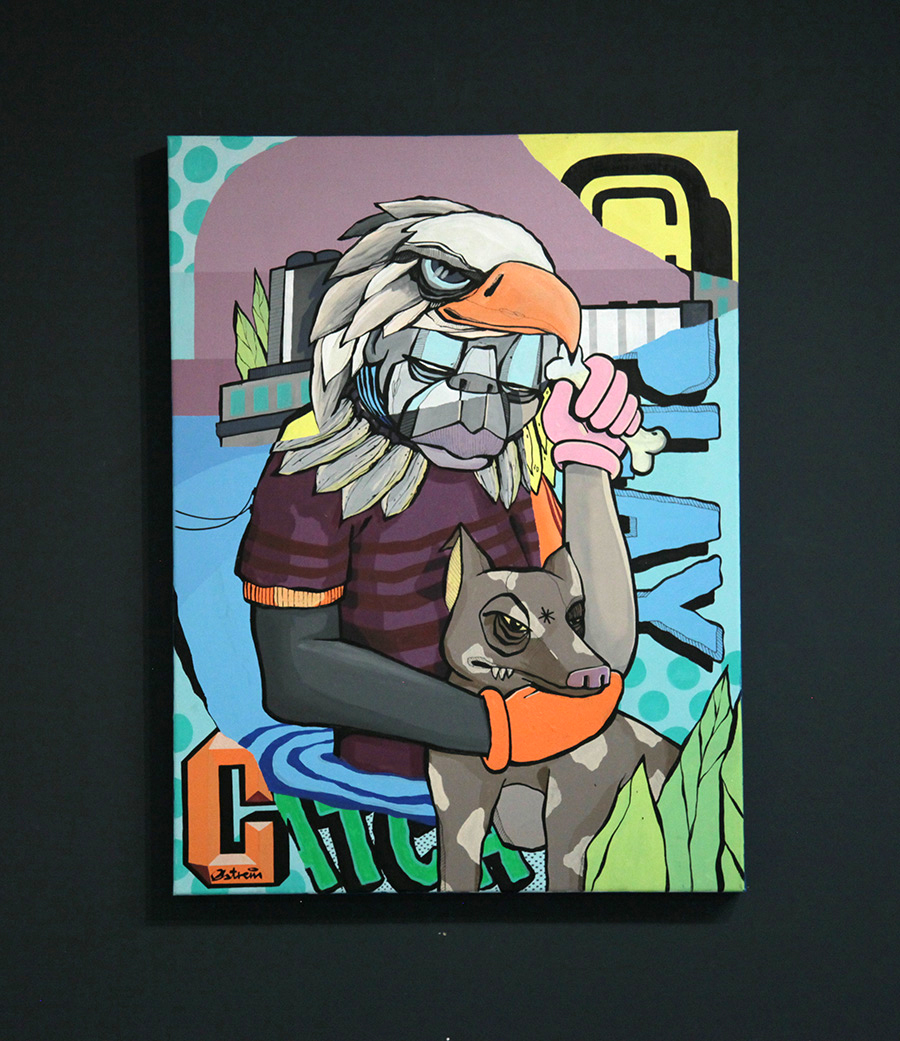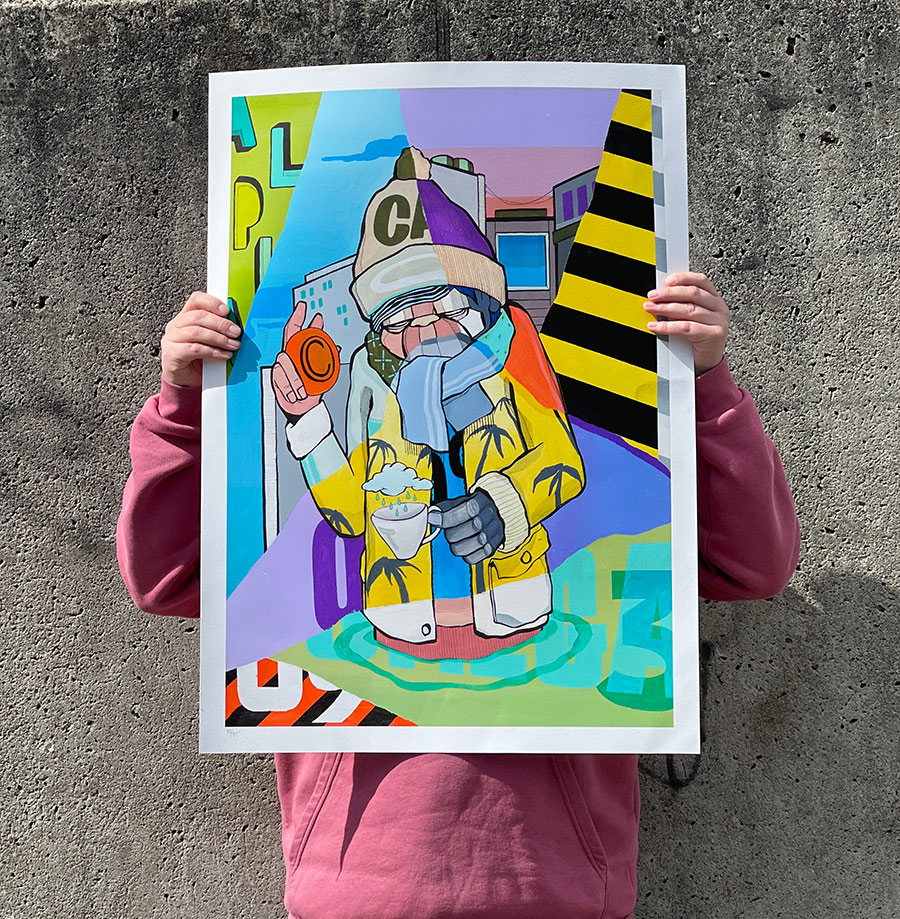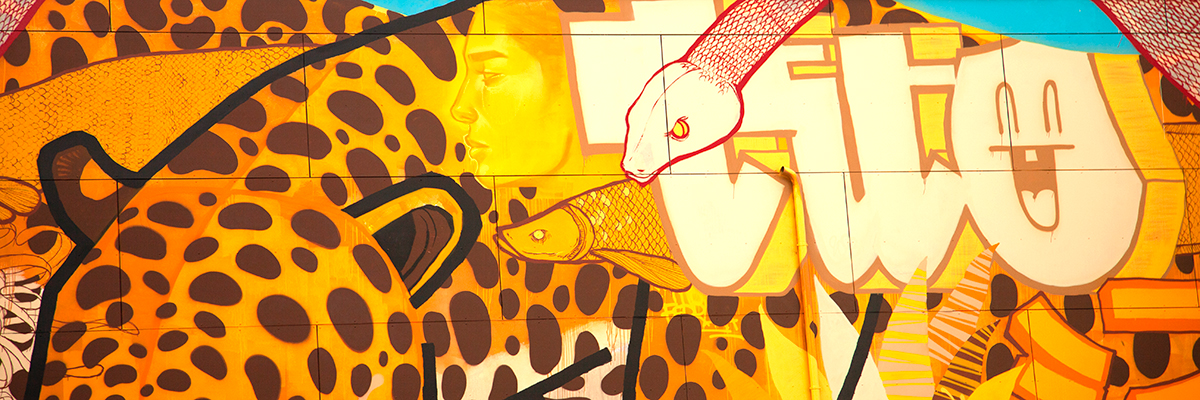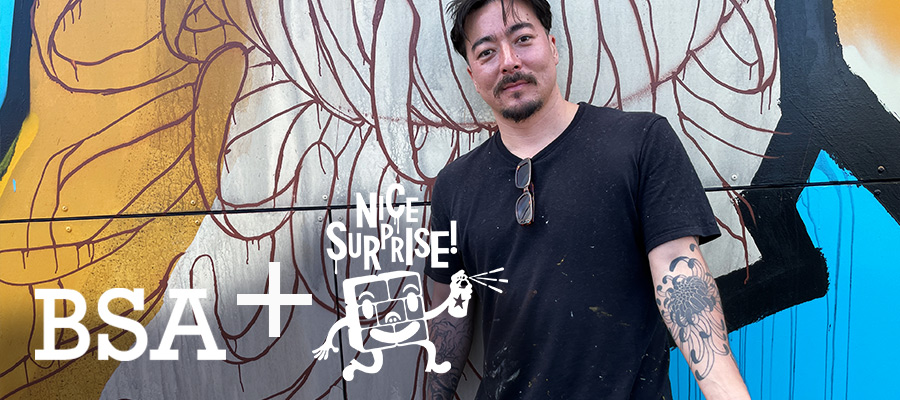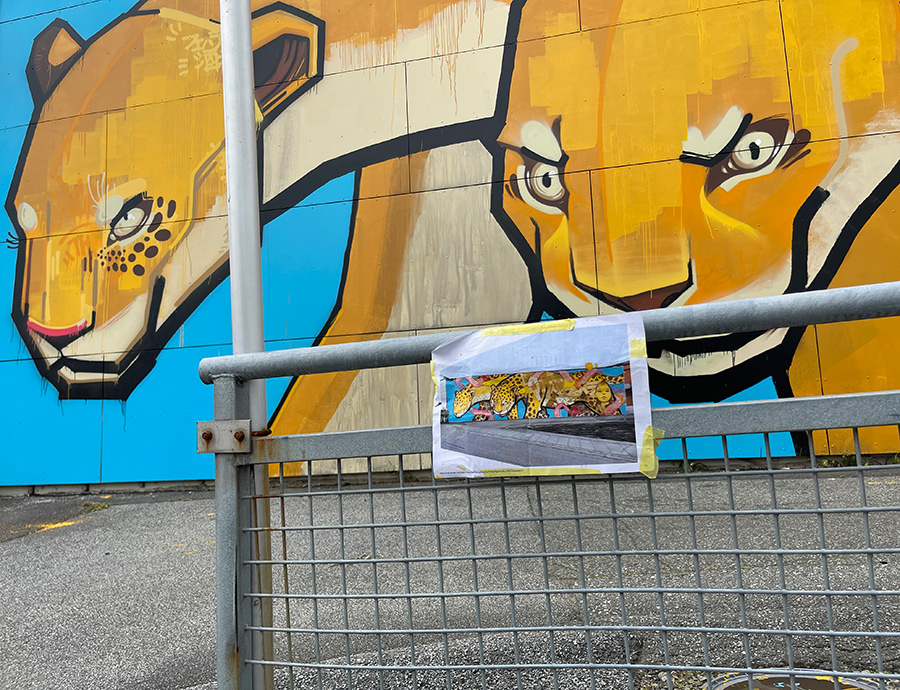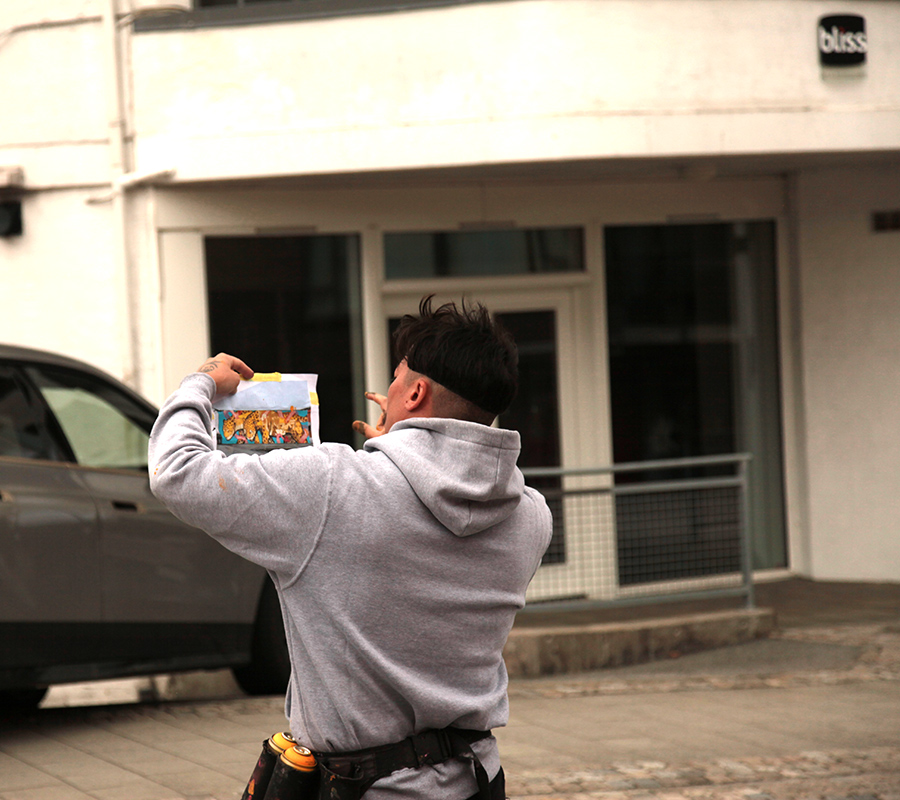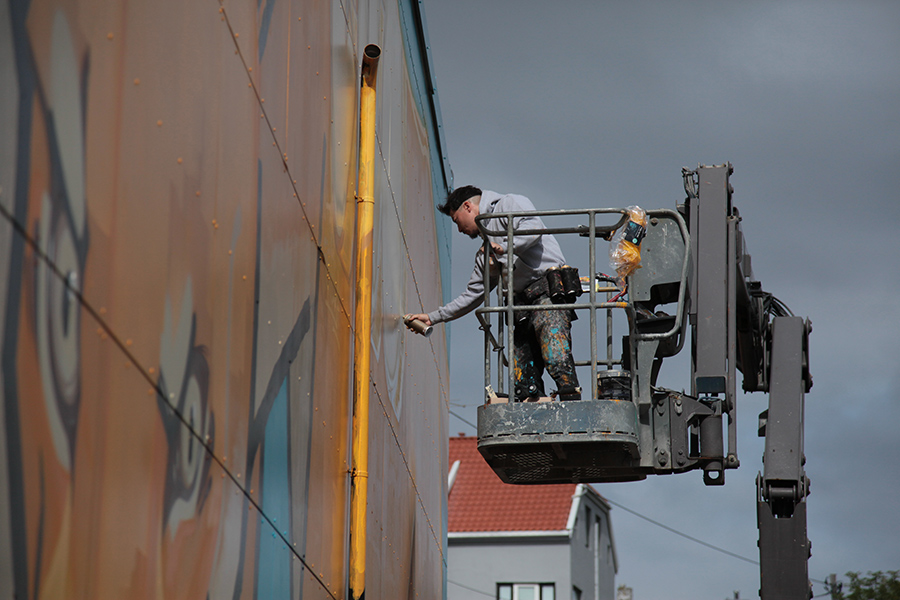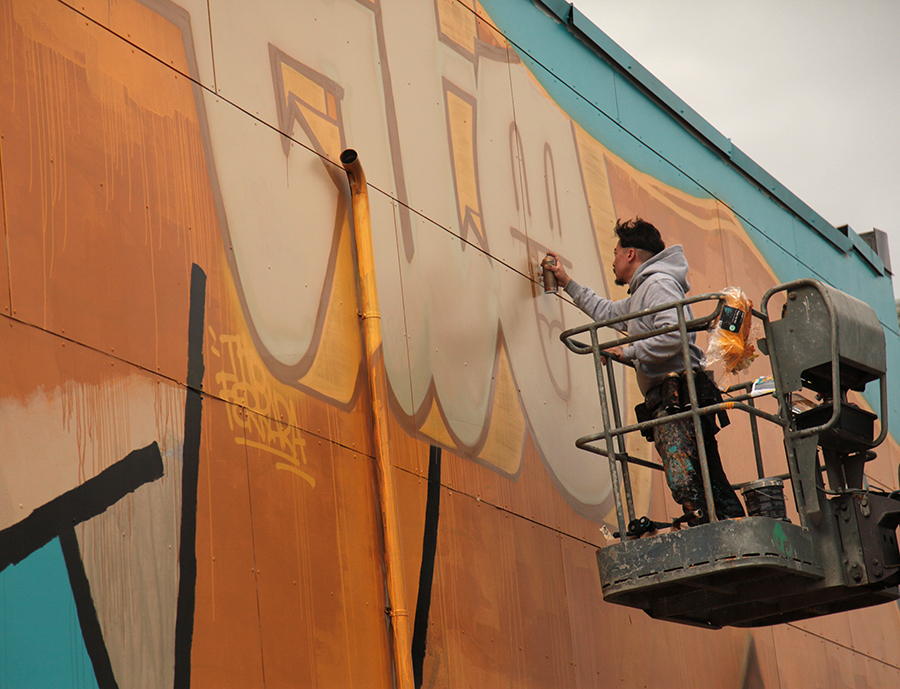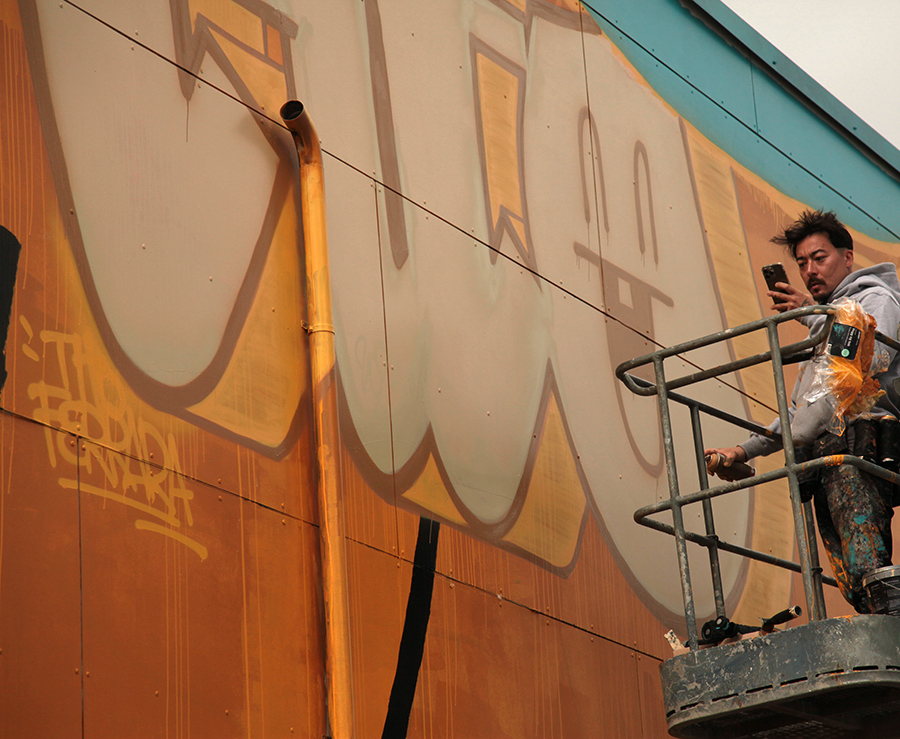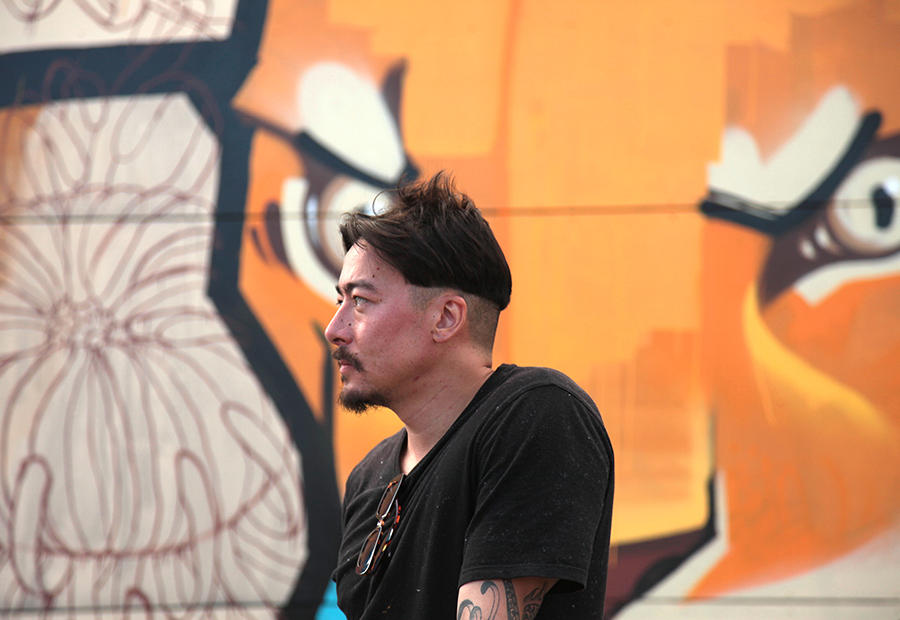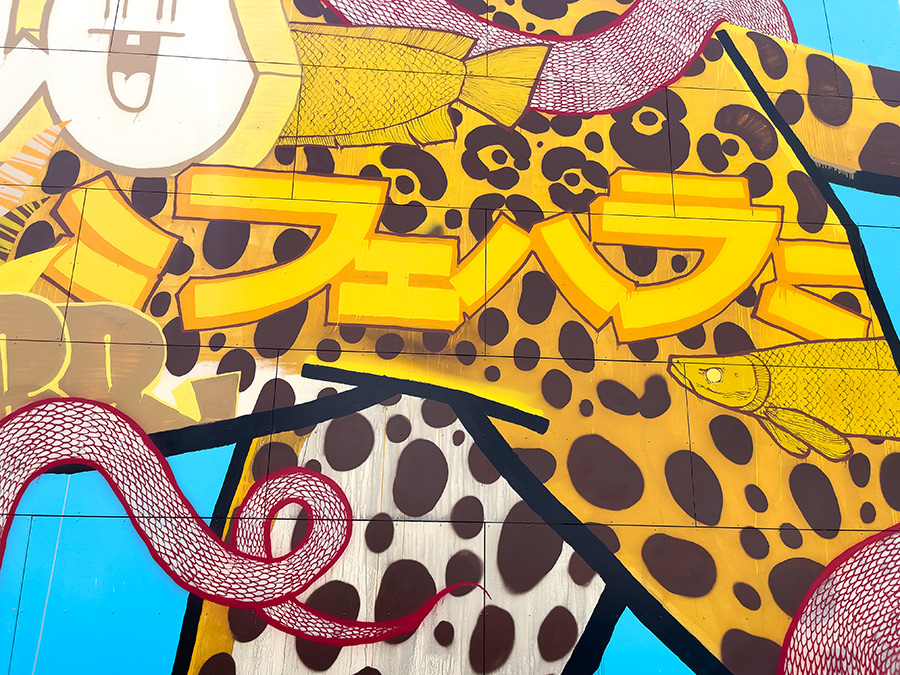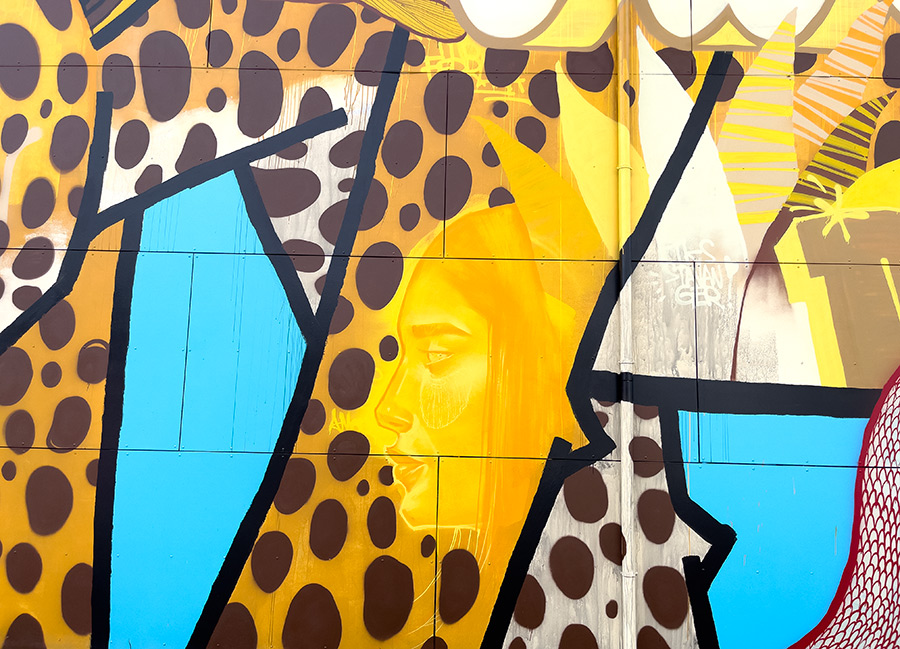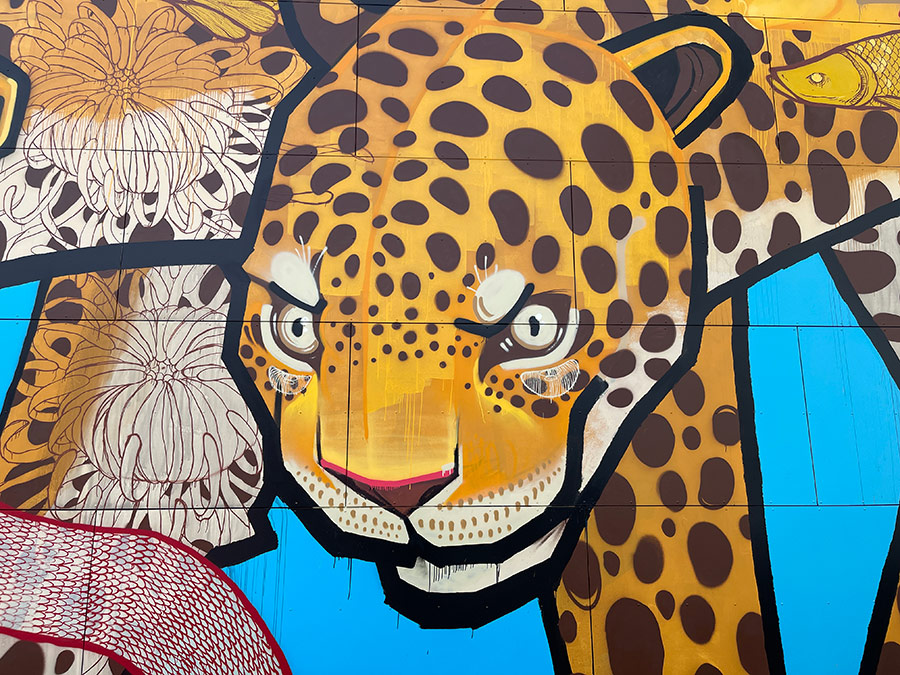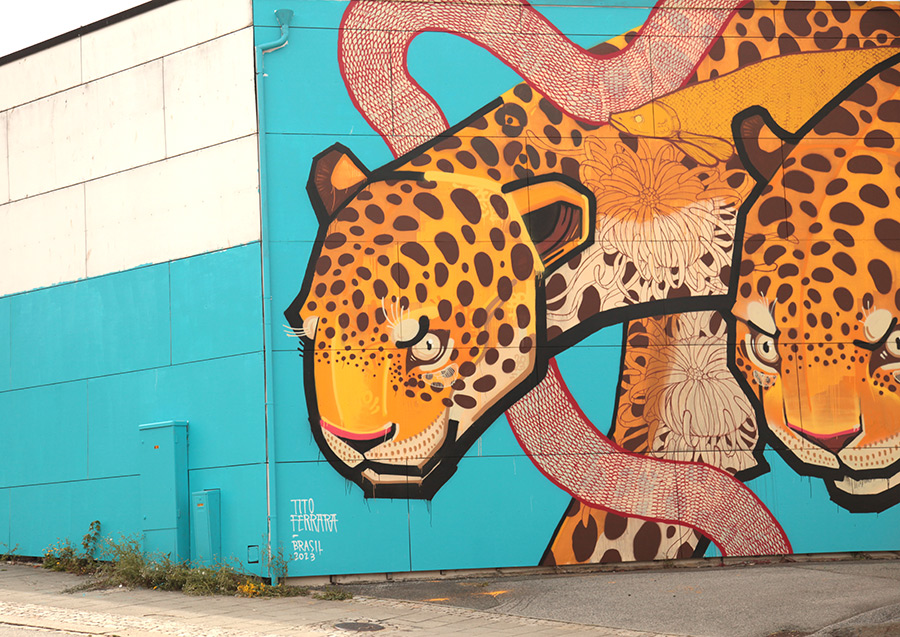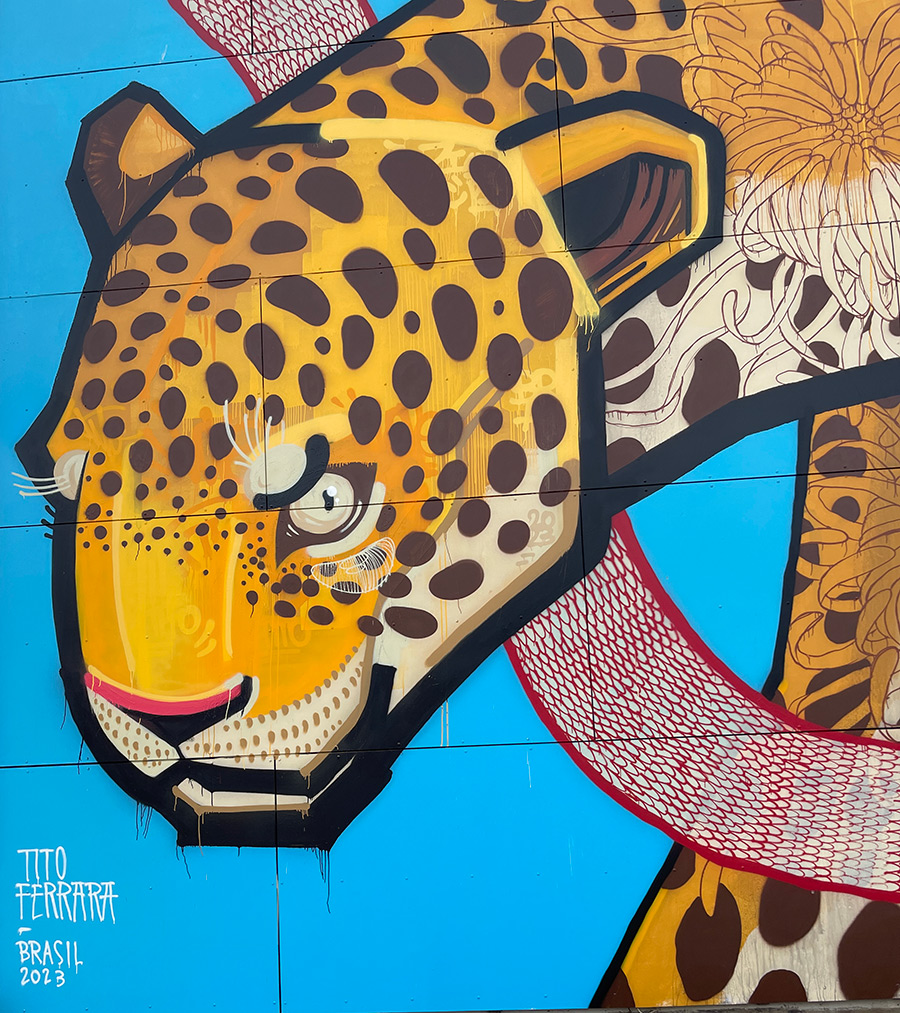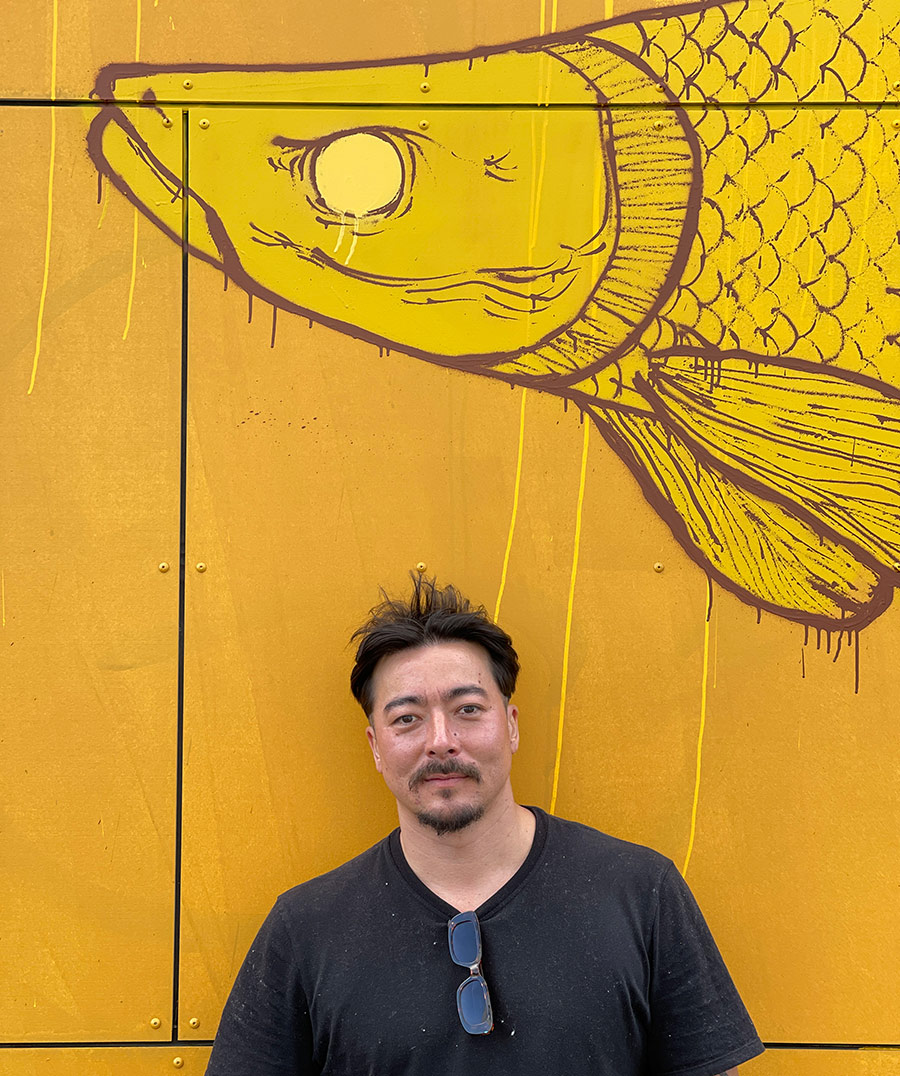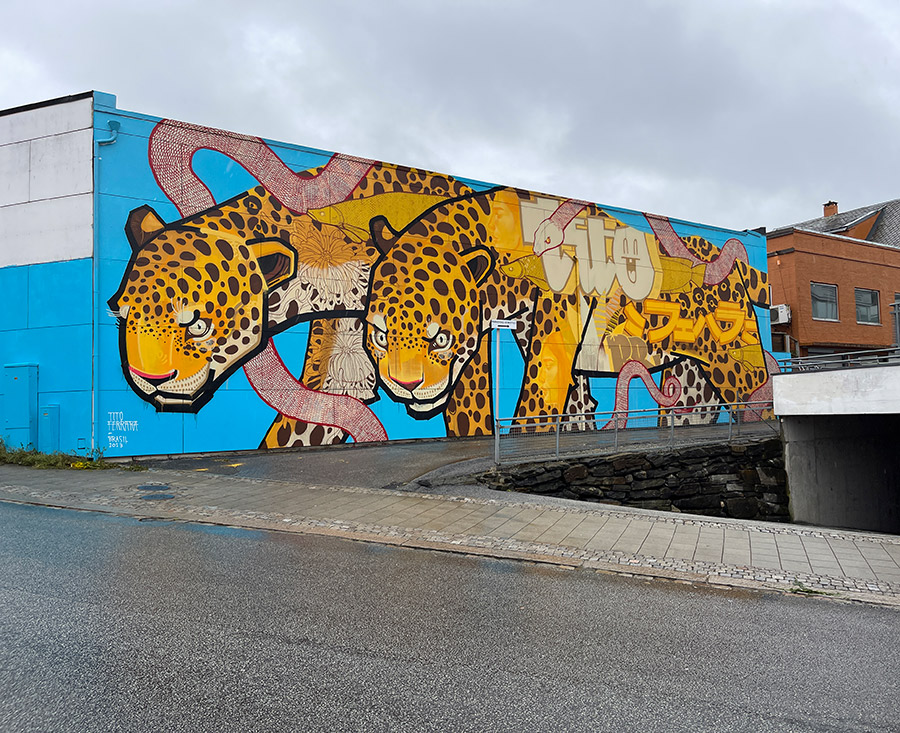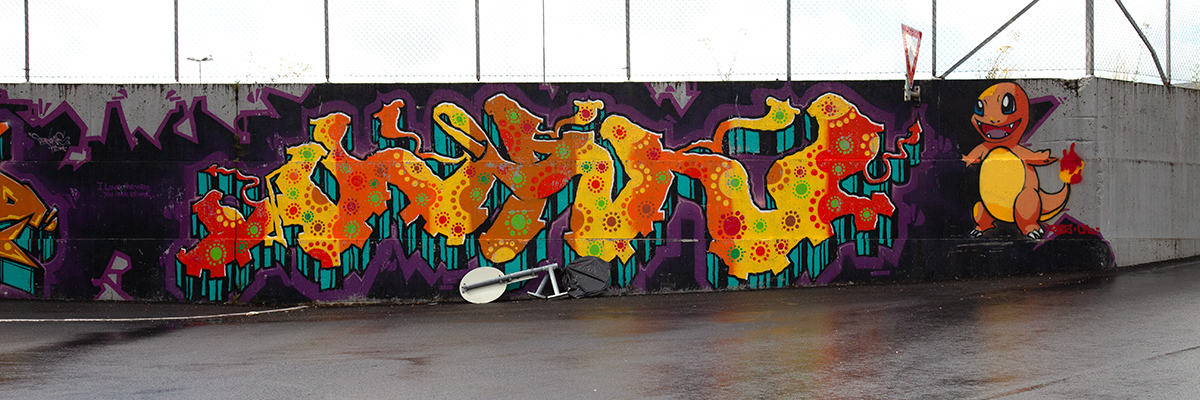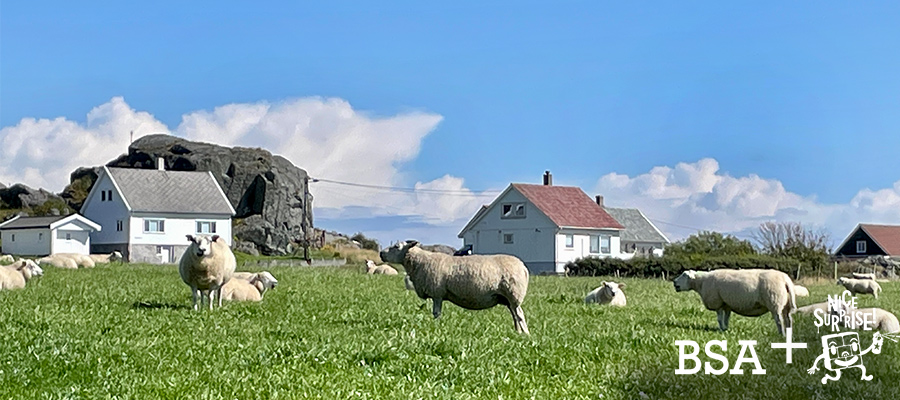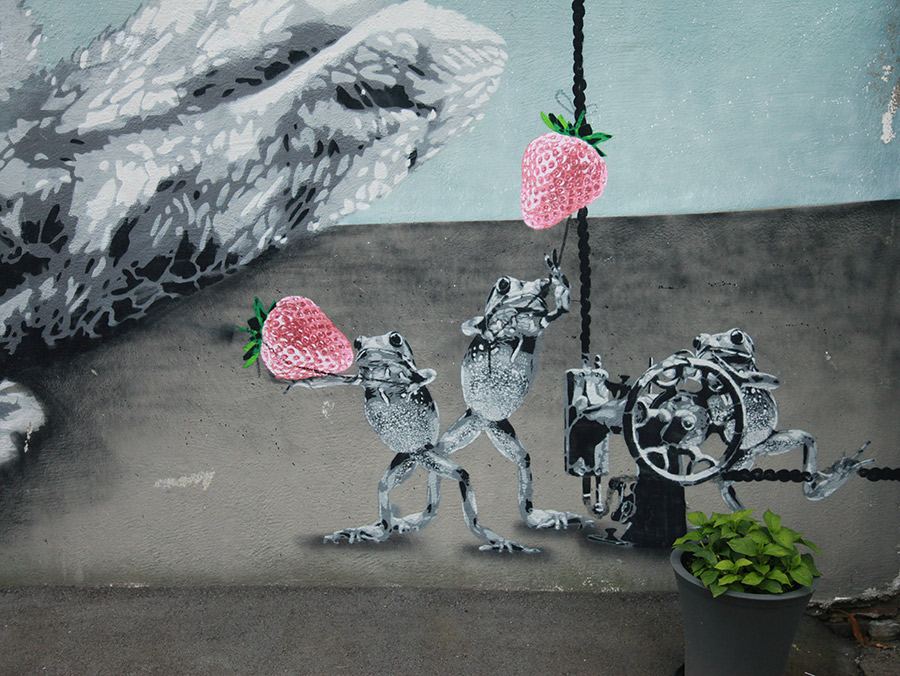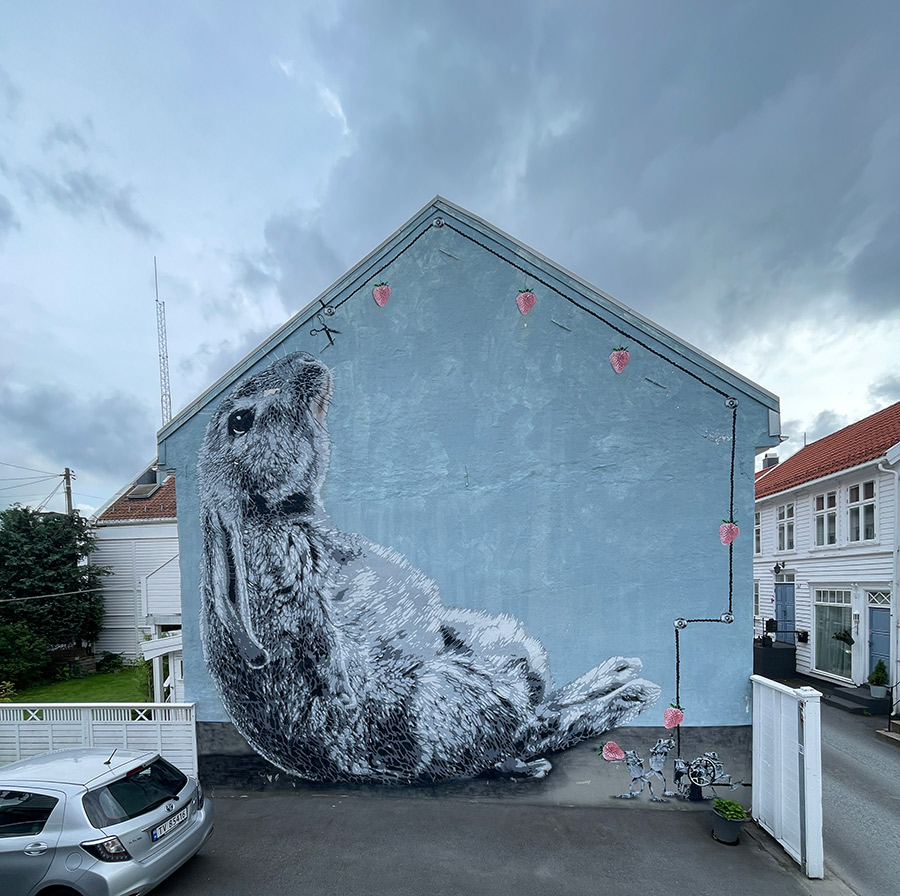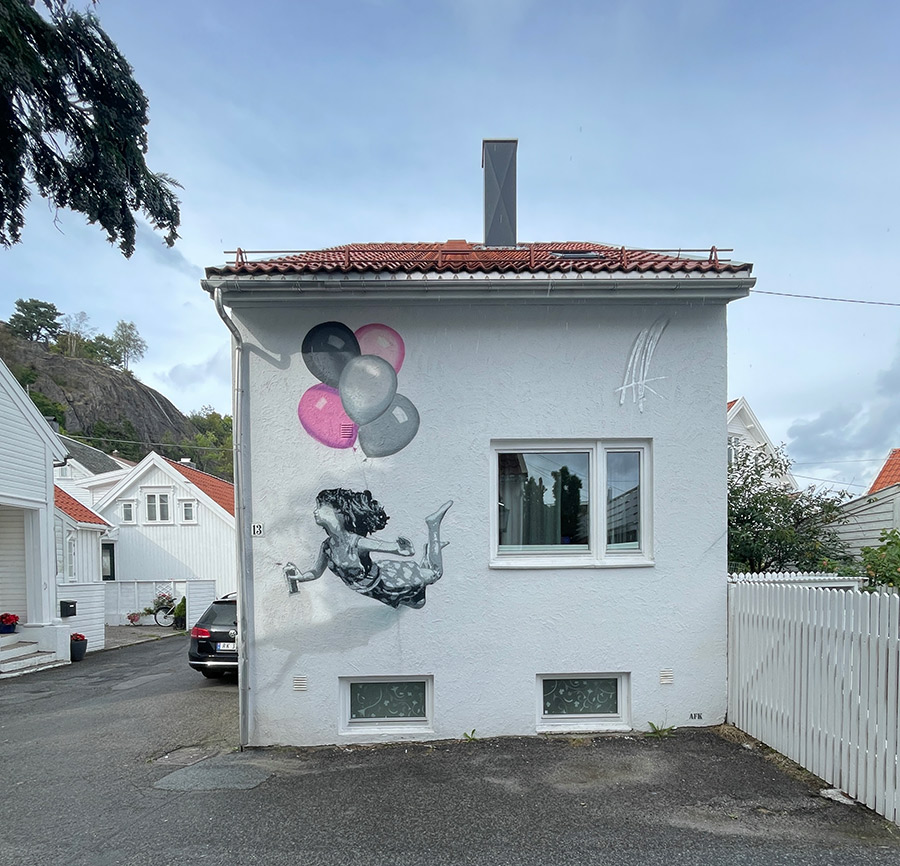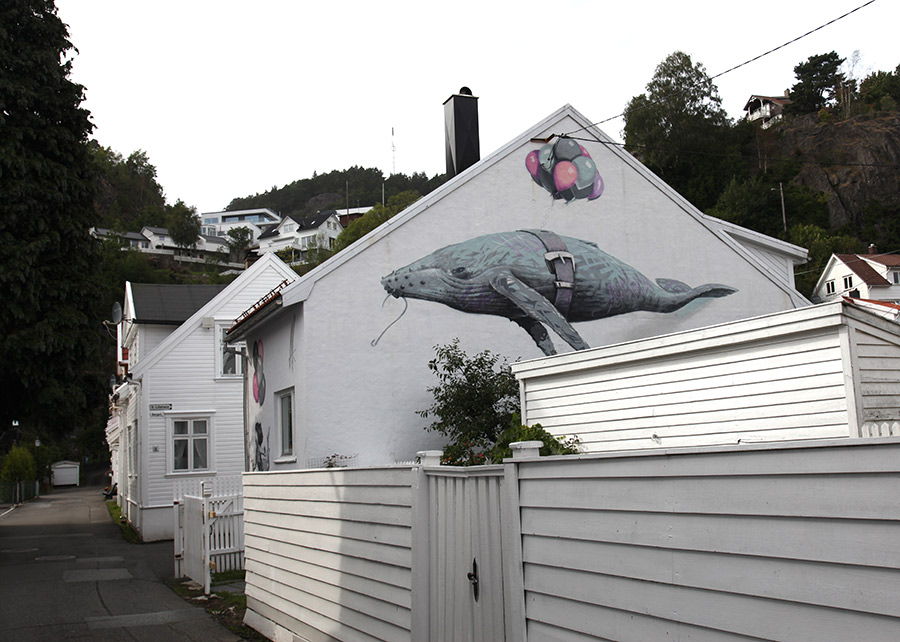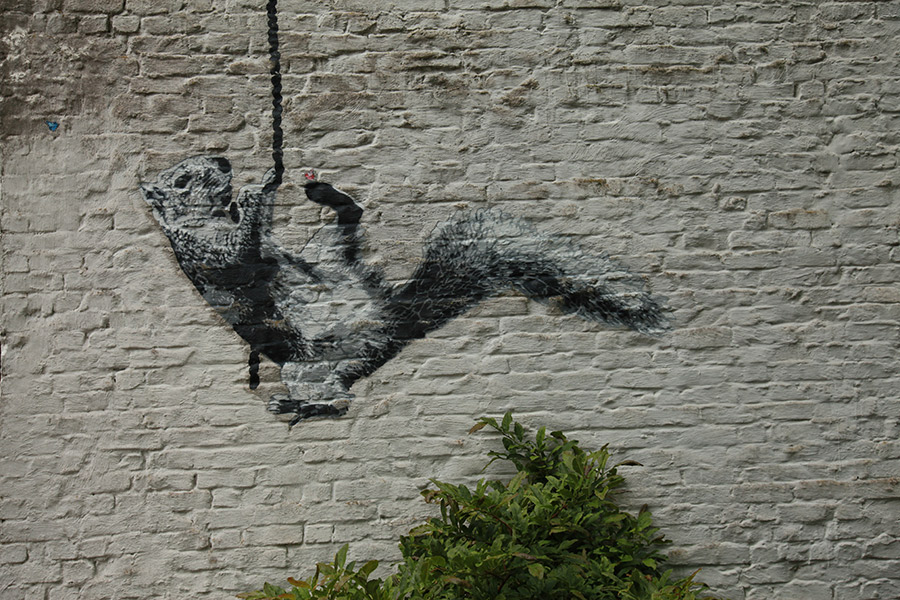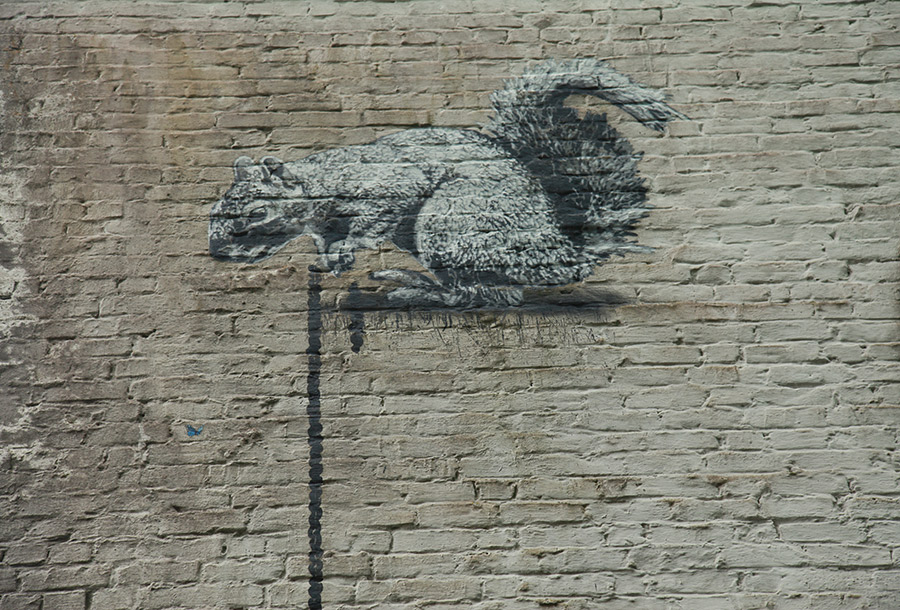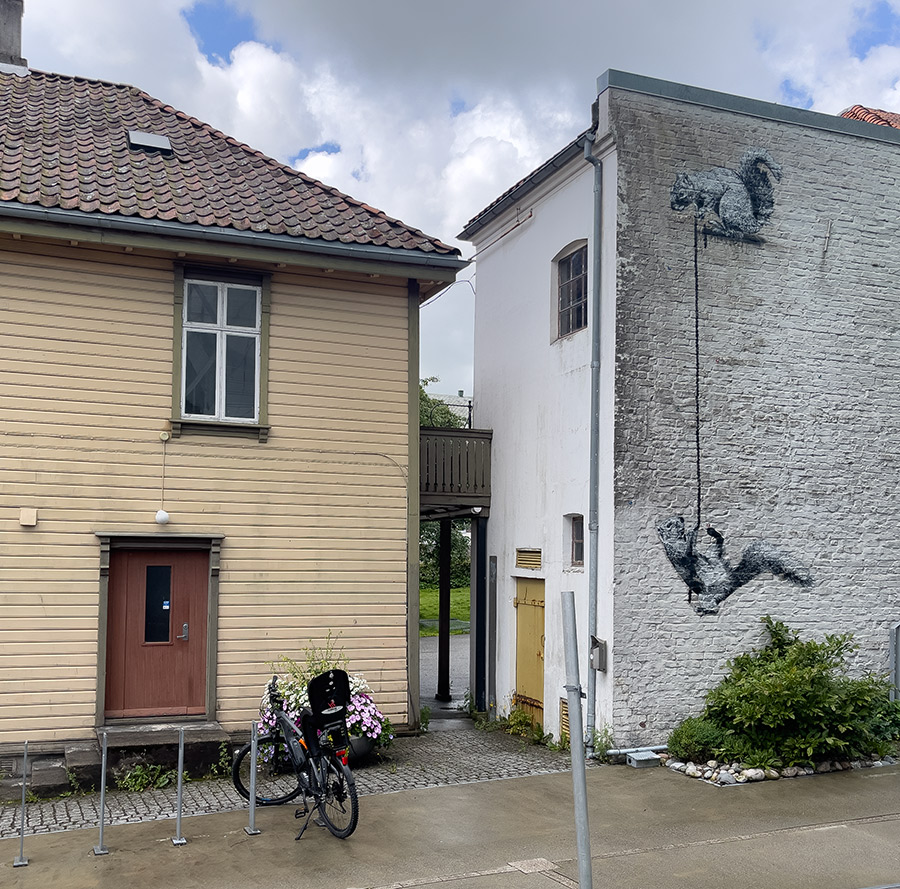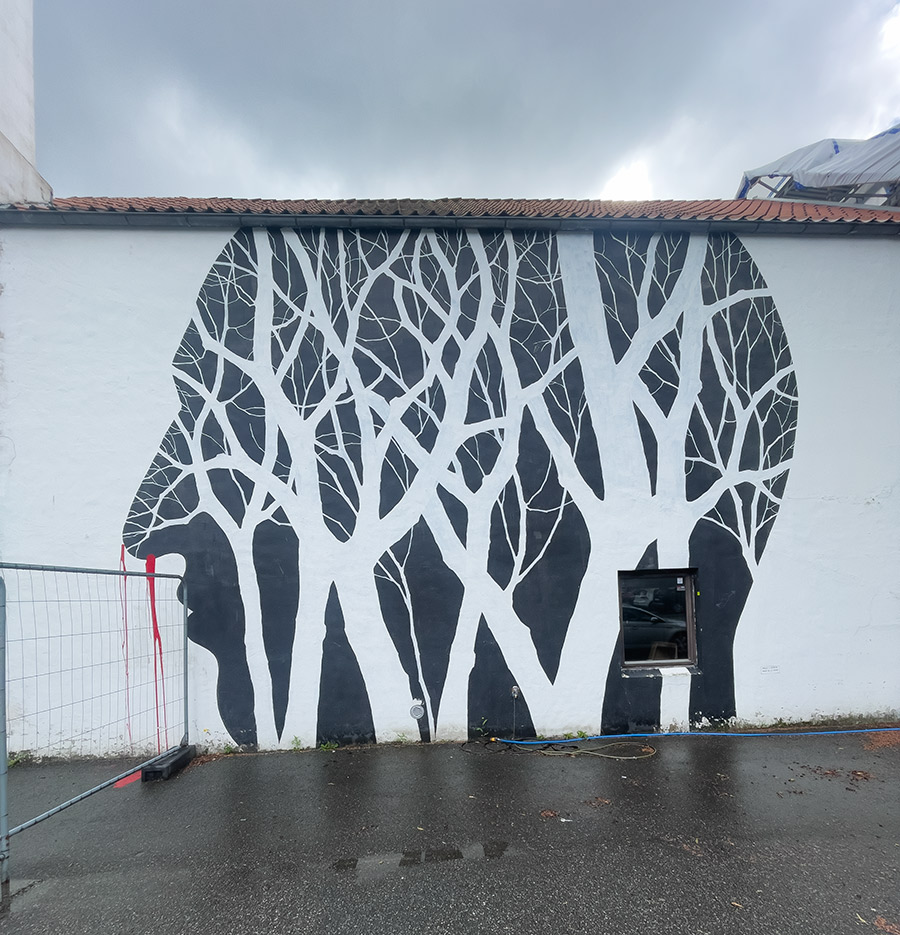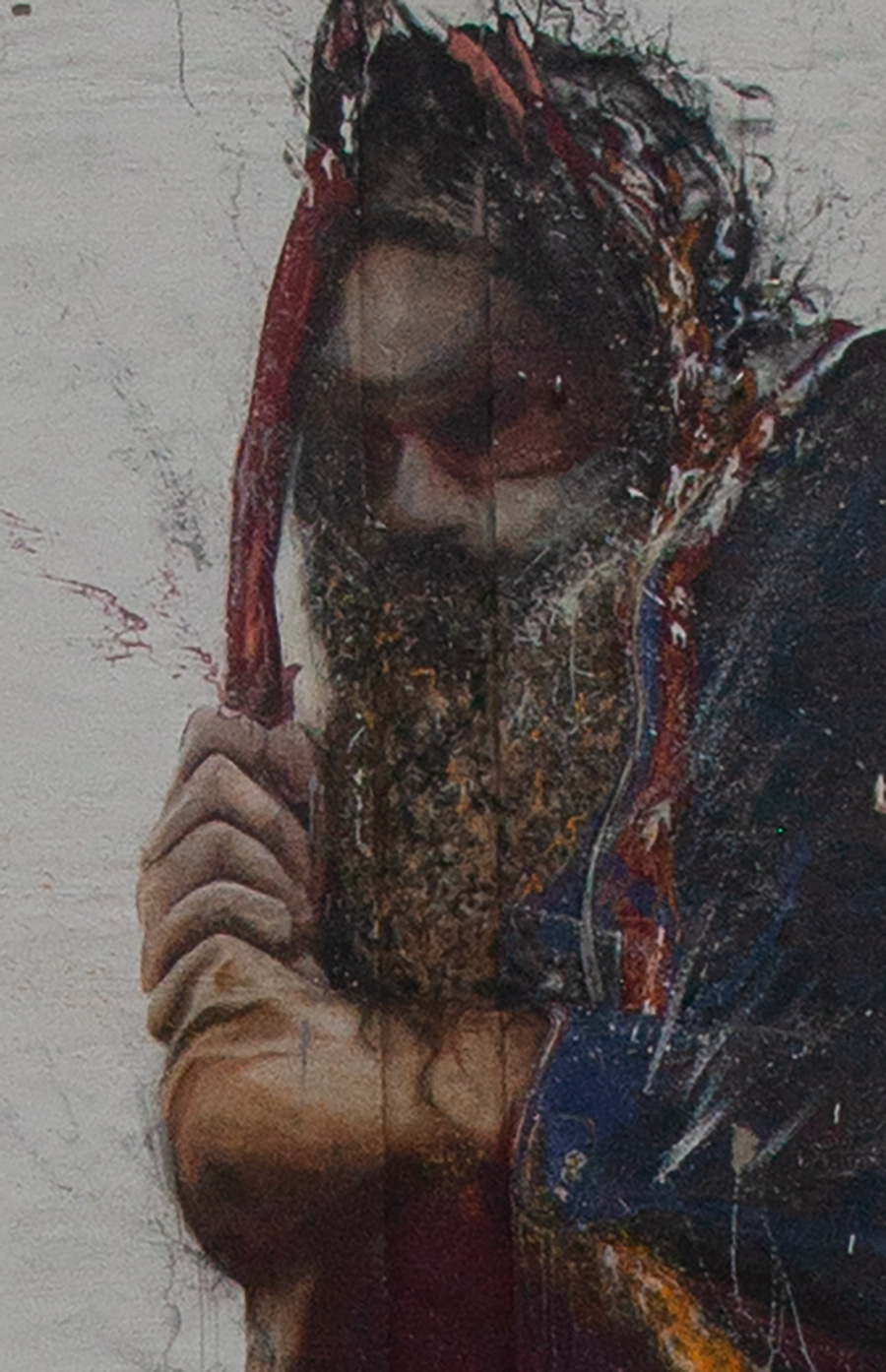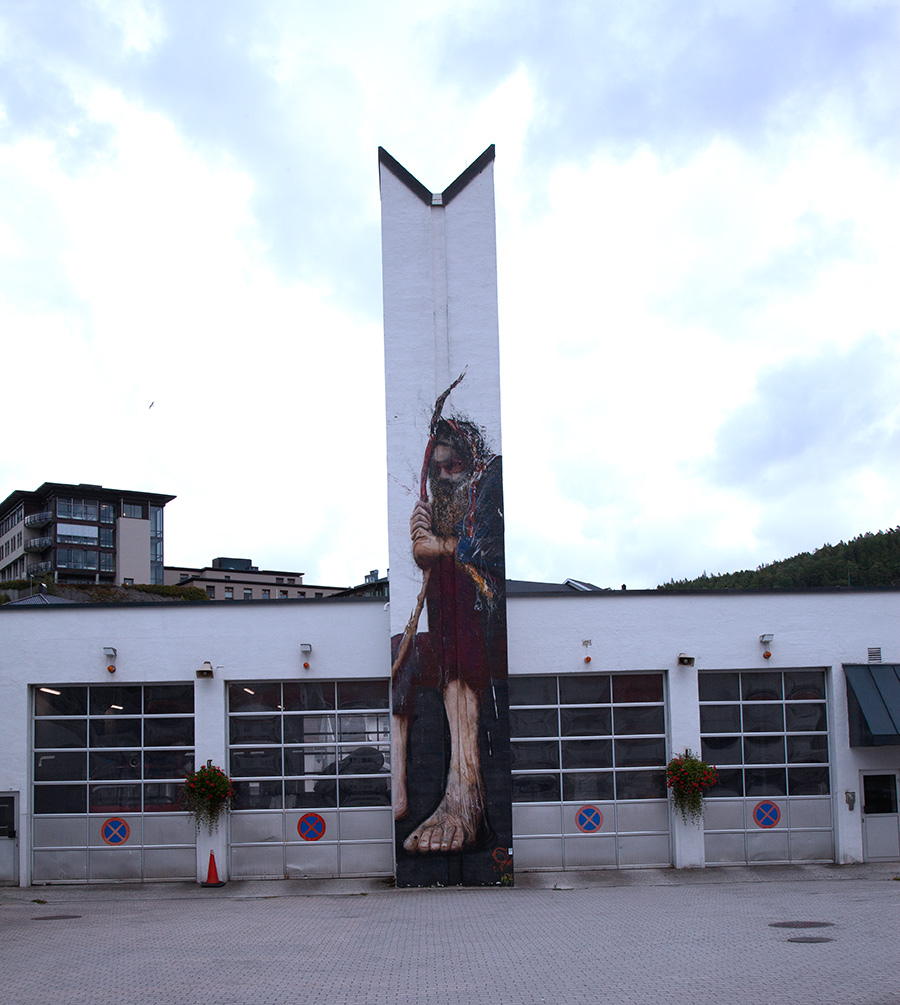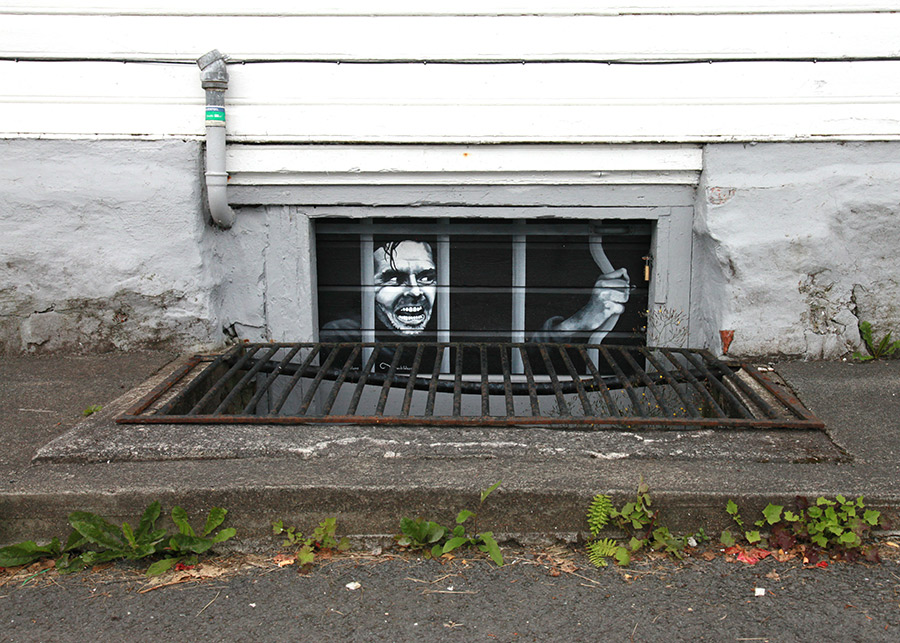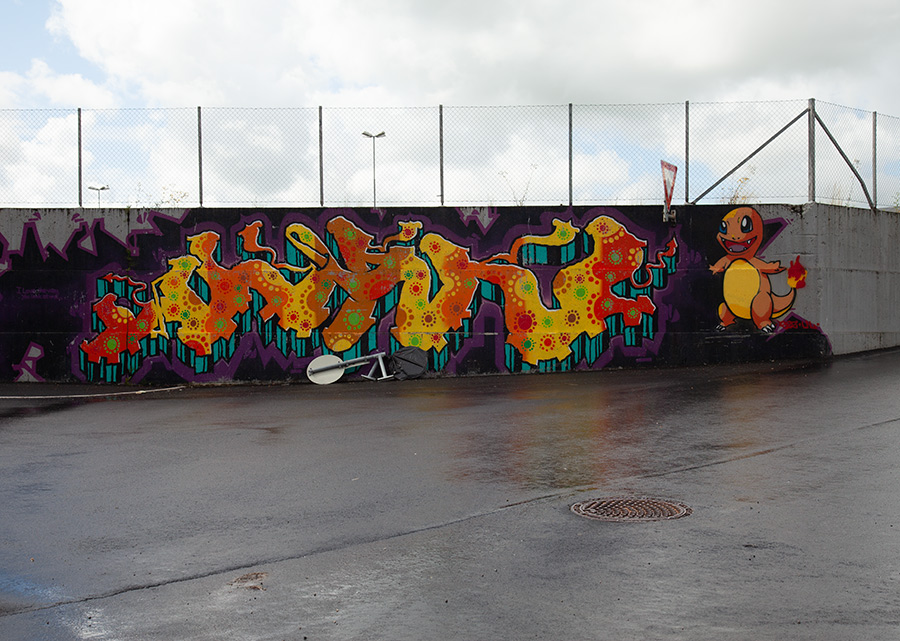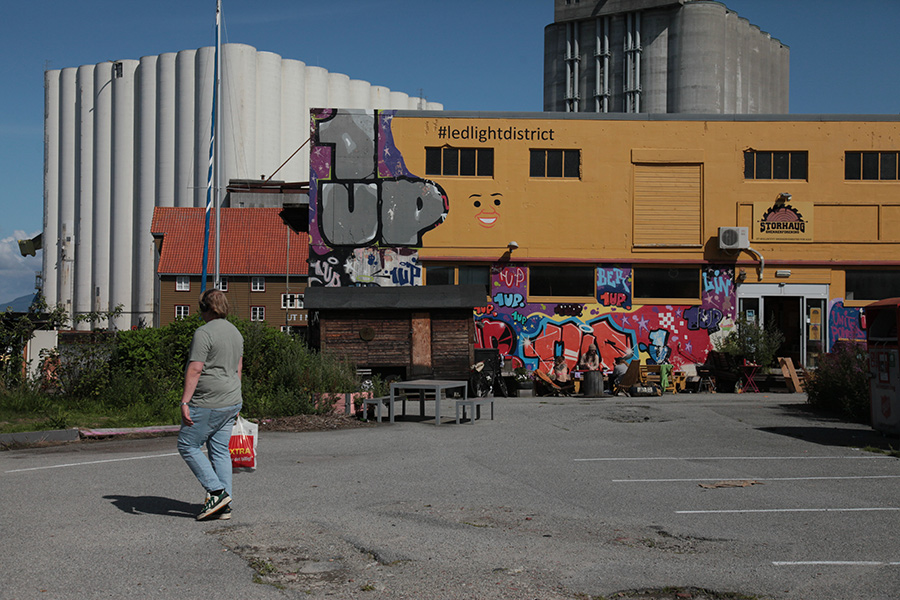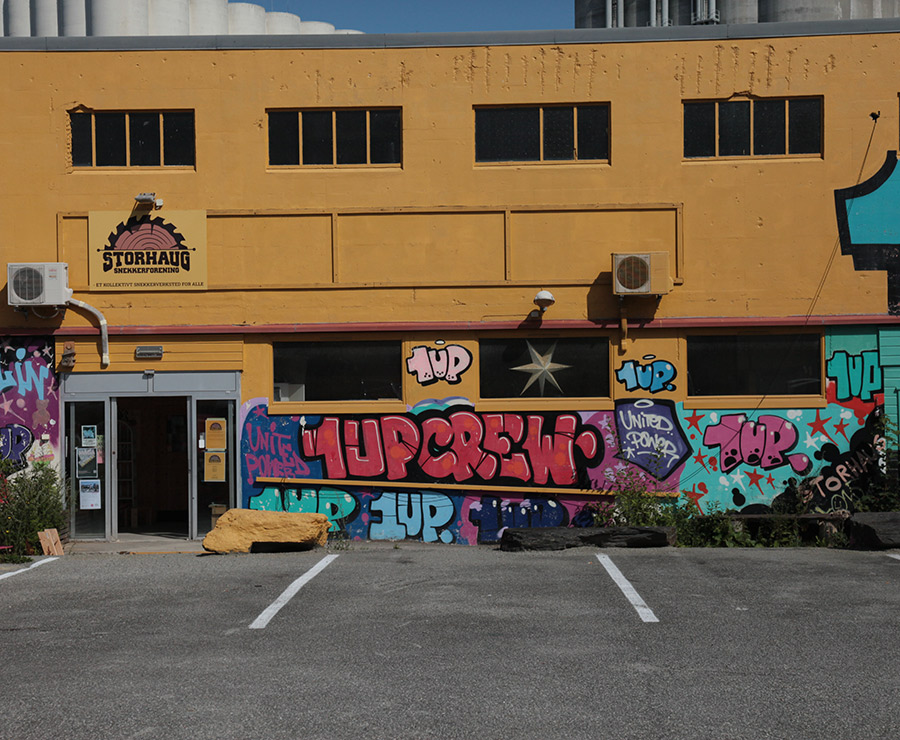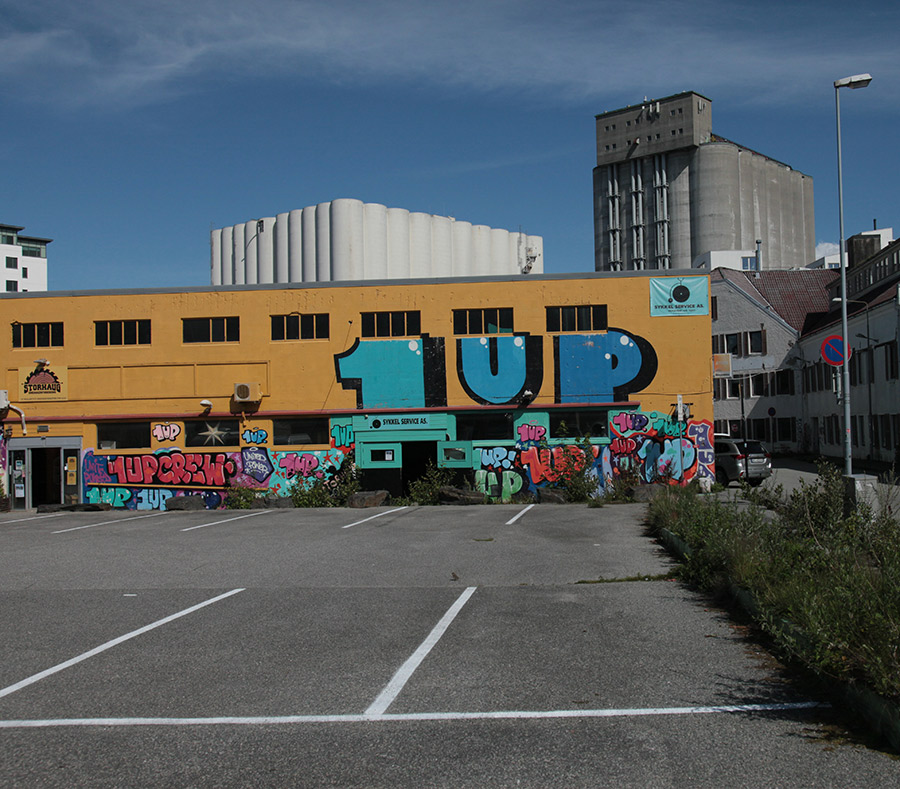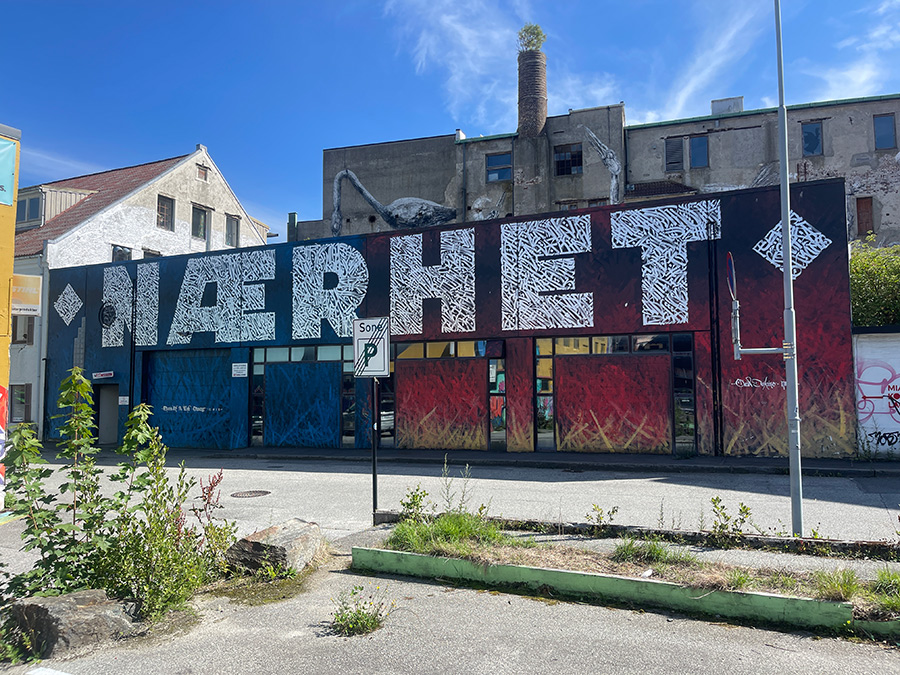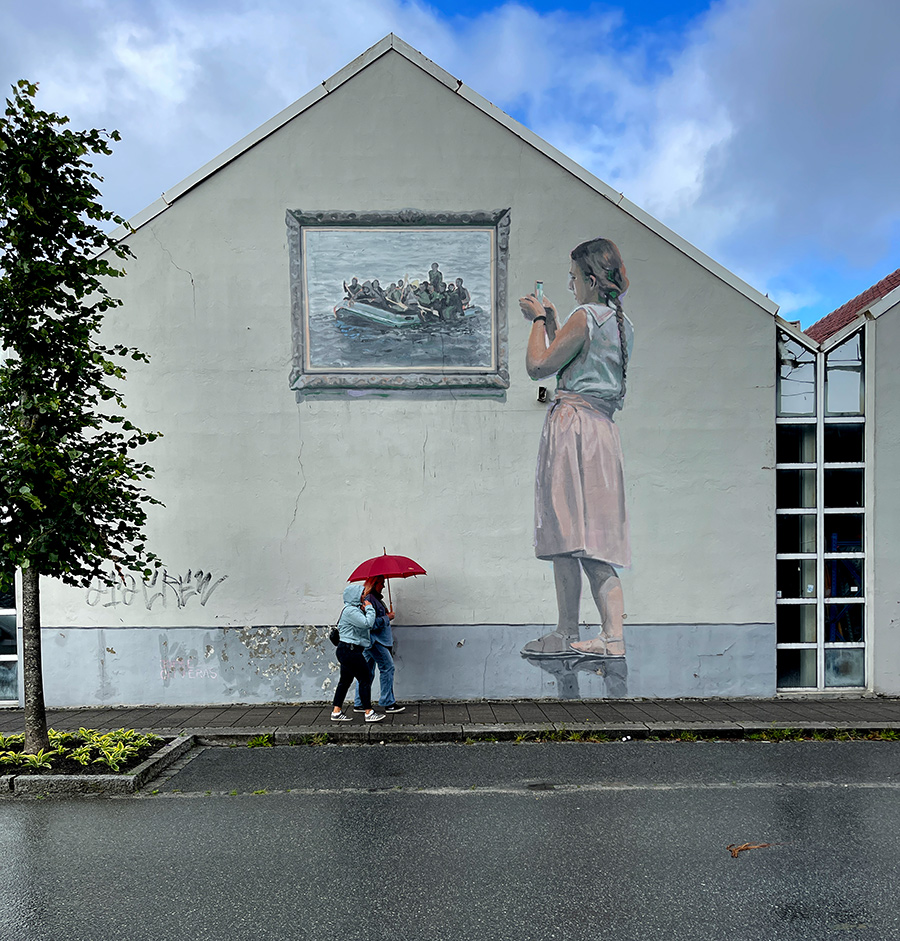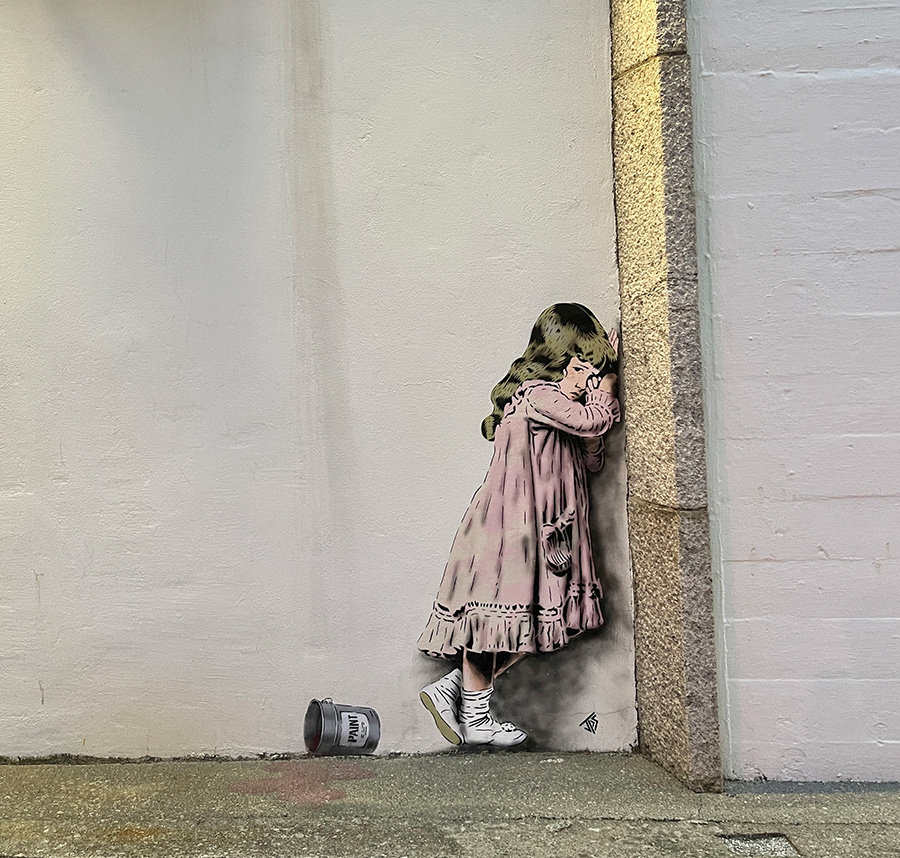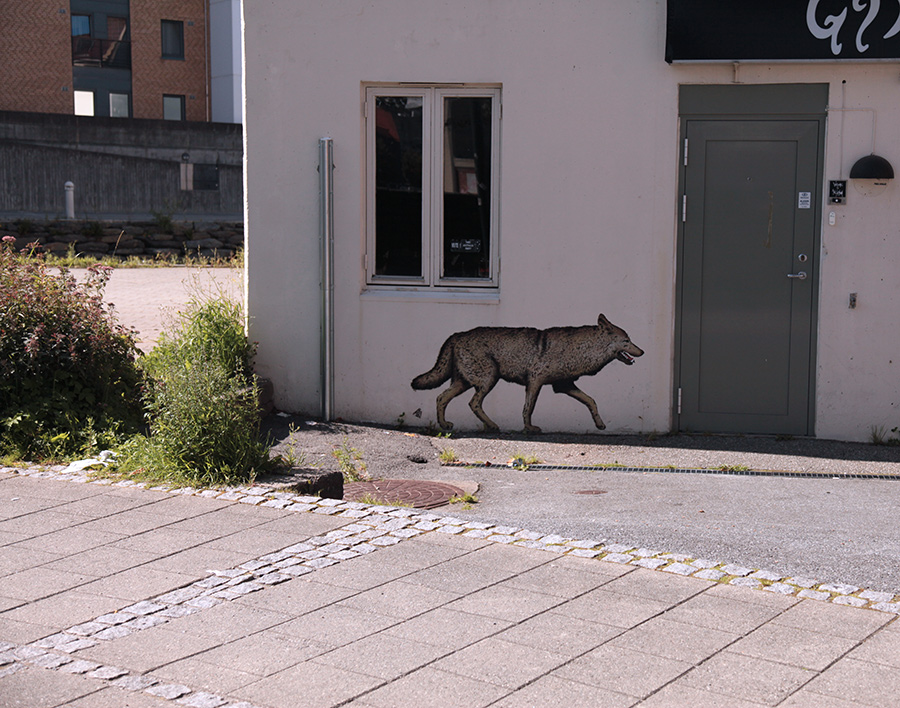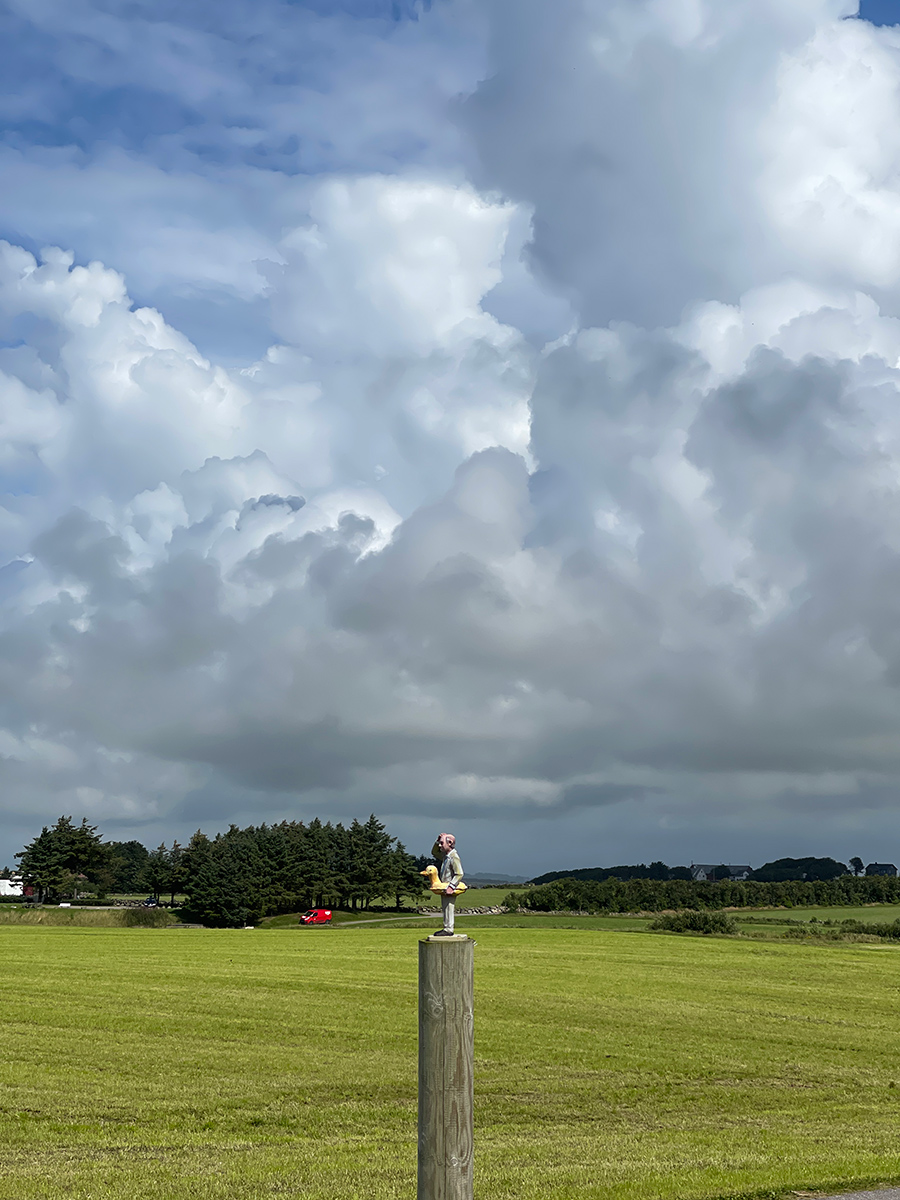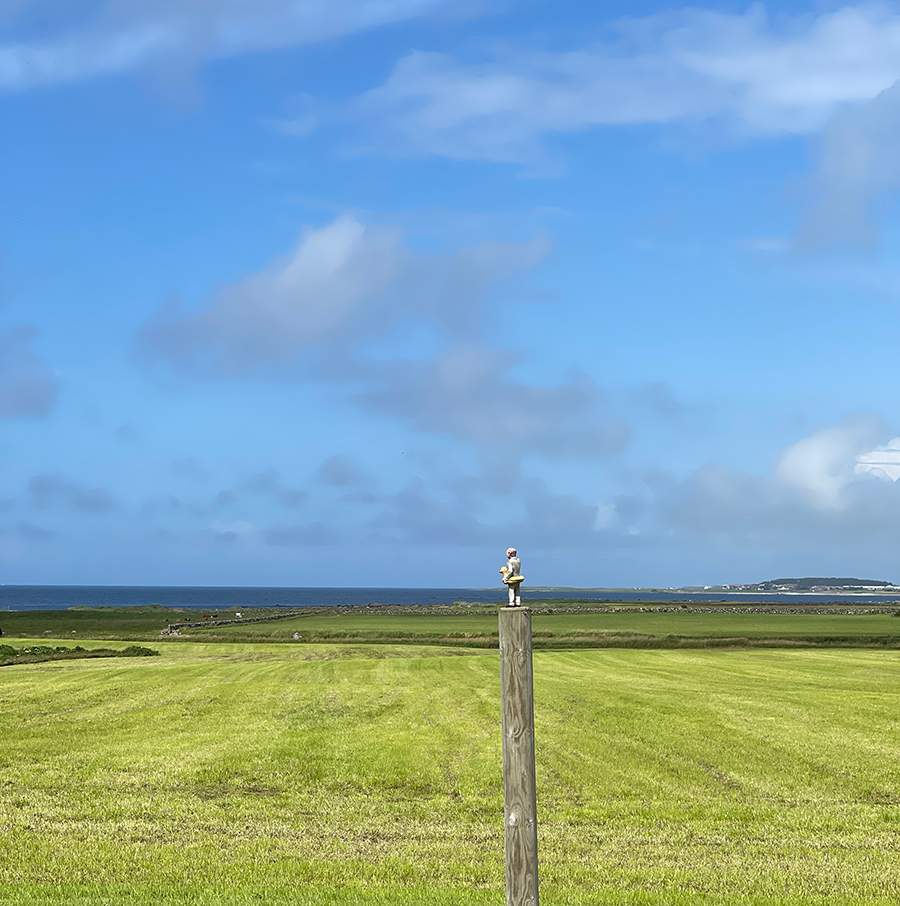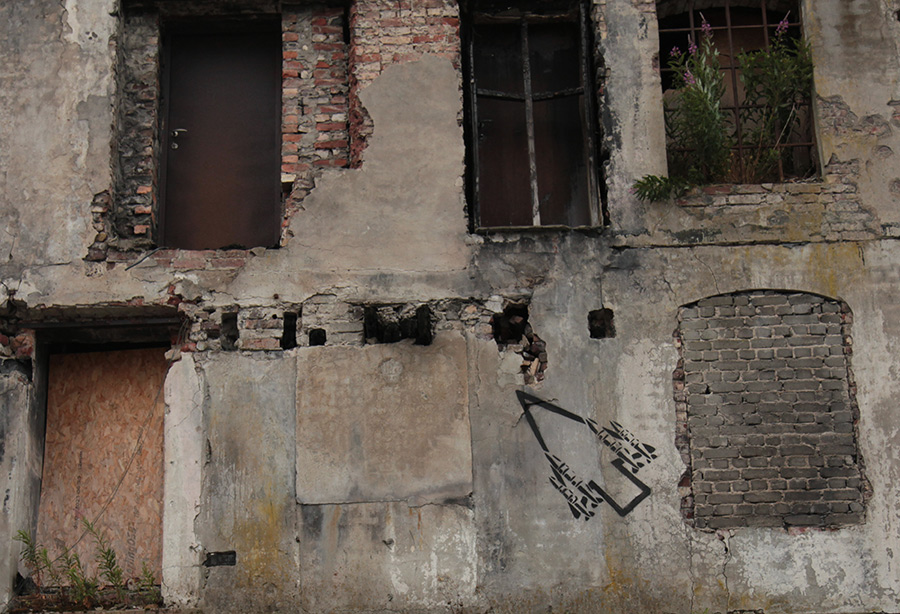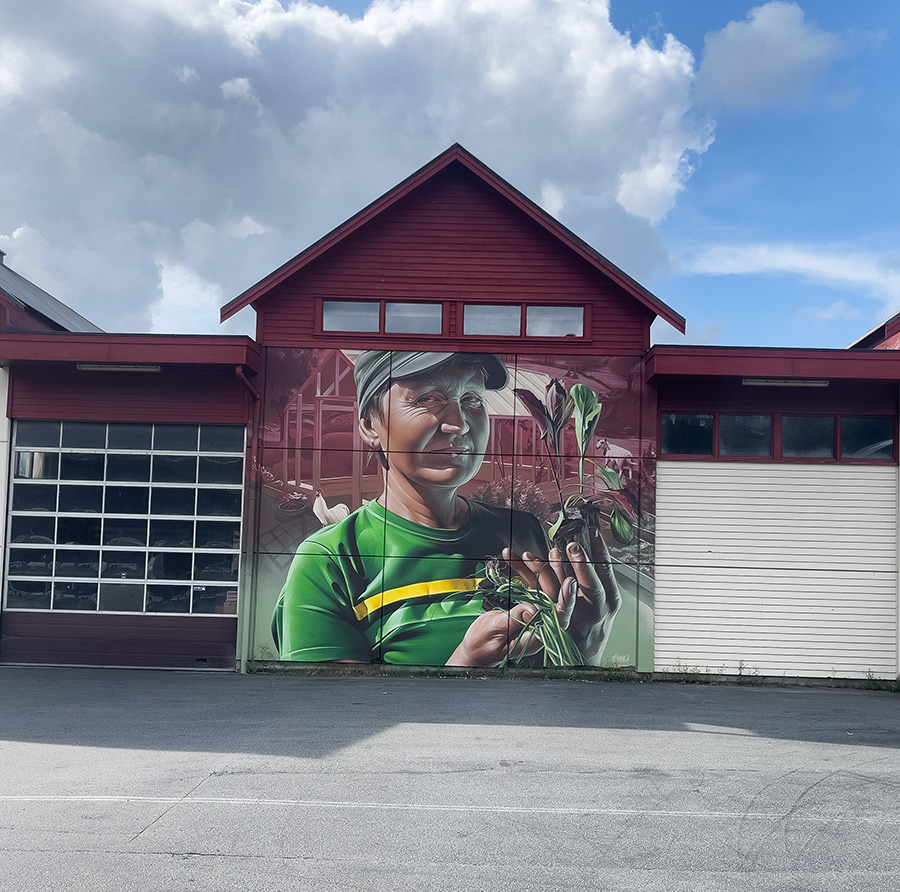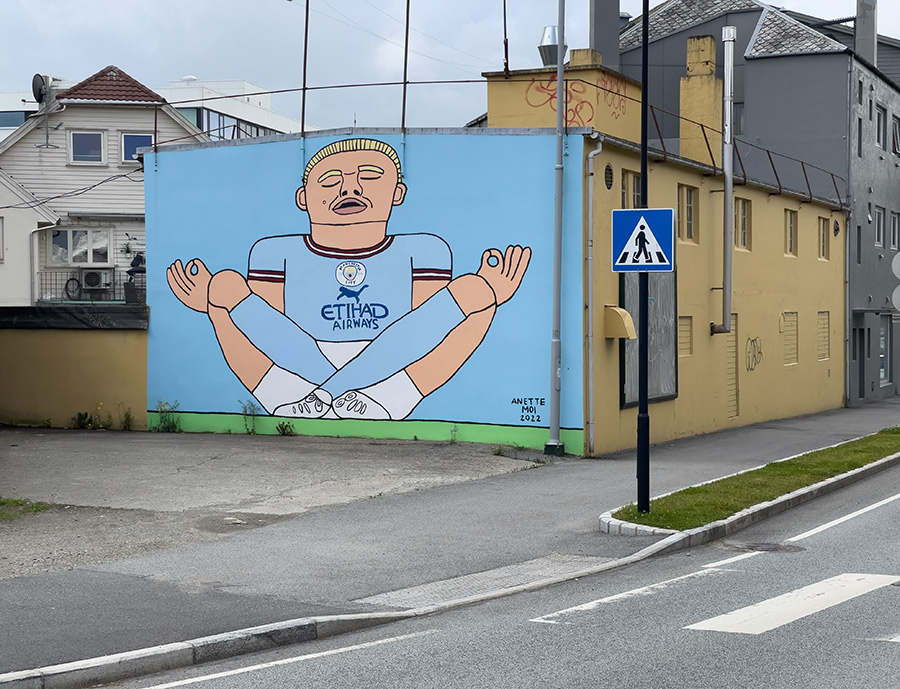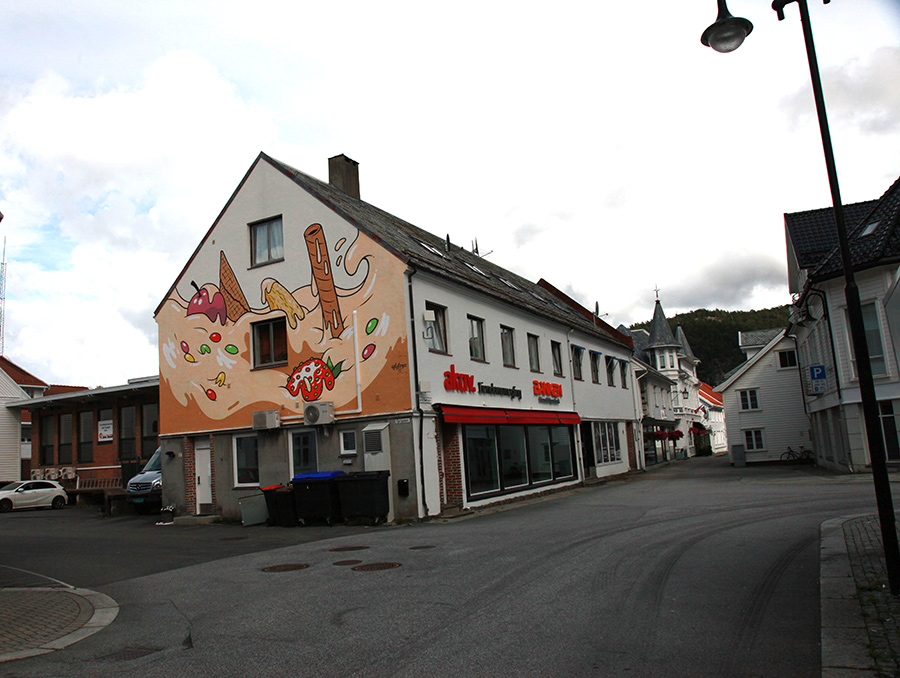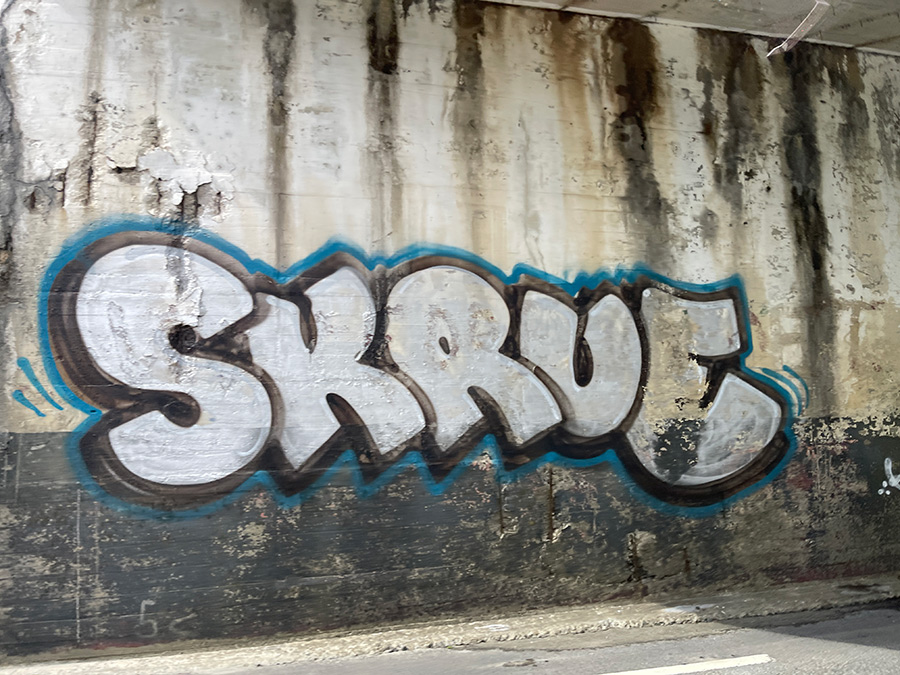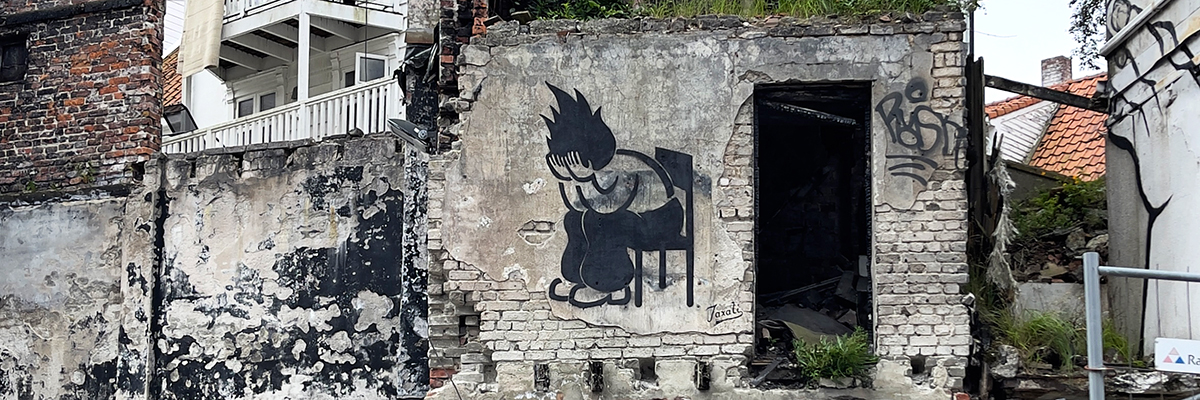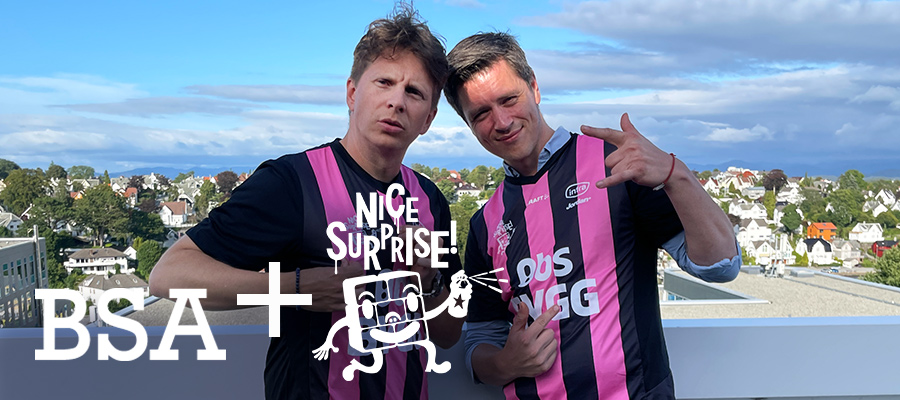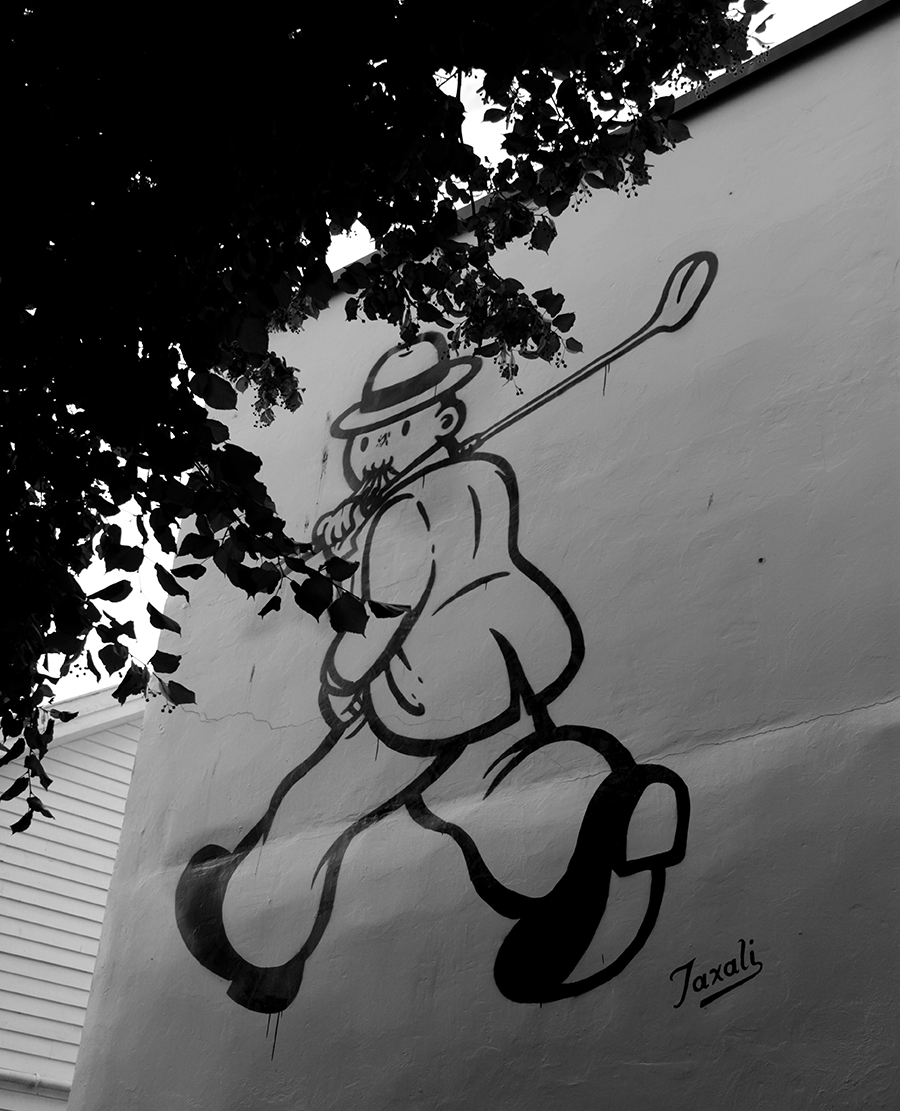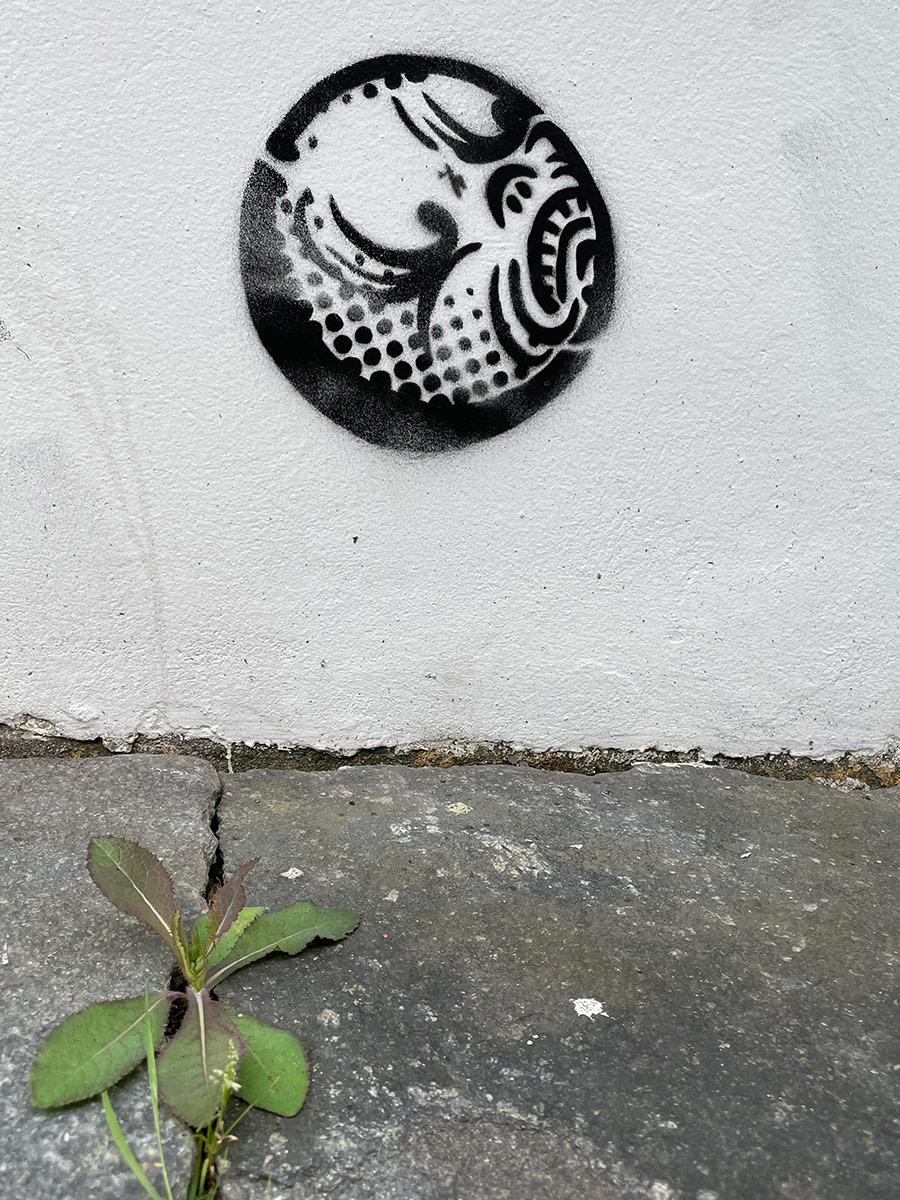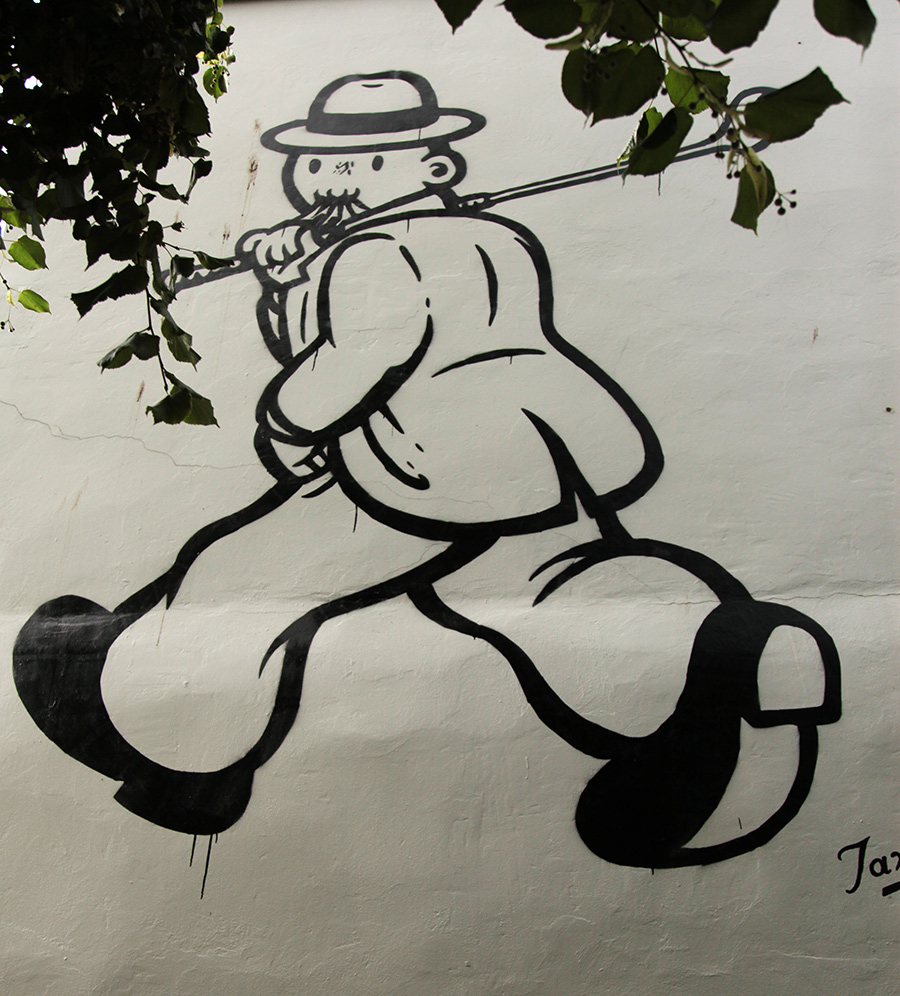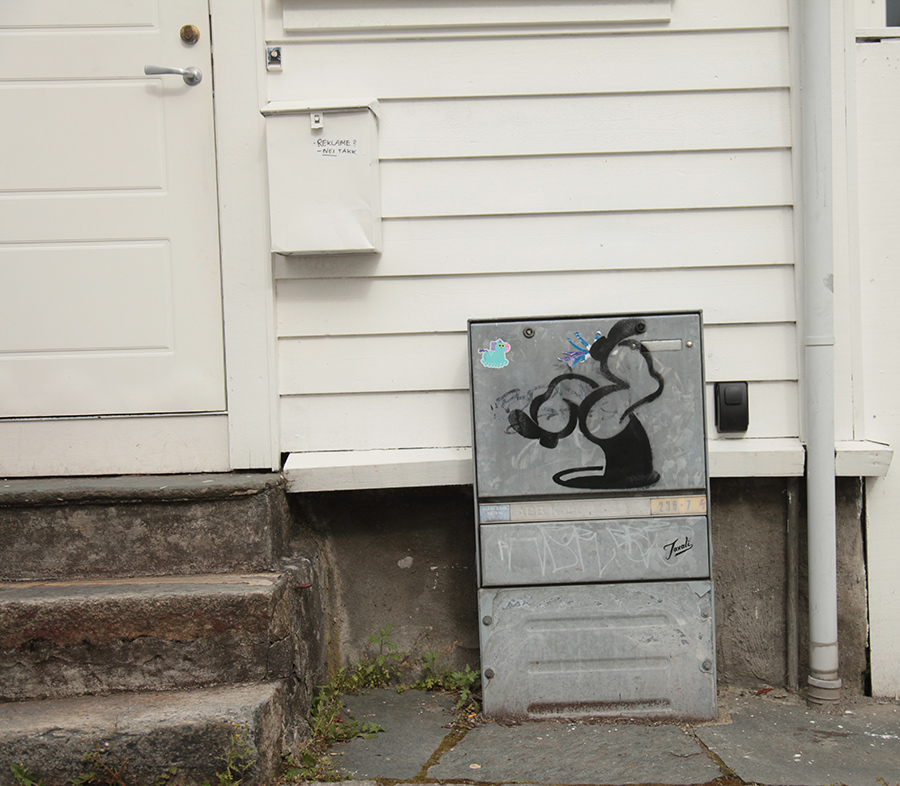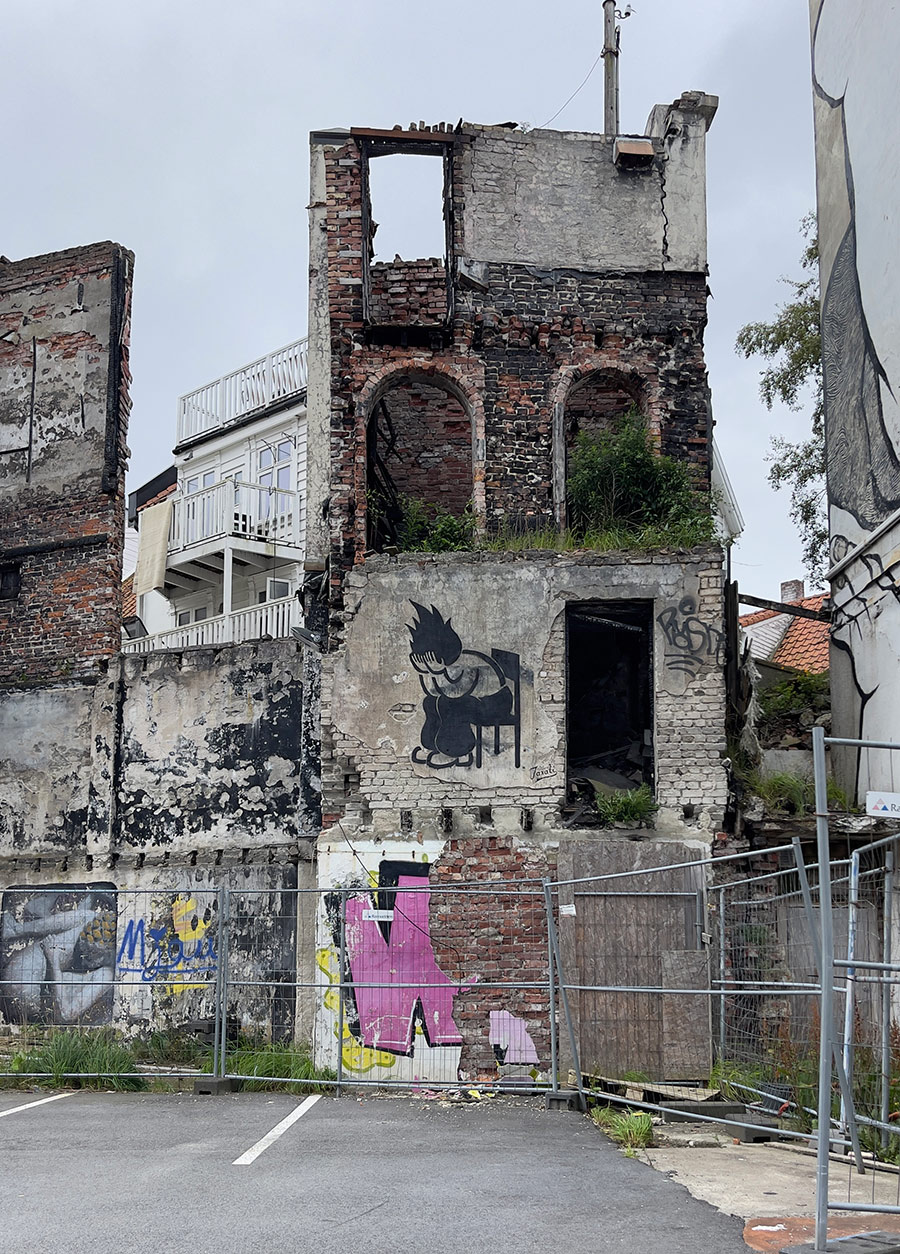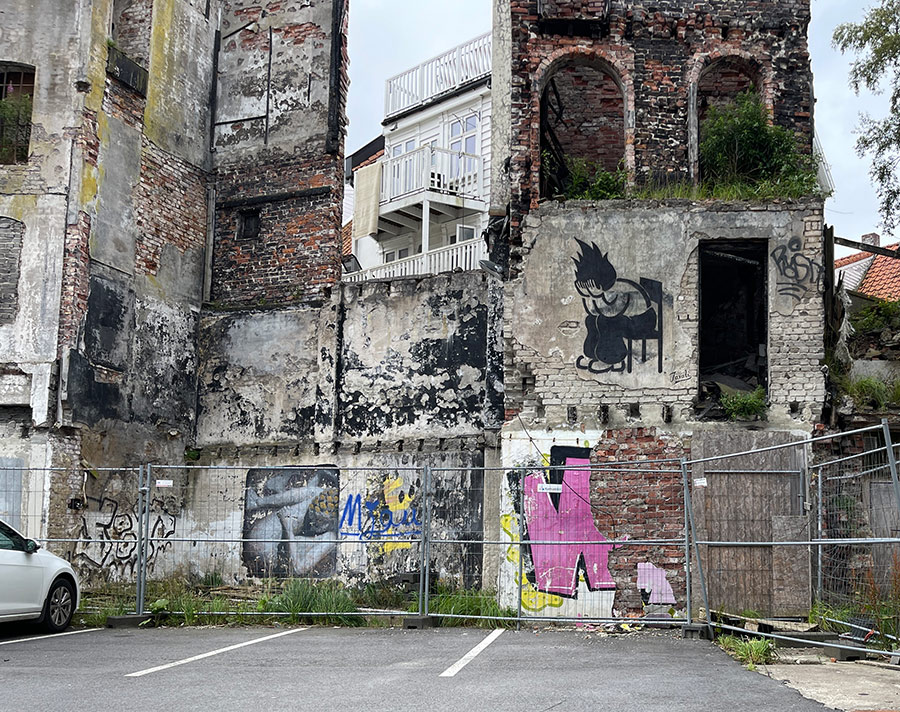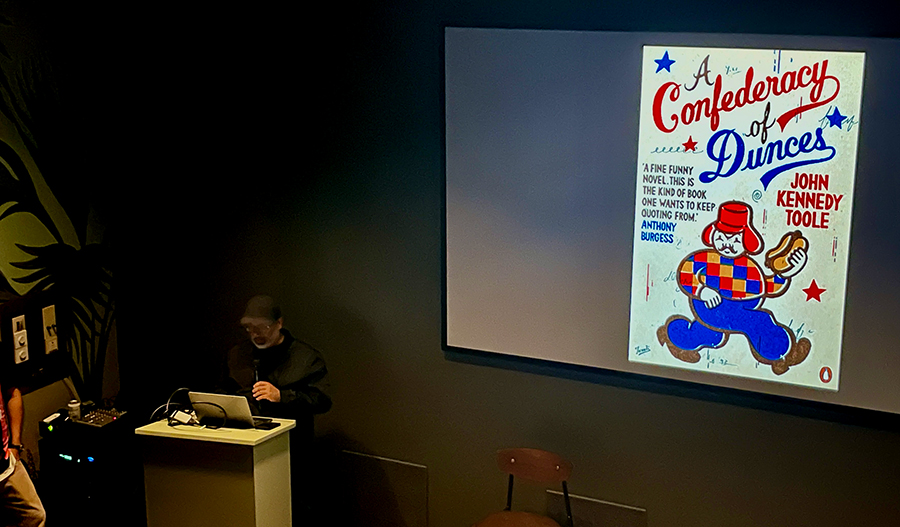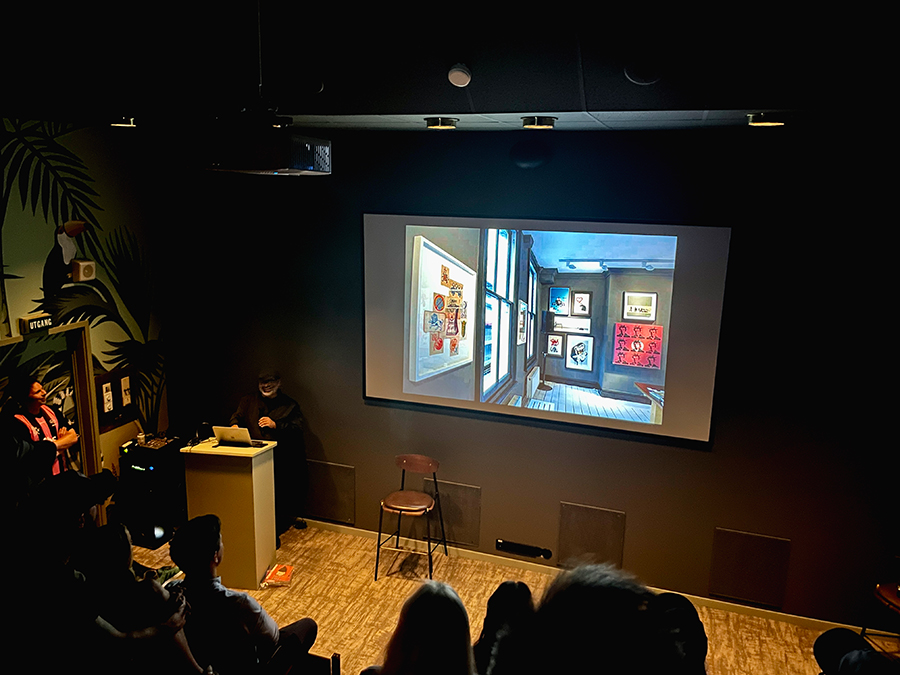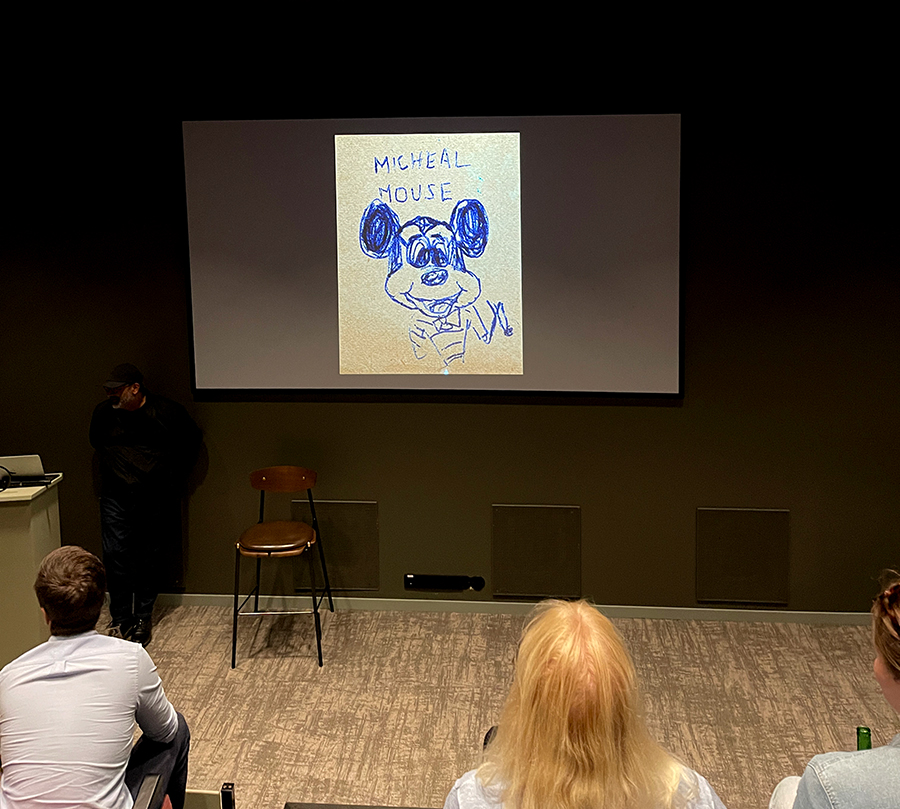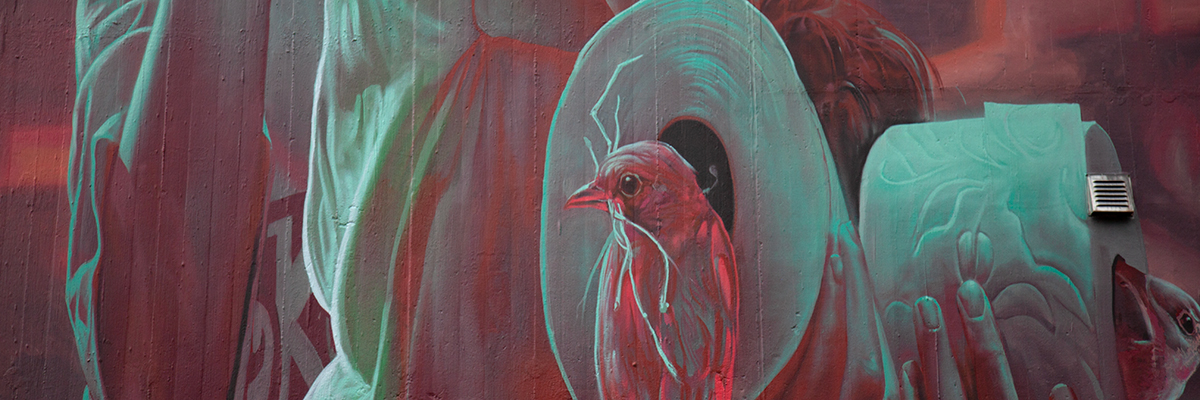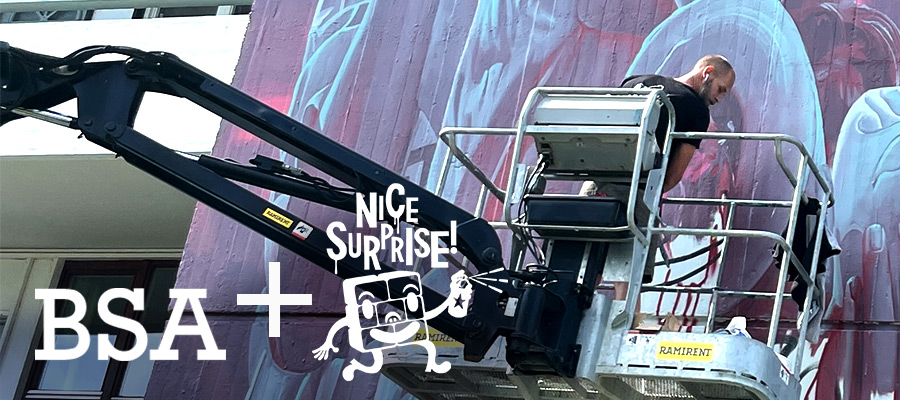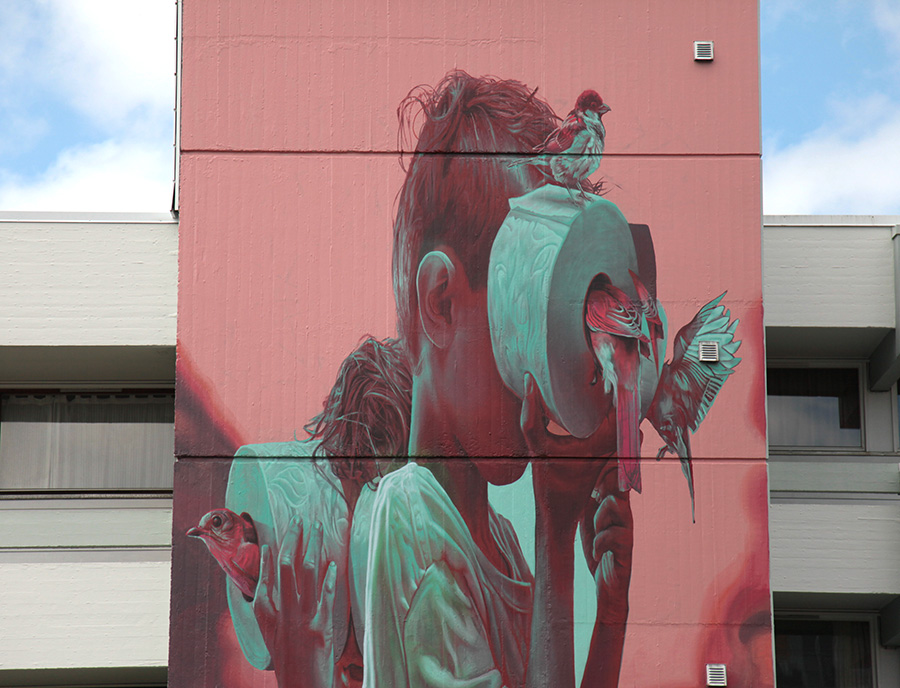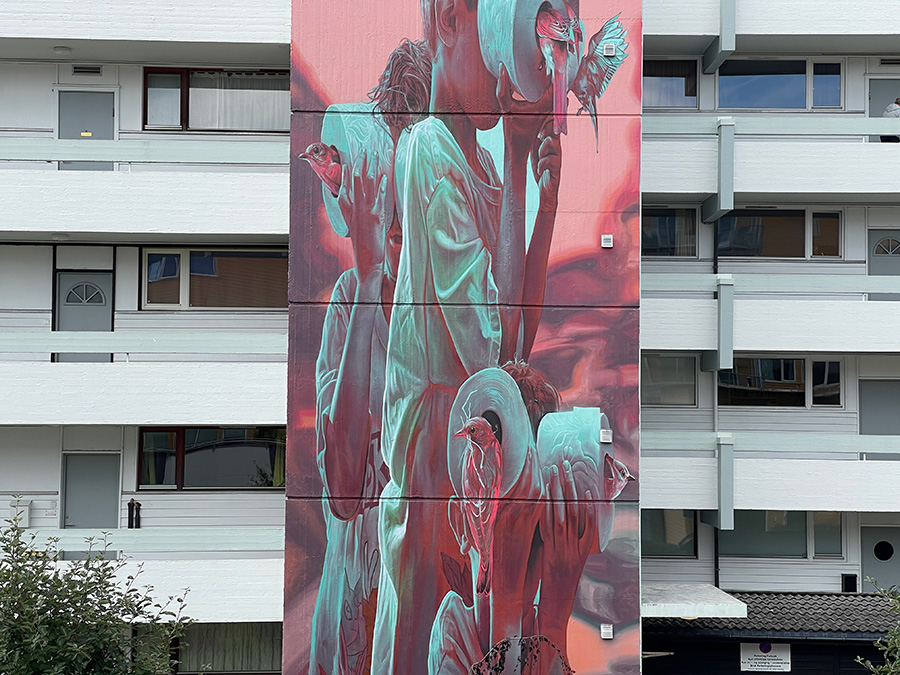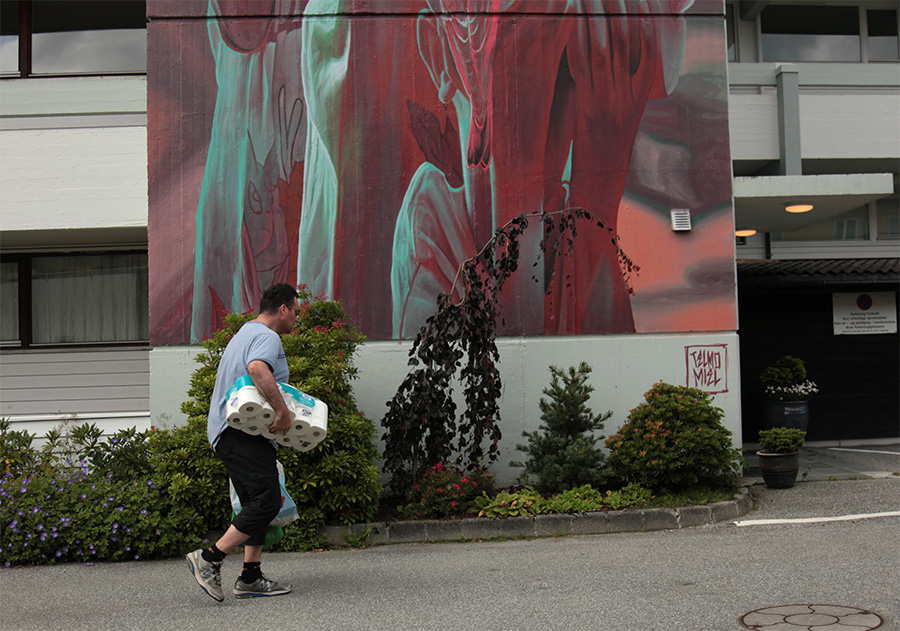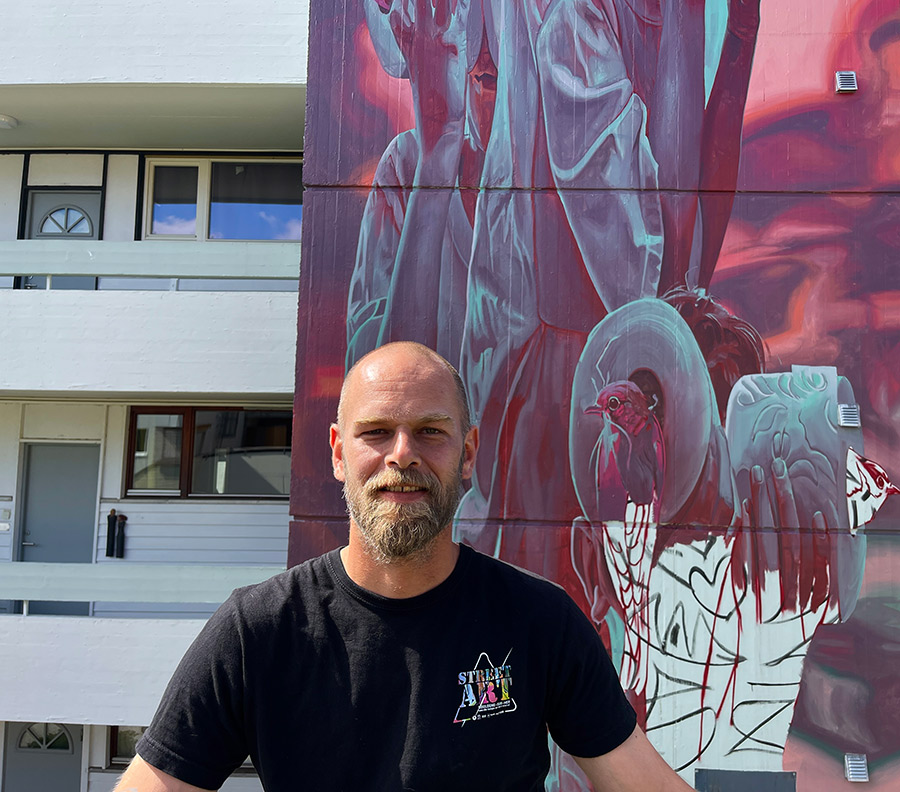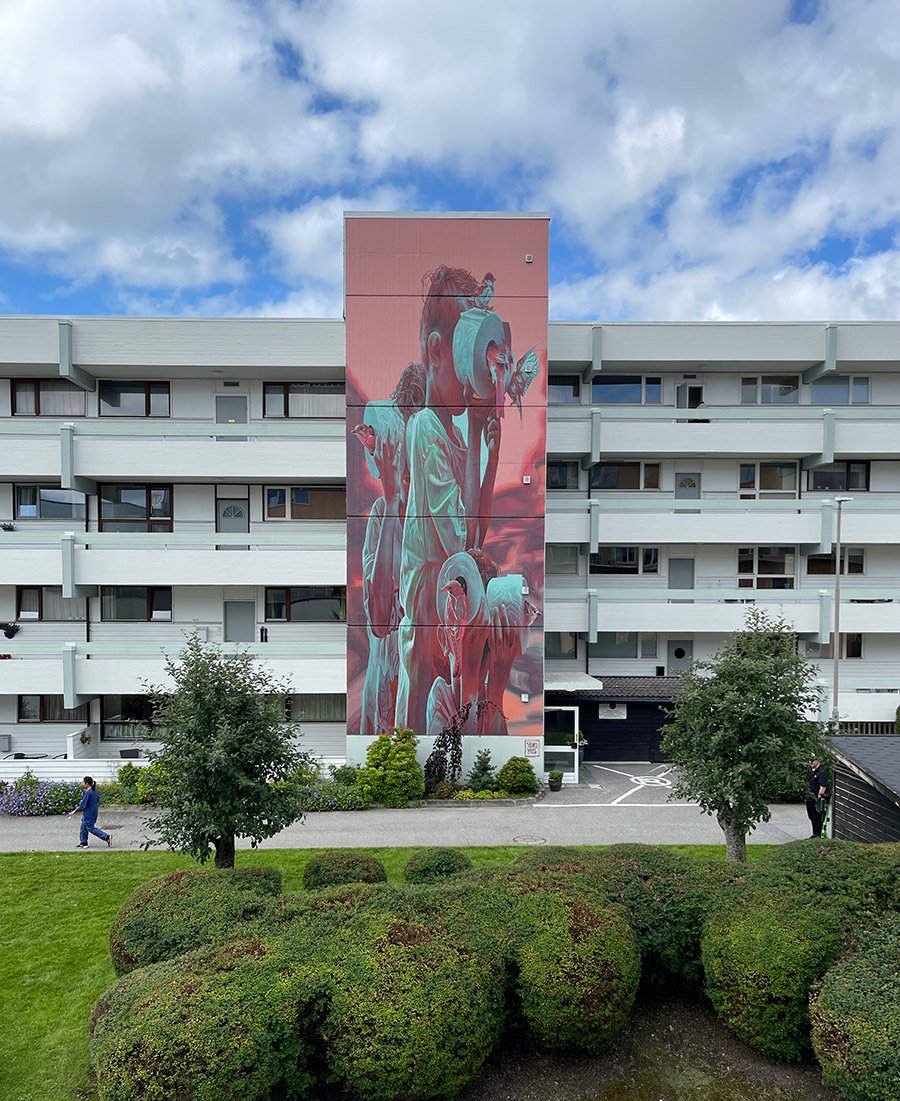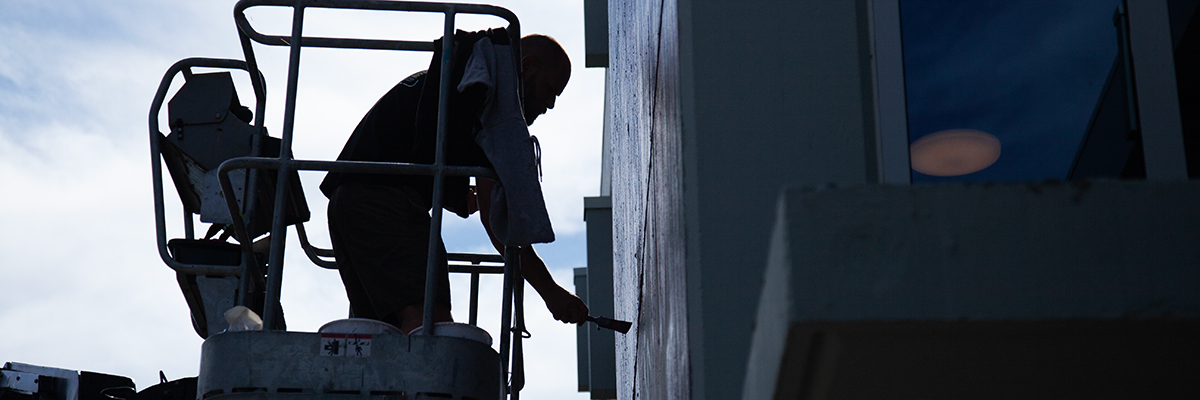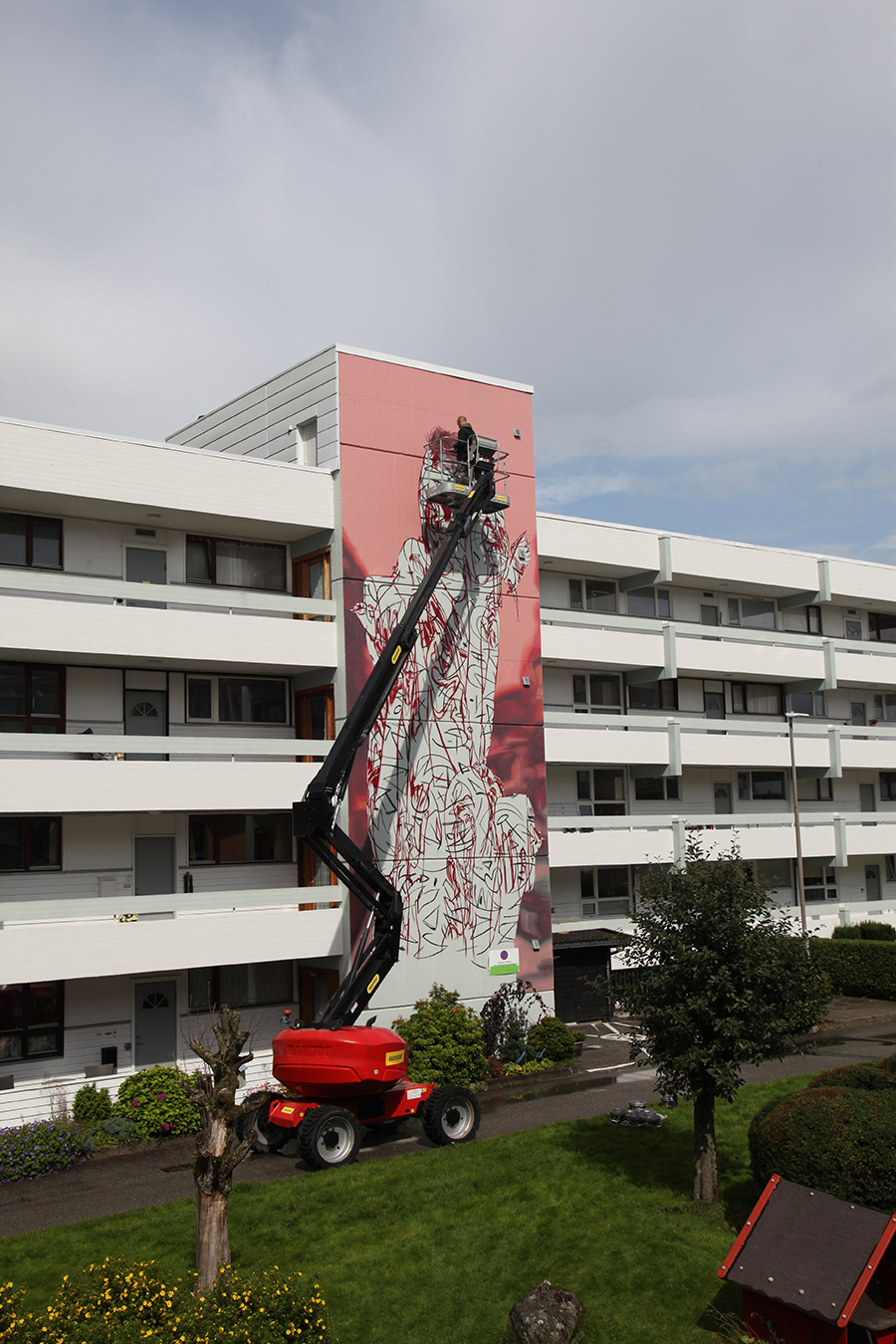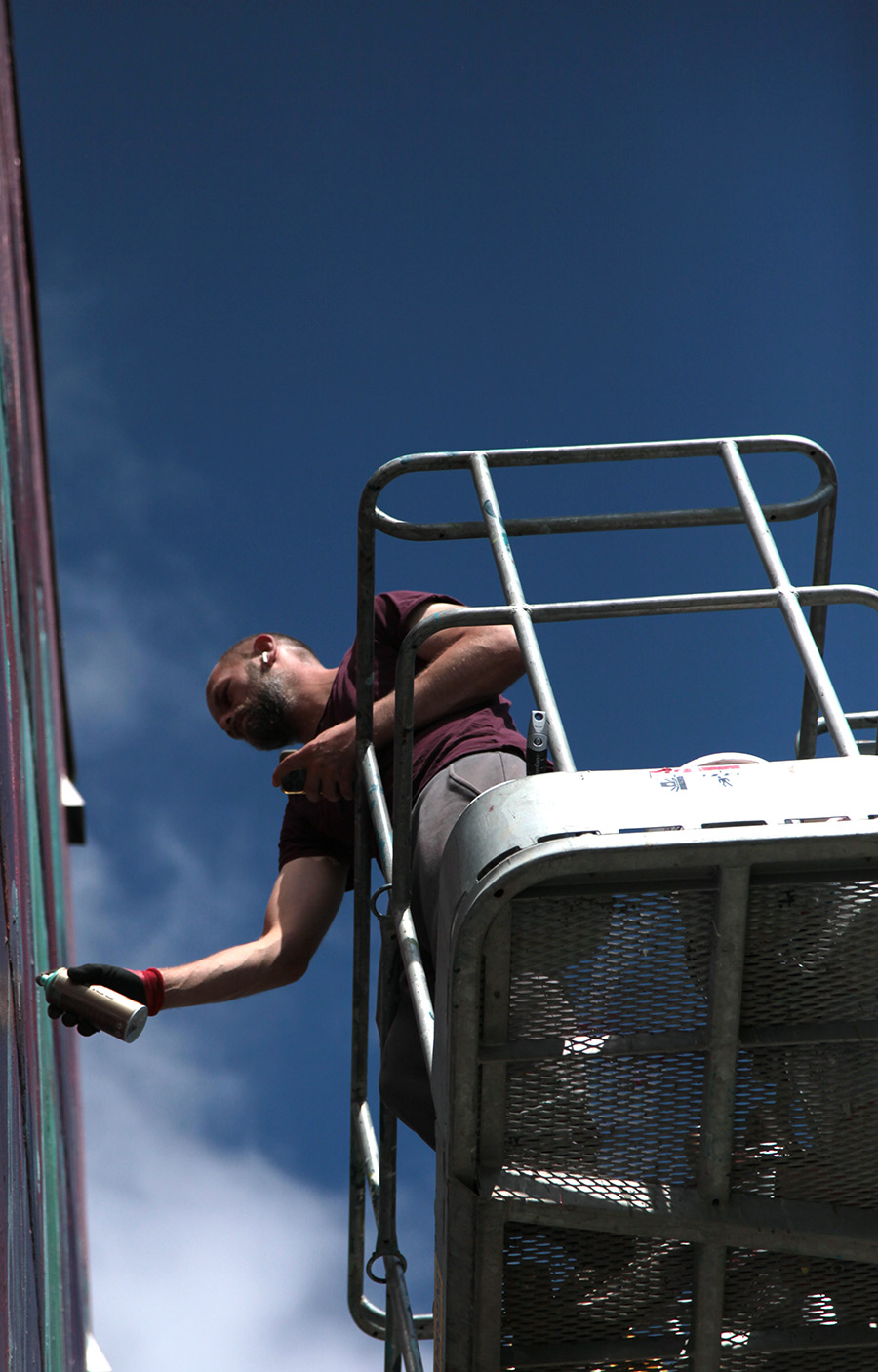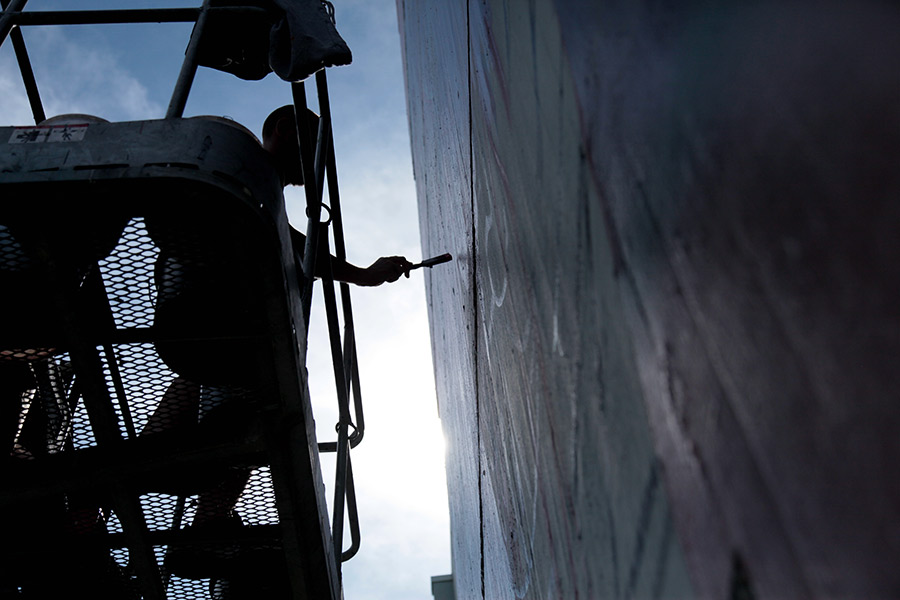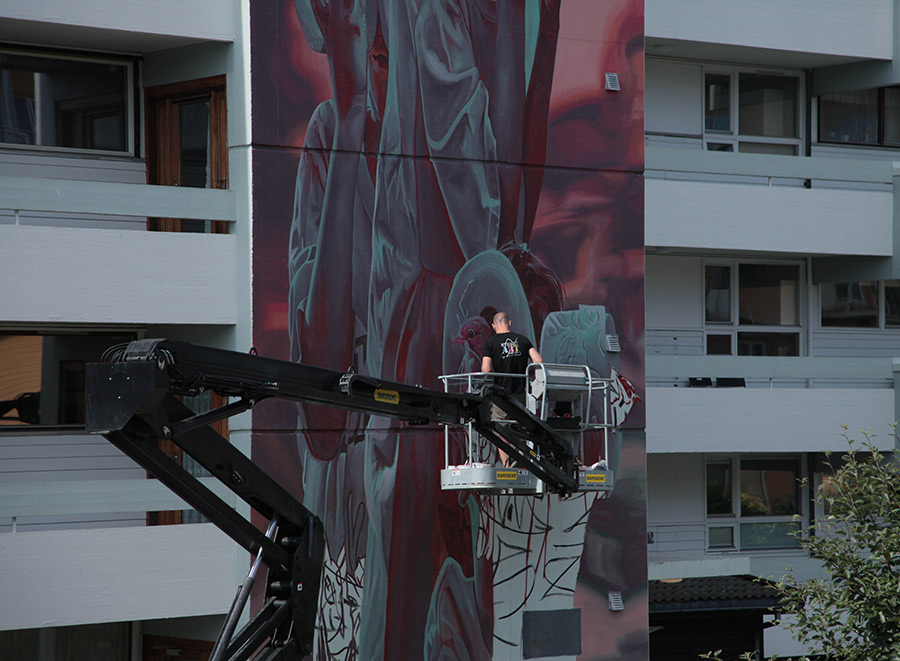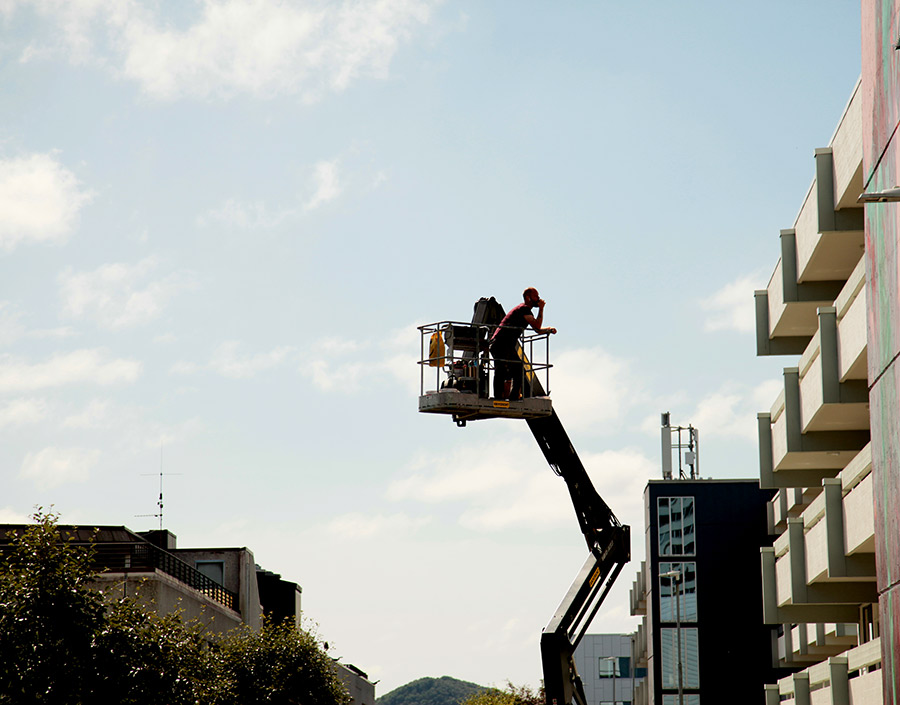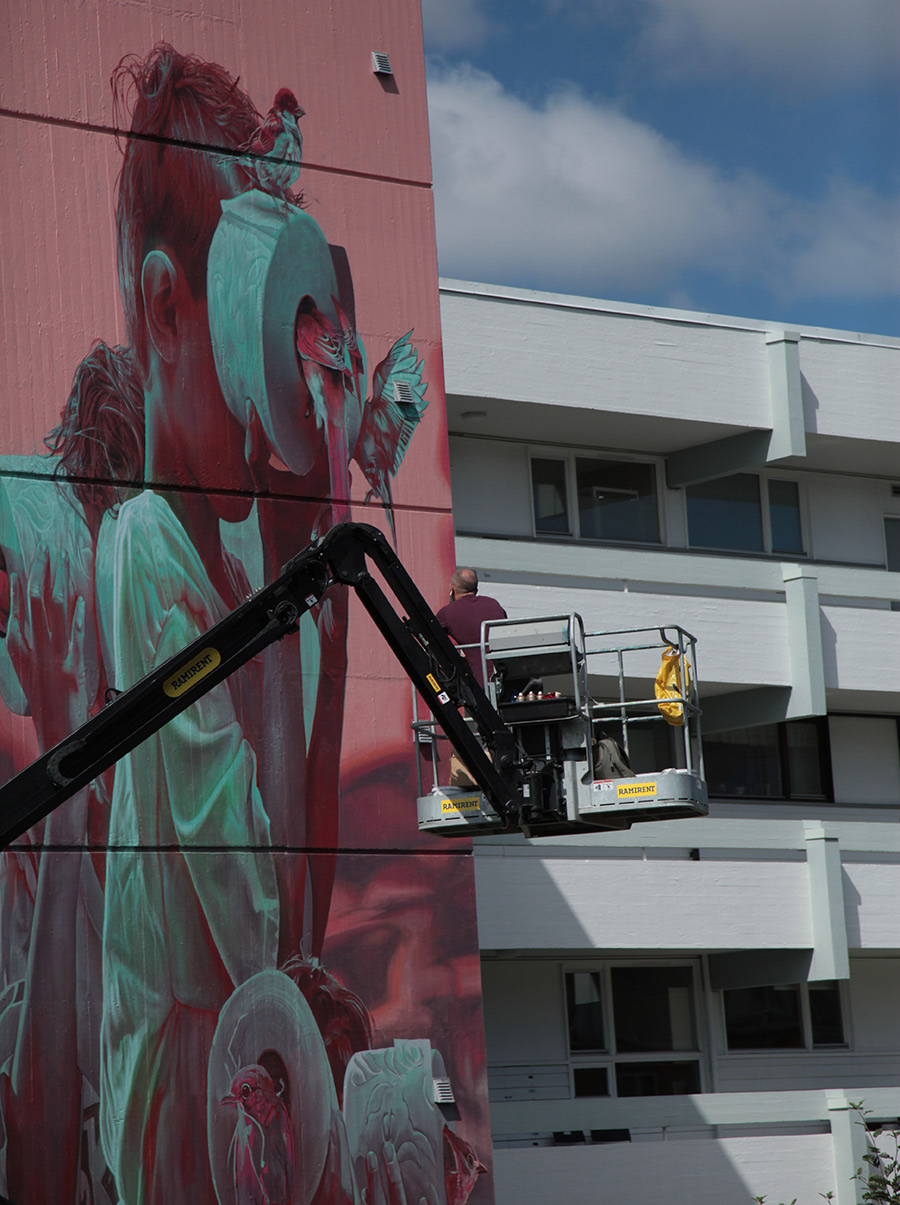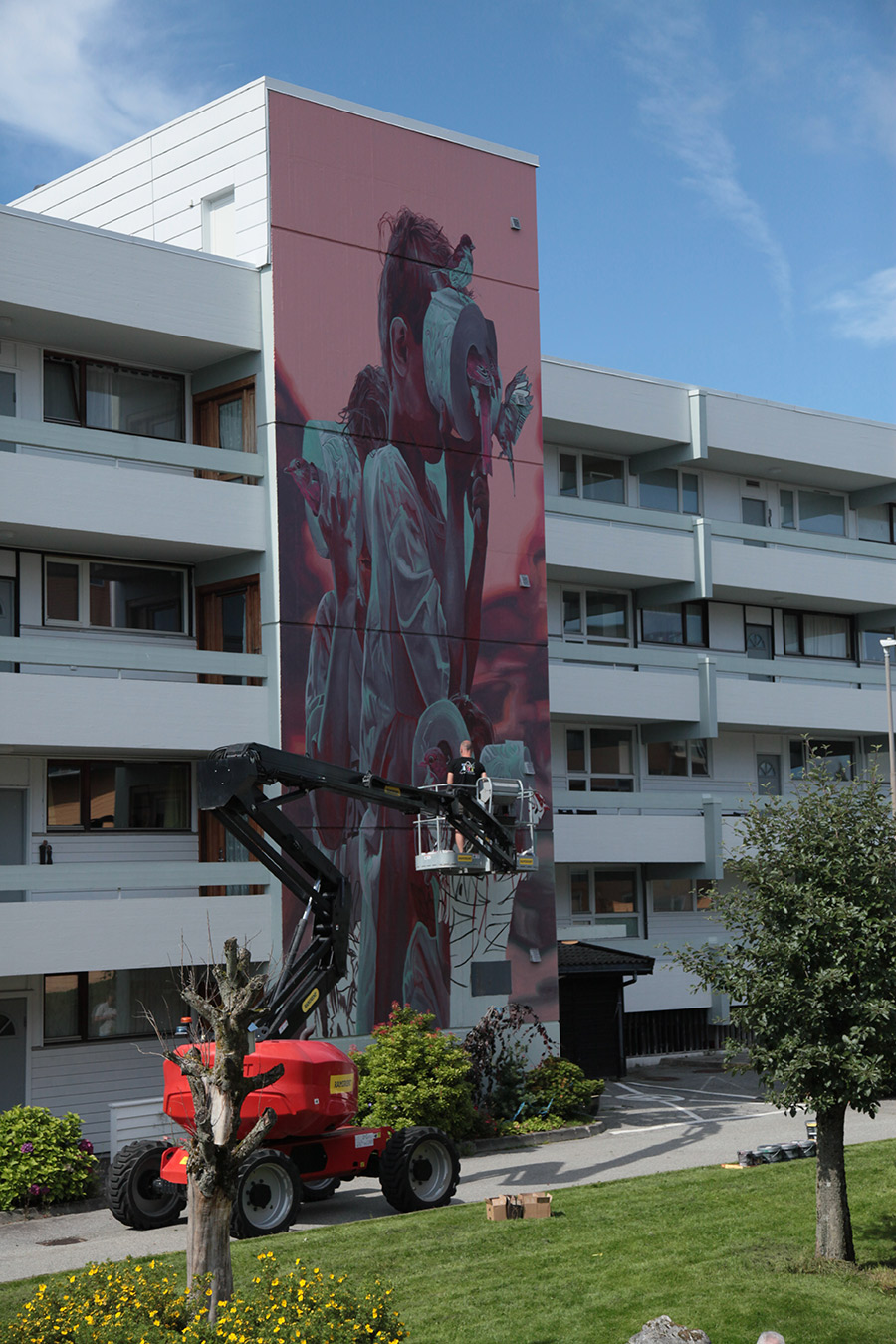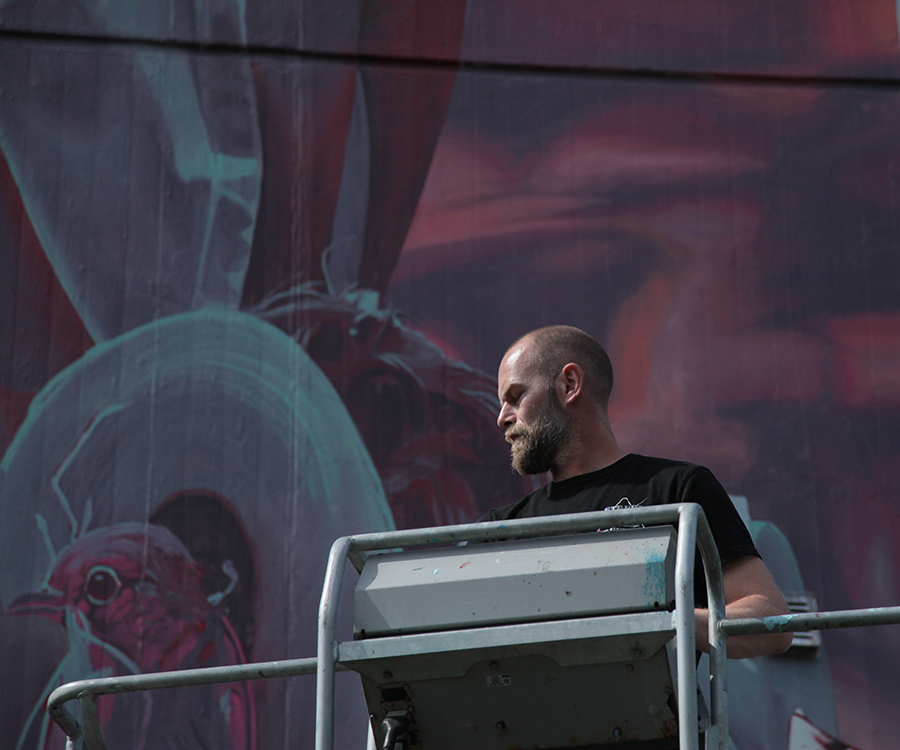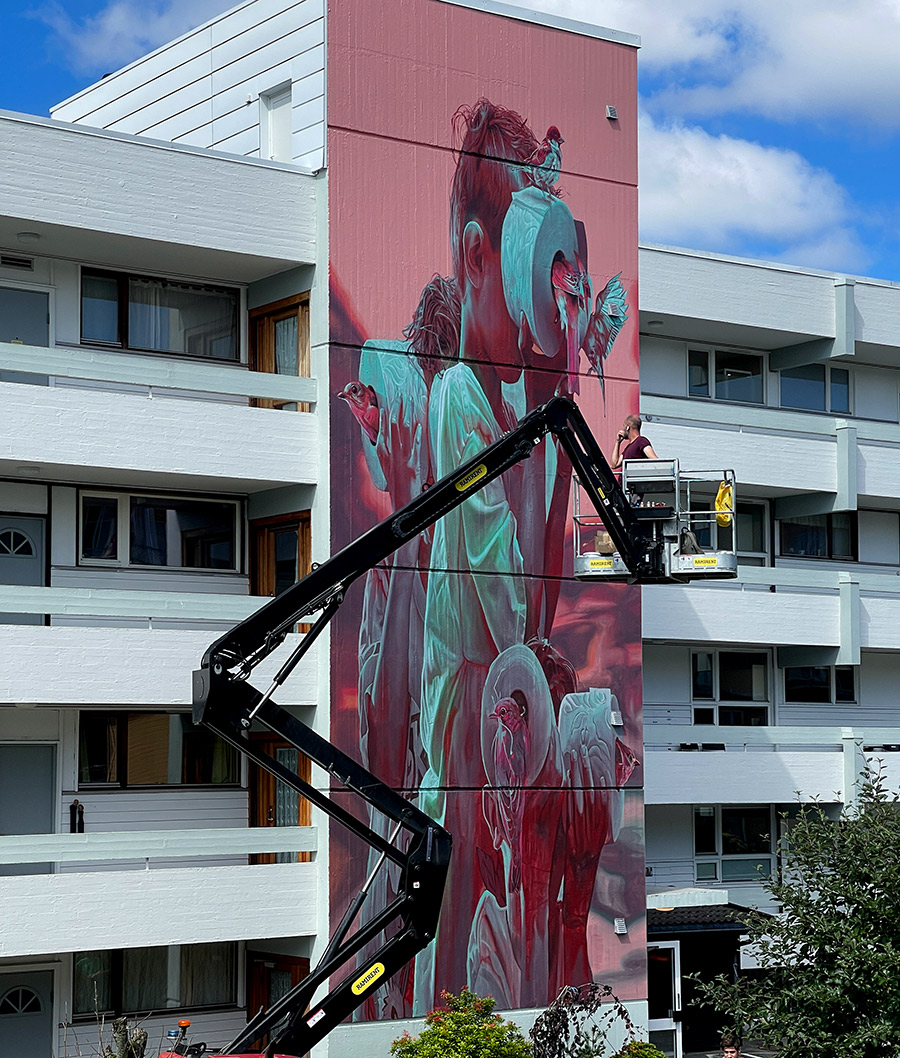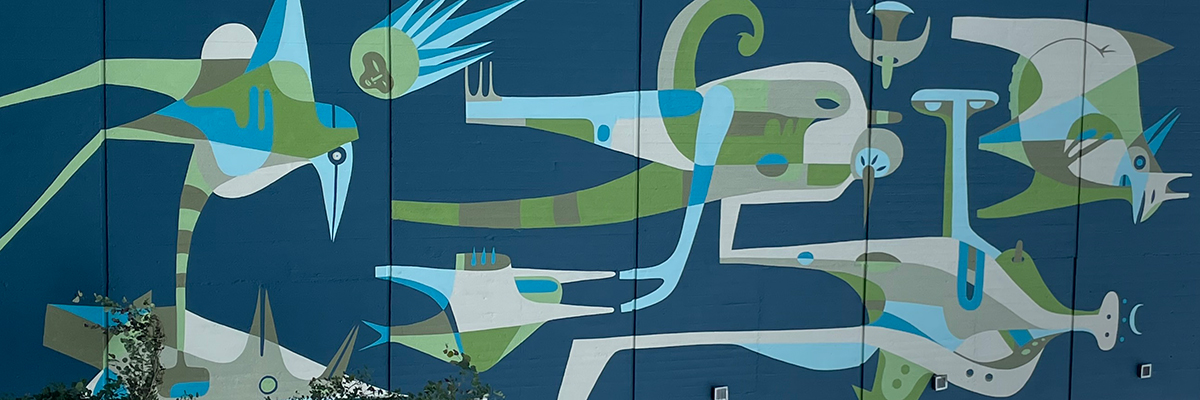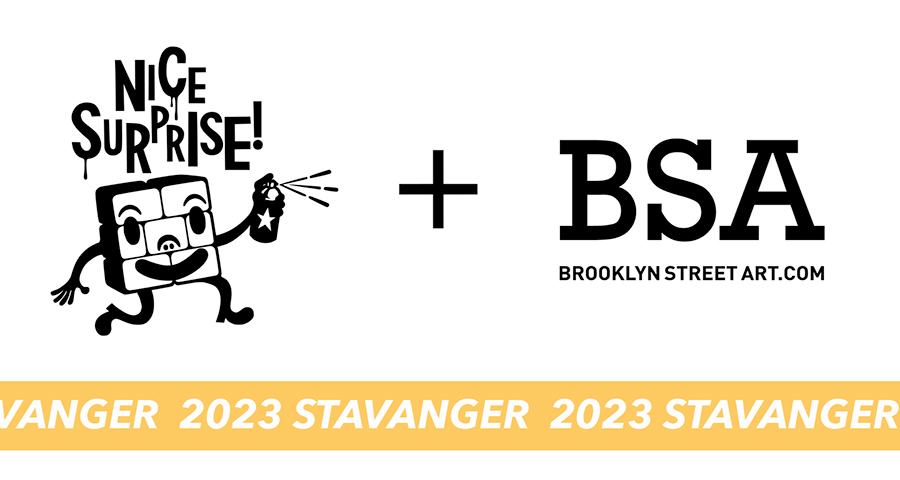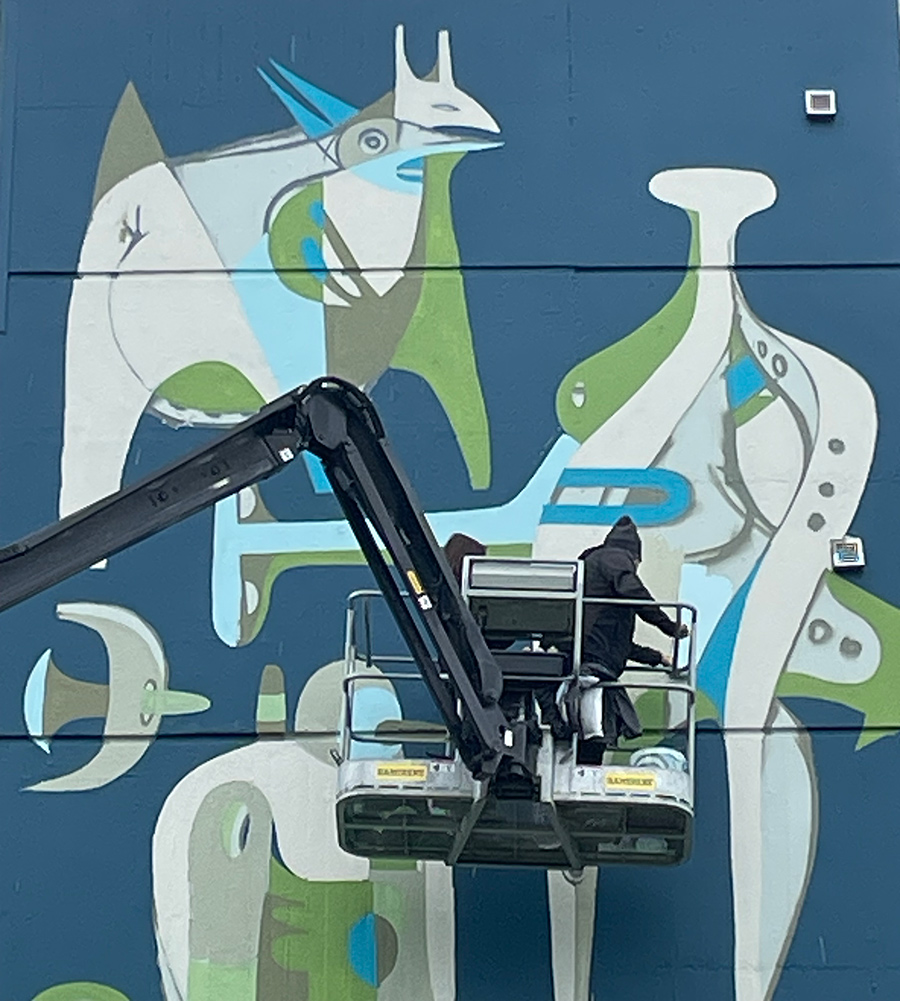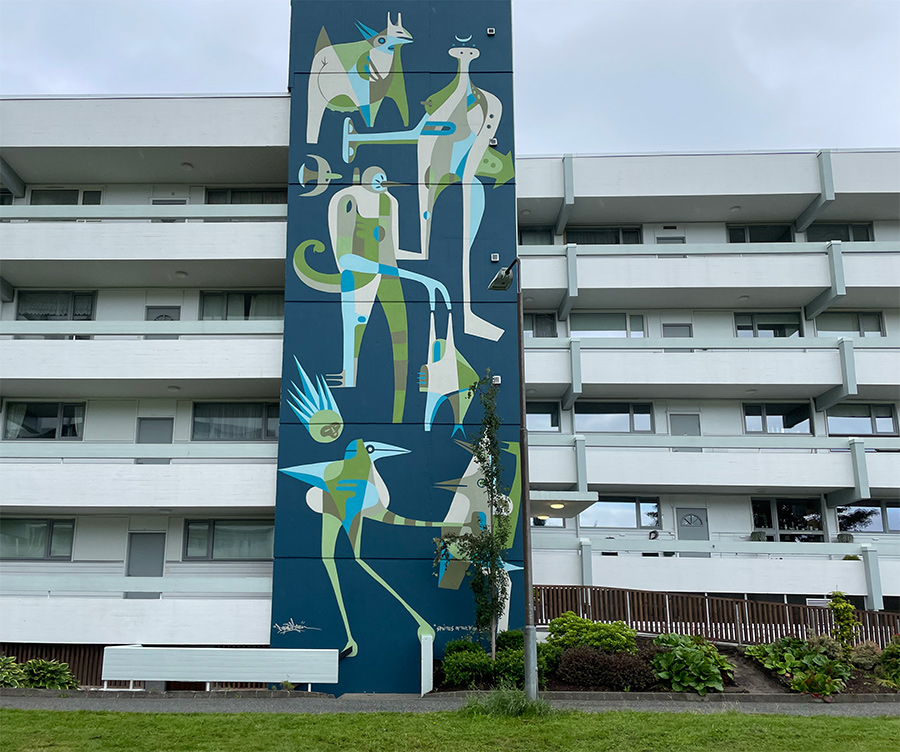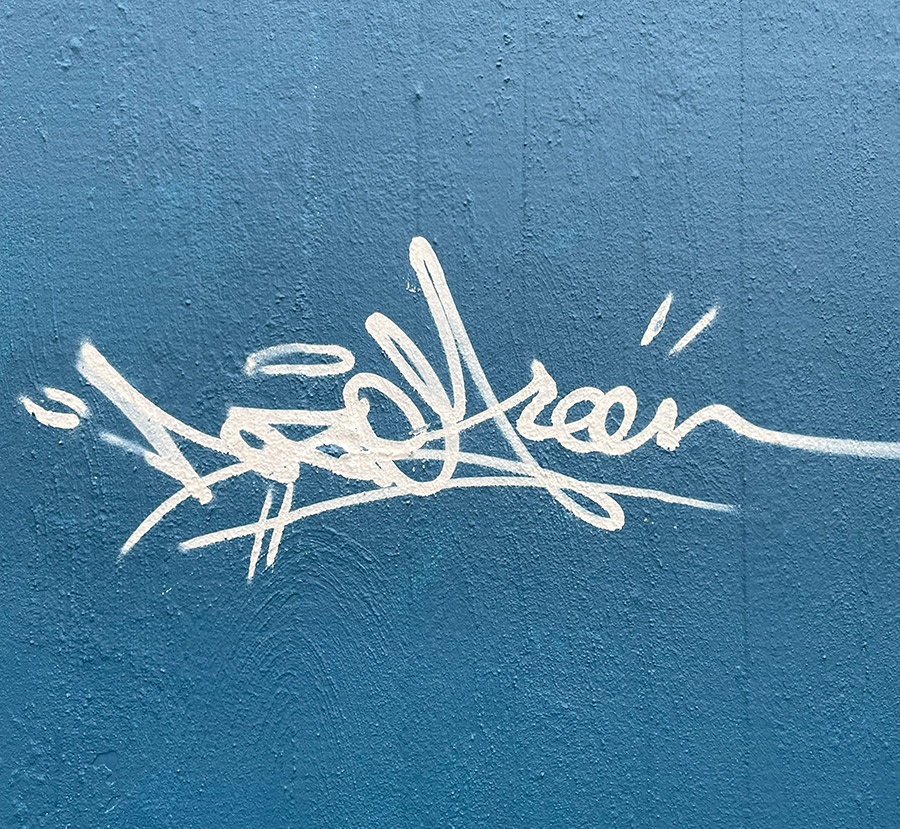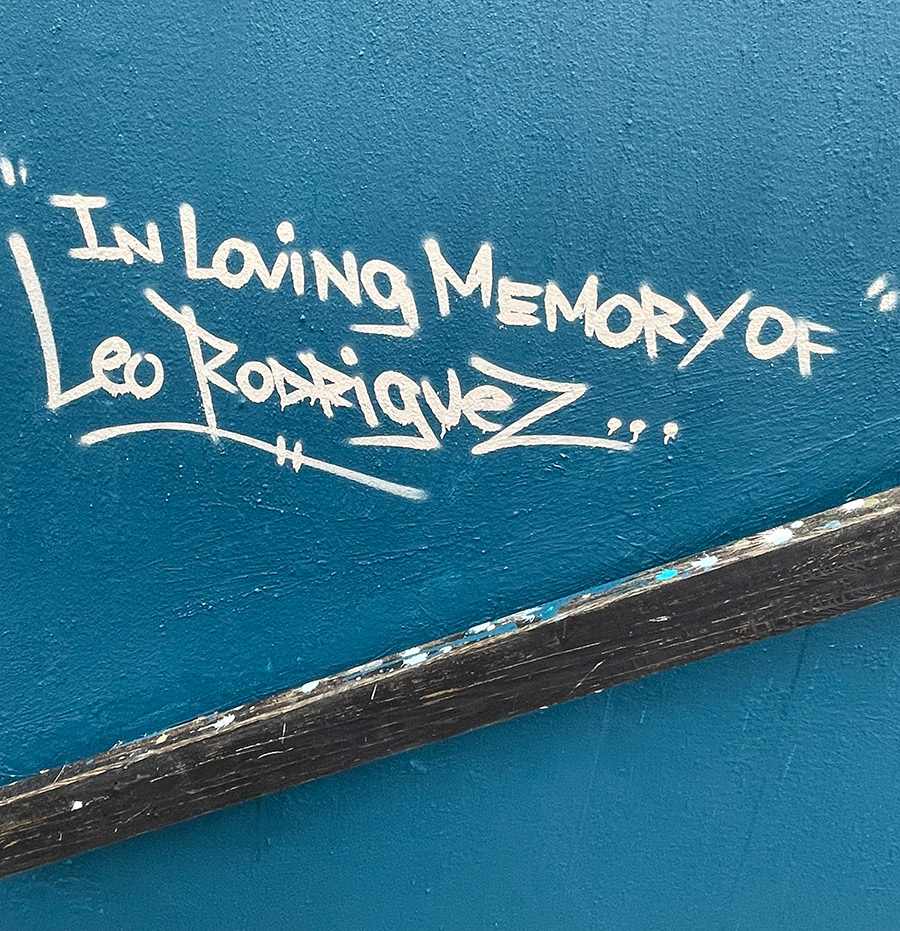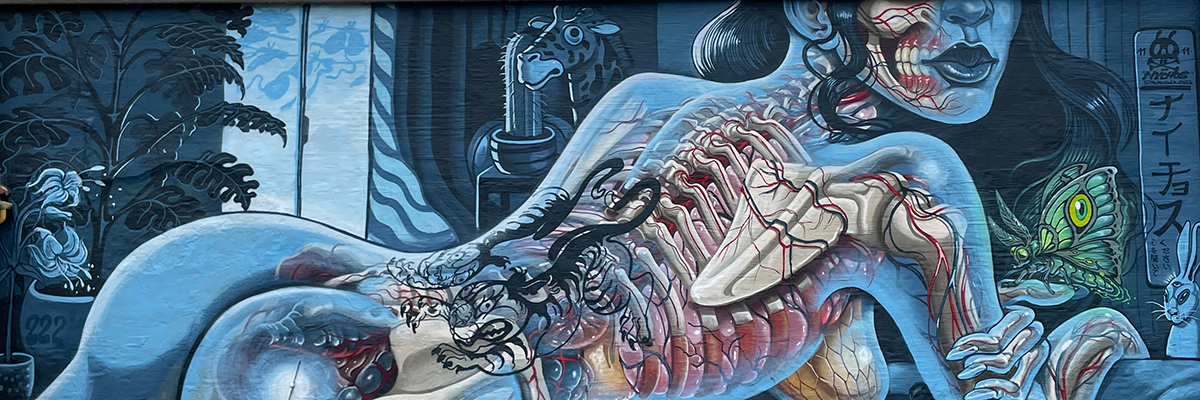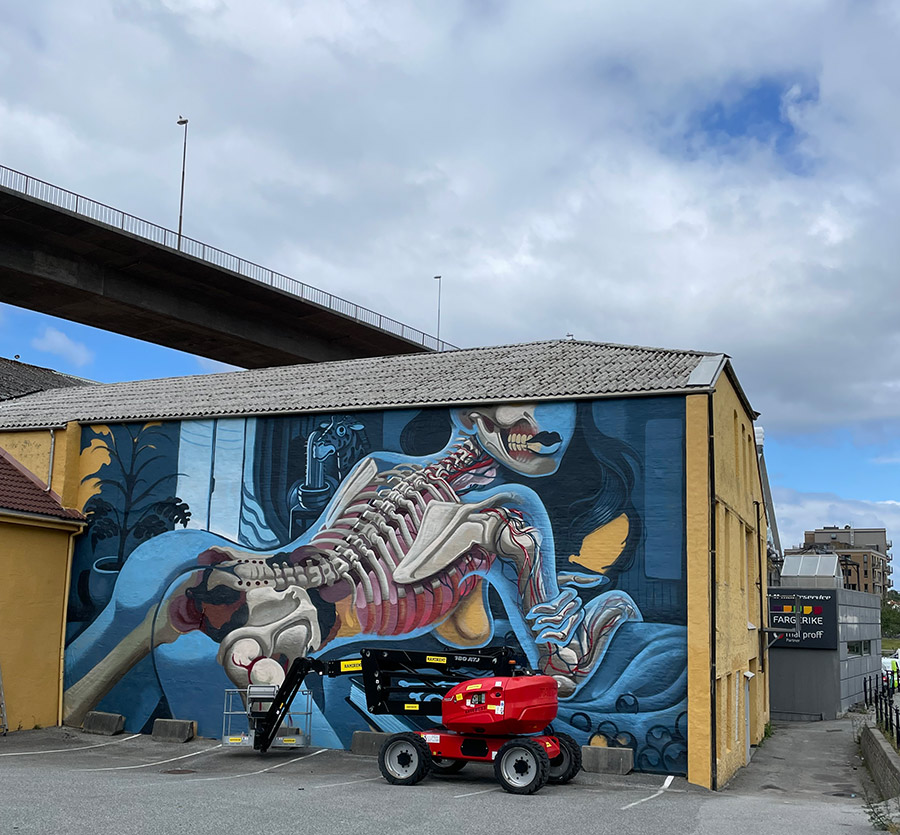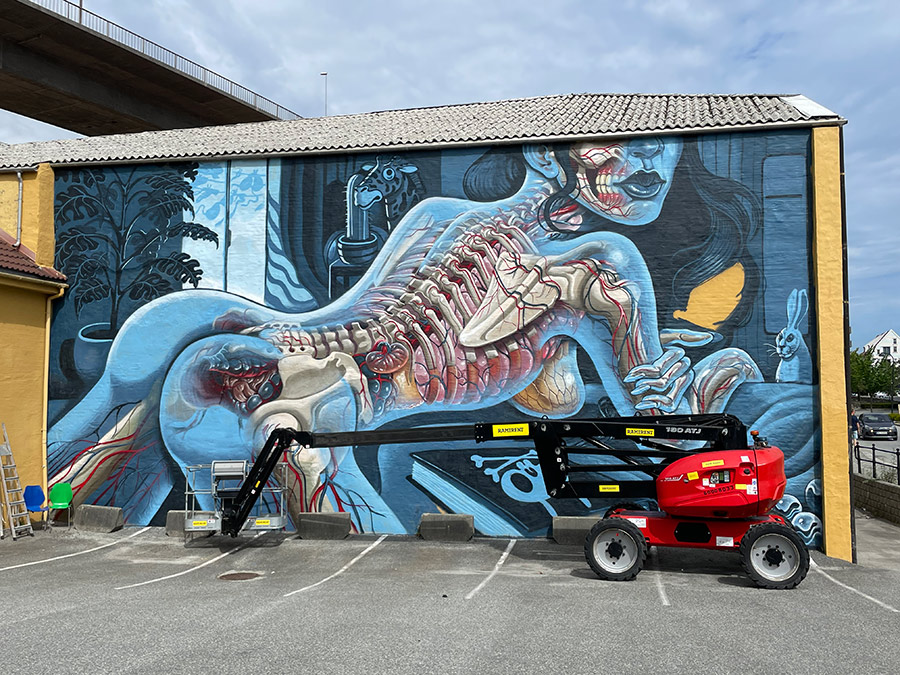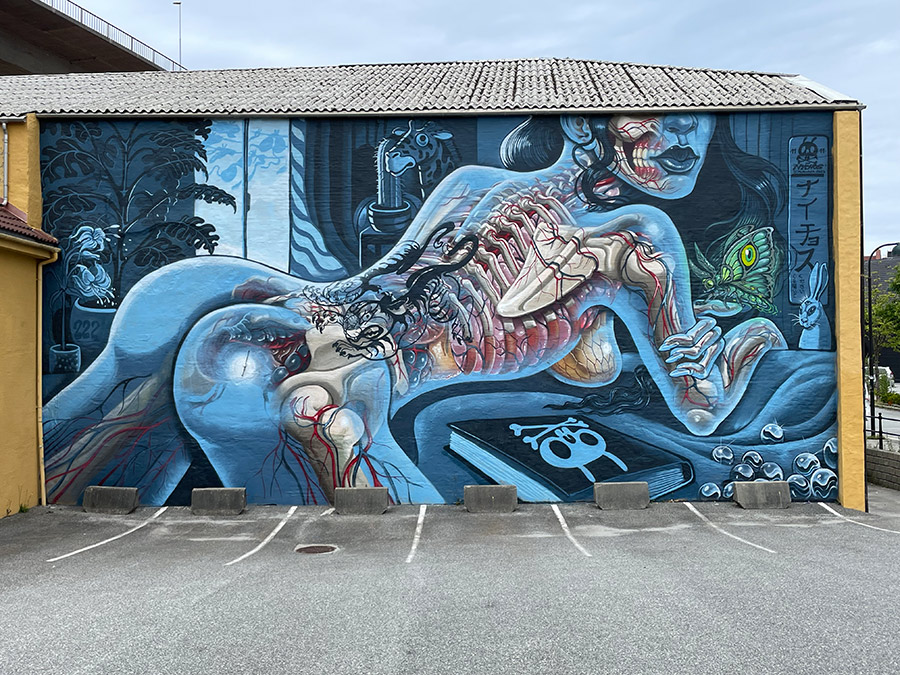Art Meets Agrarian Activism: Pøbel’s Monumental Mural Marks Stavanger’s Skyline
Internationally acclaimed Norwegian street artist Pøbel, has masterfully utilized one of Stavanger’s grandest canvases to highlight, with a touch of irony, the often-underappreciated contributions of the agricultural sector. Marking a fitting climax to Stavanger’s inaugural “Nice Surprise” street art festival, his mural seamlessly intertwines activism with the contemporary aesthetics of street art and graffiti. By repurposing public space, Pøbel adeptly sidesteps the cacophony of commercial advertising, championing a poignant message that elevates discourse to an appropriately human level, reminding us all not to overlook those who nourish society.
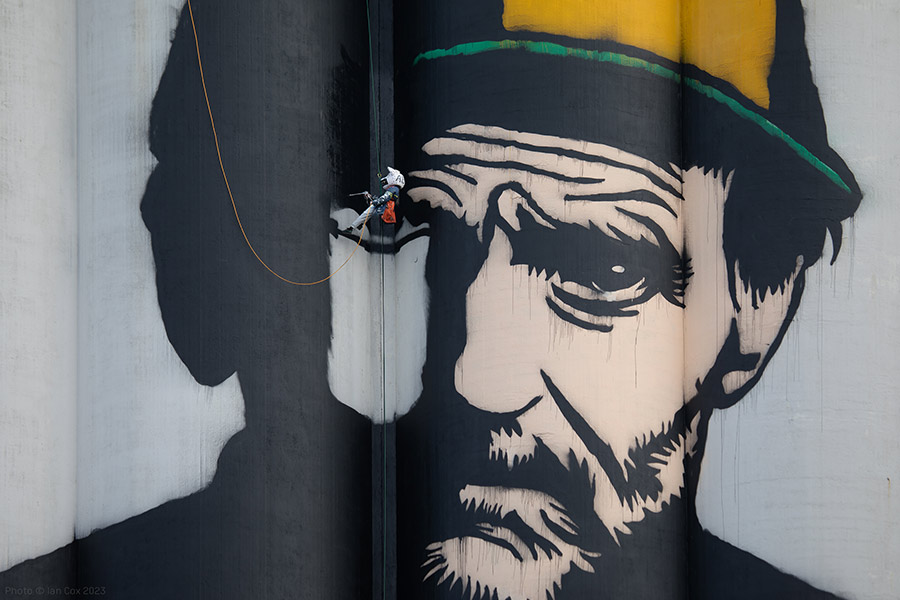
As the sun sets on the first “Nice Surprise” street art festival and the city heads into autumn, this stands as a powerful unveiling of a thought-provoking mural on an emblematic location: northern Europe’s largest silo facility, once the heart of Norway’s grain storage contingency, standing tall since 1962. This 3,600 M2 masterpiece, depicting a 60-meter-tall farmer adorned in the unmistakable green overalls of the Felleskjøpet Agri brand, poignantly holds a sign reading “Will work for food.” The choice of imagery and location is no accident. As Pøbel, the artist behind this bold and simple visual statement, reflects, “But who will provide for the providers? And do we take it for granted that the providers will and can continue to provide for us?”
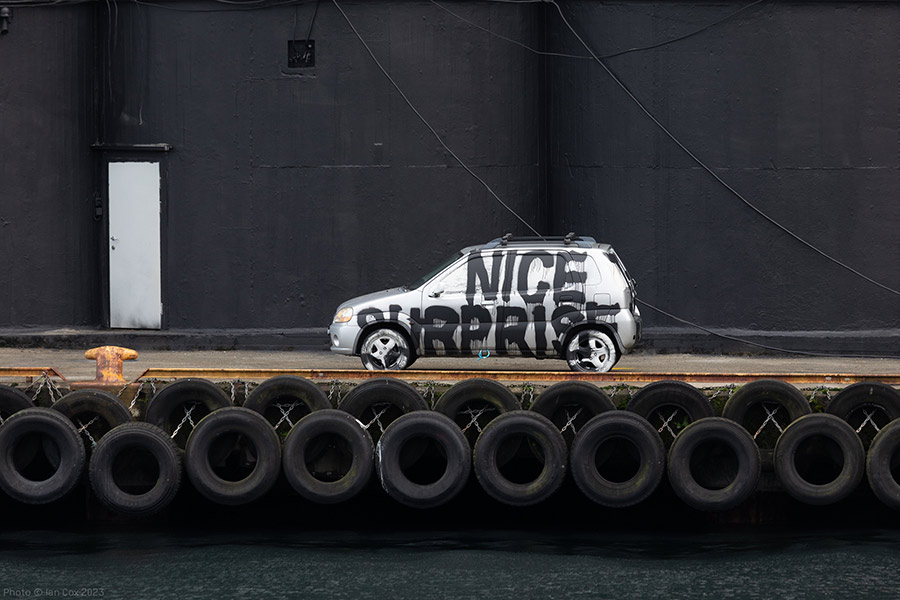
The silo’s storied history mirrors the very essence of the mural. Constructed to act as a national contingency warehouse for grains, the facility, which could handle up to 125,000 tons of grains each week during the harvest season, shifted to commercial storage after 1995. However, as global uncertainties rise, with wars, viruses, and economic tides disrupting food supply chains and escalating food prices, the debate over reverting it to its original role resonates deeply. The structure now stands at a crossroads, with discussions around its potential demolition for residential development. Pøbel’s mural underscores this uncertainty, symbolizing the broader societal challenges. As he remarks, “The building, its location history, and provider role… can act as a metaphor for many things we are facing in our society.”
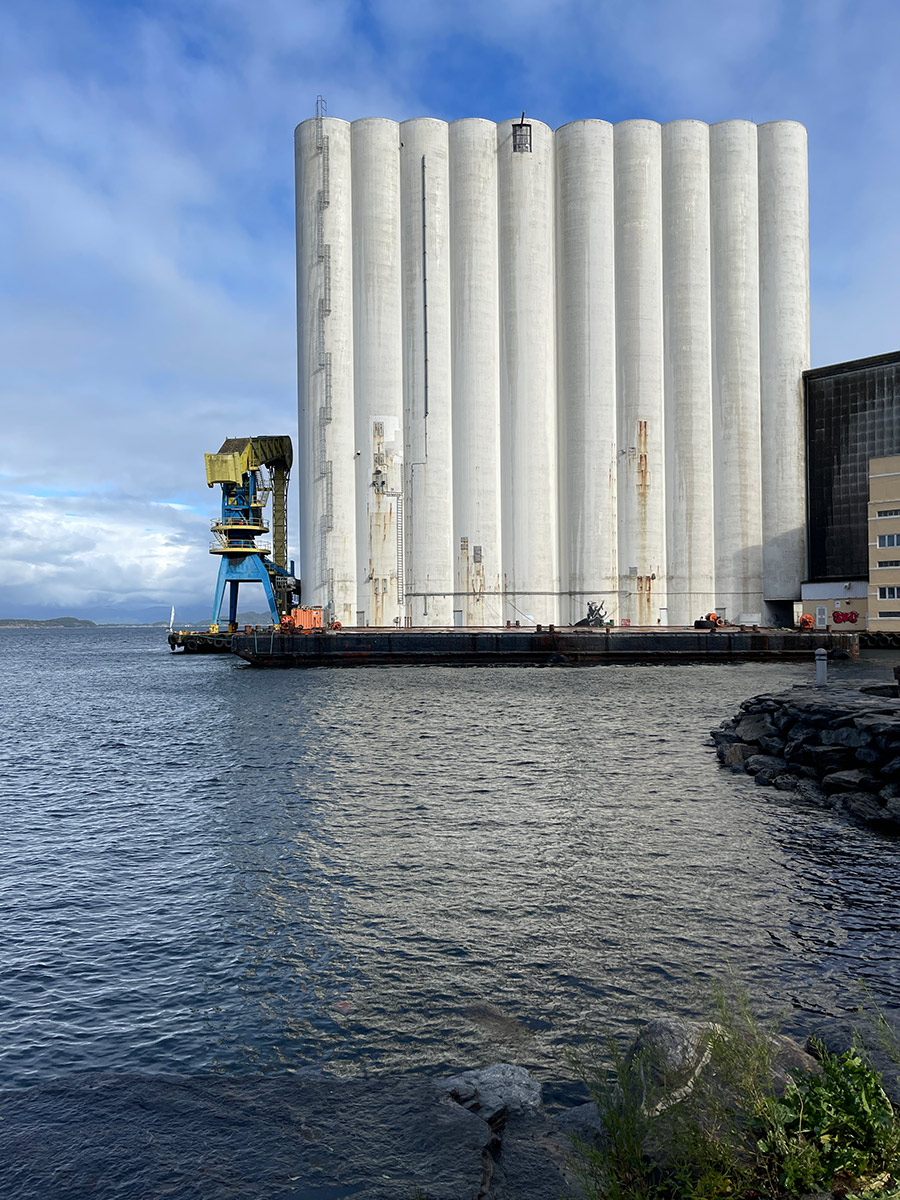
Due to global interests, Norwegian farmers have recently grappled with potential threats to their livelihoods, especially as trade agreements expose them to cheaper imports and challenge the established subsidies system. Concurrently, debates on land use and ownership regulations have stoked concerns over the future of family farms amidst a backdrop of global agricultural consolidation. As climate change reshapes Norway’s agricultural landscape, farmers seek solutions to ensure sustainability and self-sufficiency.
Pøbel appears to hope the mural is an evocative emblem of these struggles. Tor Jacob Solberg, a member of the Norwegian farming community, echoes this sentiment on Pøbel’s Facebook page, praising the artist as a hero for capturing the issues at hand. “You are an incredibly significant artist and social critic. You should know that farmers talk about you as a hero because you show the essence of many important battles food production stands in. We are forever grateful to you!” While the mural’s vastness is impressive, the underlying narrative of resilience, uncertainty, and societal reflection provides a grounding for consideration of our most basic needs and in whose hands they are.
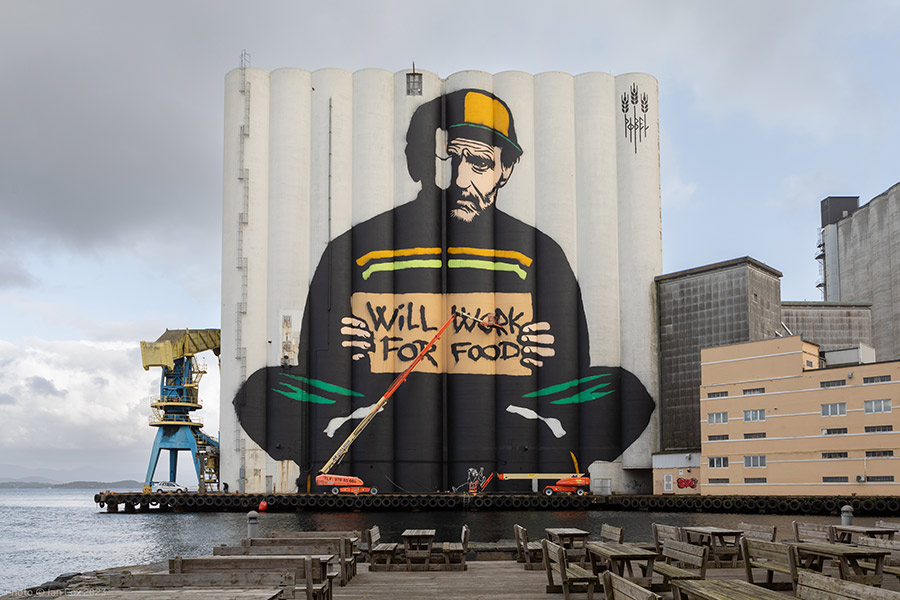
BSA spoke with Pøbel about his new project for Nice Surprise.
BSA: Back in August you told us that you were not open to making any changes to the sketch you presented for approval. Did they express any concerns about your sketch/proposal? Did they want changes made?
Pøbel: I was not directly involved in the dialogue with the building owners, but from what I understand, there was quite a bit of a discussion about whether to give me permission or not based on my sketch. I assume there were concerns that it might have been a bit too political. Finally, we got word that the permission was granted, which was a bit unexpected. For me it was important that I was able to create what I wanted to create, and that I did not have to compromise in any way based on the wishes of anyone else.
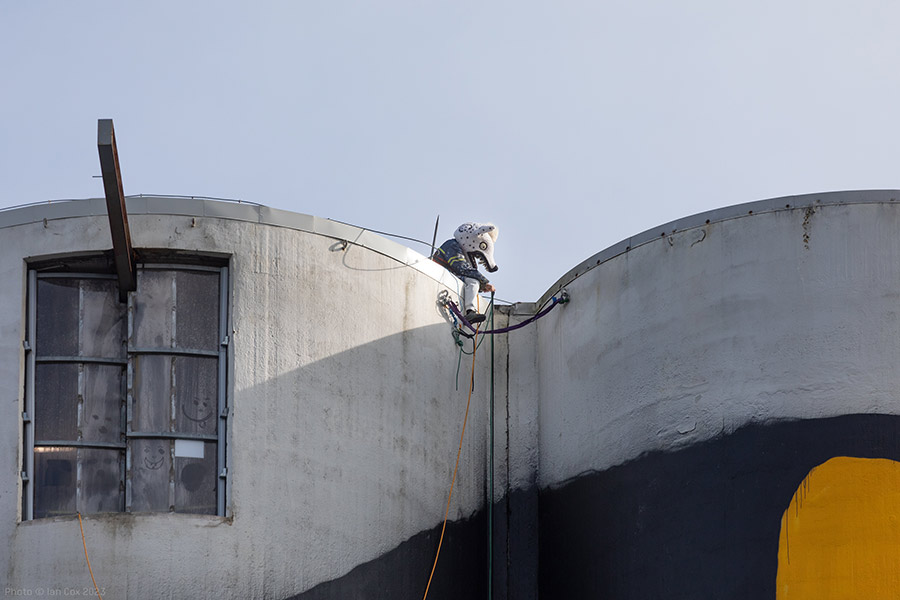
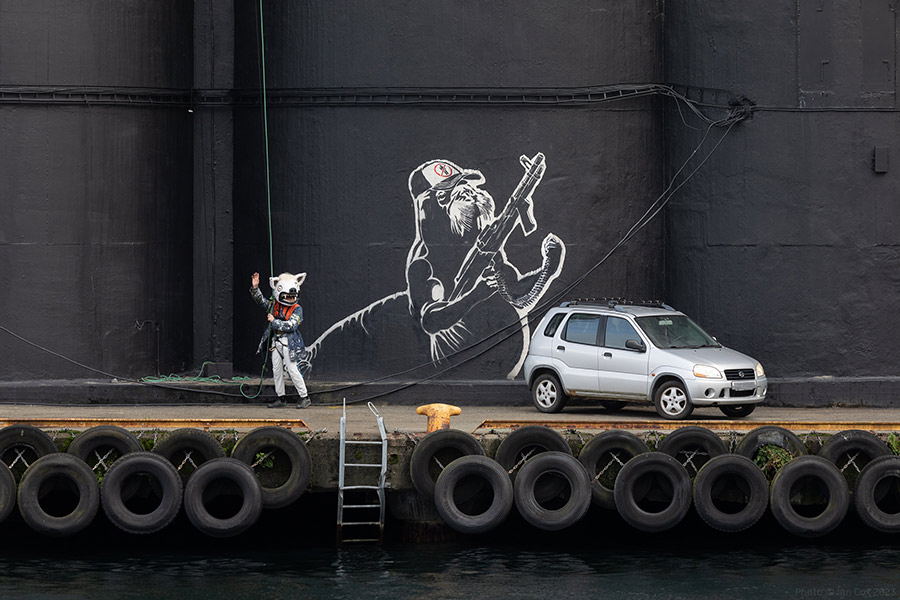
BSA: The process of moving from sketching to painting the silo couldn’t be more different. Can you tell us how it went in practice once you were in the lifts? What challenges have you experienced?
Pøbel: I guess it was only after the approval it dawned on me that I had to figure out a way to actually do it! The wall is approximately 200 feet tall, and most regular professional lifts on the marked usually have a reach of “only” 140 feet. Building a permanent scaffold would be too time-consuming and expensive since the wall is also 200 feet wide. I planned to paint it by abseiling from the top of the roof, but then, luckily at the last moment, I found a lift that could reach 192 feet.
Another challenge with the wall is that it consists of 10 silos that are cylinder shaped. This means there are basically “curves” on the wall, with a depth of up to 8 feet. The curves make it difficult to paint just a straight line, for example, because depending on your perspective (if it’s from the bottom or the top), the straight line will look bent. Equally, will the painting changes when viewing from the side.
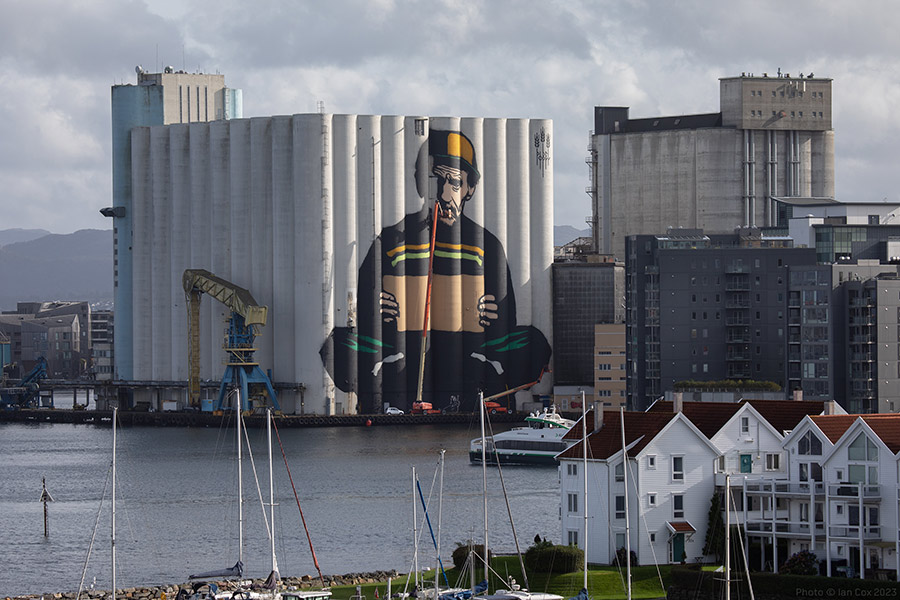
BSA: Do you remember a particular, distinctive moment that happened to you while painting the silo? – Either a personal experience or an experience with the public watching you paint?
P: It was quite an interesting experience to be almost 200 feet above ground in the big lift that was standing on the lighter (barge). It was the first time in Norway that a lift this big had been on a lighter, so no expert advice existed, but as expected, the waves made it swing many feet from side to side. The biggest challenge was other boats and ferries passing by creating big waves that would swing way too much.
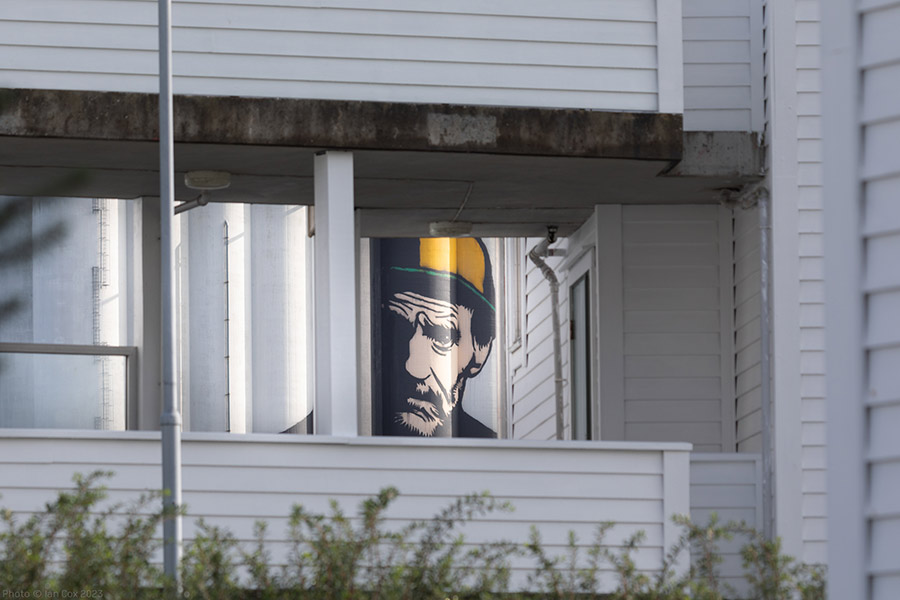
BSA: Being above it all on top of the silo and the lift must have given you a new perspective of the city, its topography, and the immensity of the ocean.
P: It was a very nice view from the top of the lift. Once I was up there, I was usually quite focused on the painting, but the first night of painting the ocean was unusually still and quiet, and at one point in the night aurora lights appeared in the cloudless sky. It is not so often there are aurora lights this far south in Norway. I took that as a good sign for the work to be done.
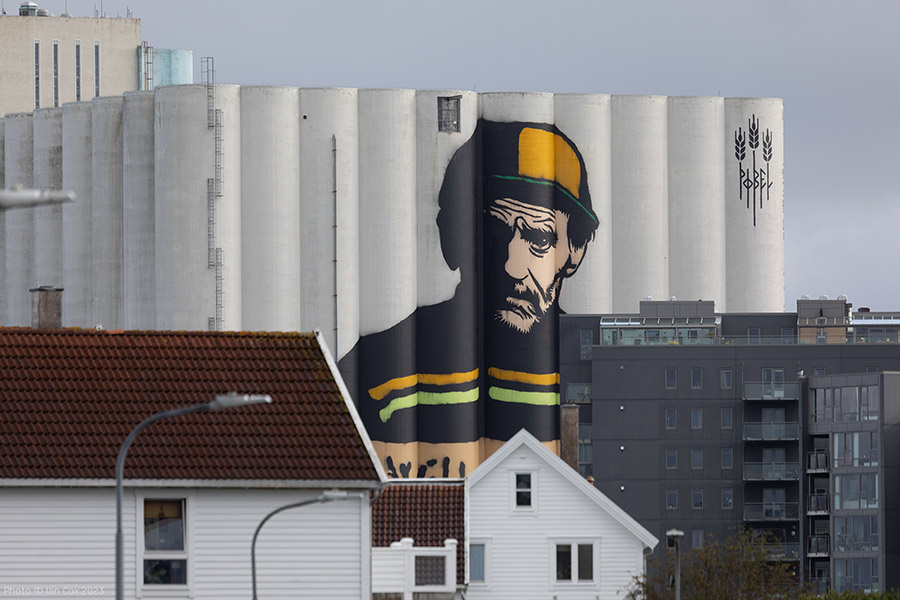
BSA: Did any farmers come to visit the site to see you while painting?
P: There were spectators from time to time, but all from a distance since the place I worked from was inside a fenced area. Many of farmers have gave praise to the painting afterwards, especially the leader of the largest farmer’s association, who wrote that the painting meant a lot to the farmers. That was unexpected, and I am glad the art could be meaningful that way to them and to the public as a whole.
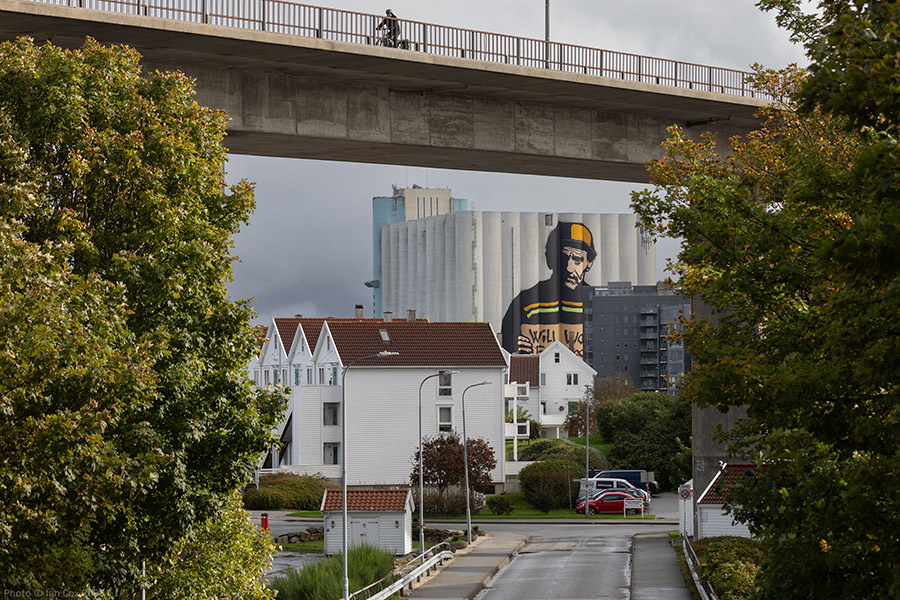
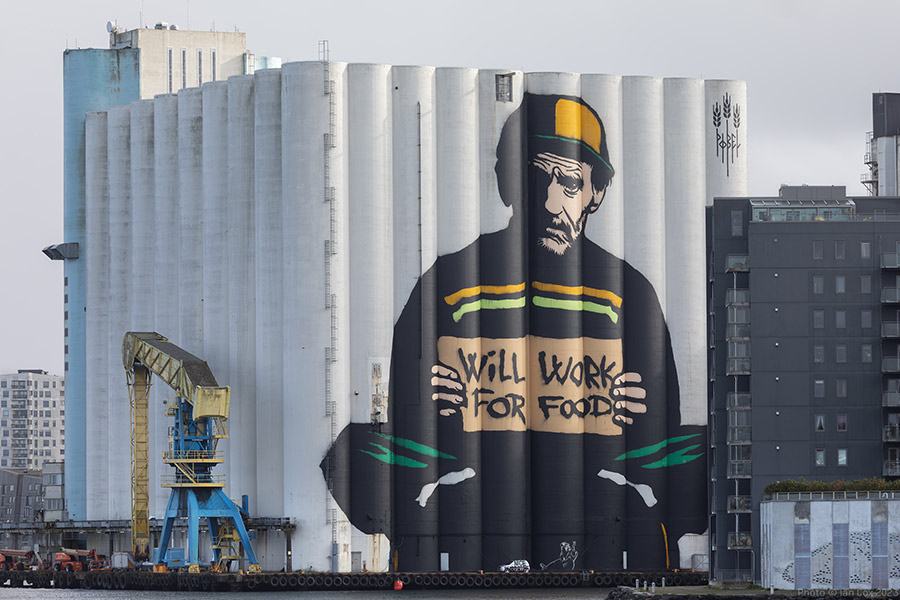
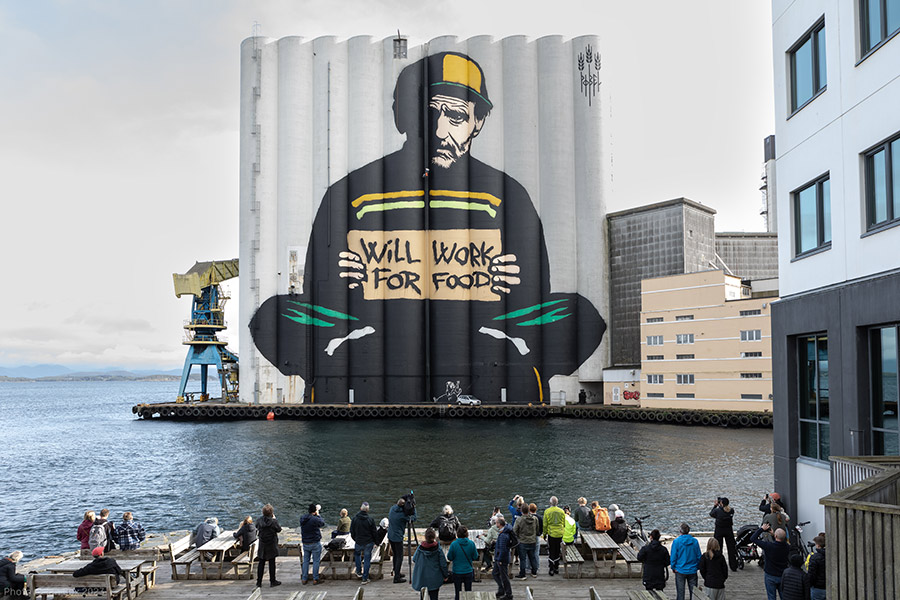
Some facts and background of the building:
Mural height: 60 meters (197 ft)
Mural width: 60 meters (197 ft)
Mural size: 3600 m2 (38 800 ft2)
Paint used: app. 800 litres (210 gallons)
The silos were built in 1962 and during the fall season it can receive up to 125 000 tons of grains each week. It was built to be a national contingency warehouse for grains and was used for that up until 1995. After this it has been used for commercial storage of grains. The current owners want to demolish and move it and convert the area into a residential area. However, with the recent war in Ukraine, energy crisis and increased food costs, debates to make it a national contingency warehouse for grains once again is an ongoing debate.
 BROOKLYN STREET ART LOVES YOU MORE EVERY DAY
BROOKLYN STREET ART LOVES YOU MORE EVERY DAY